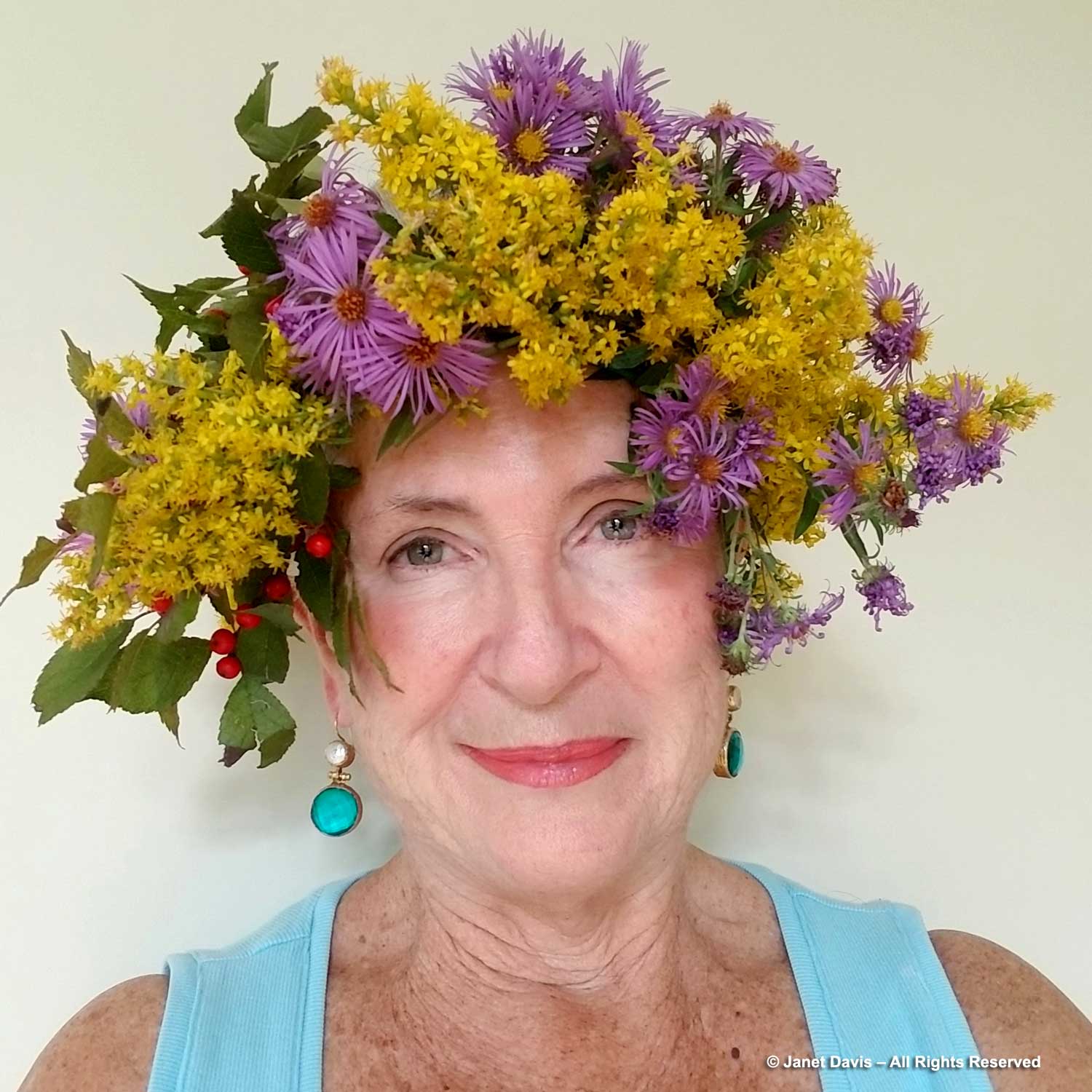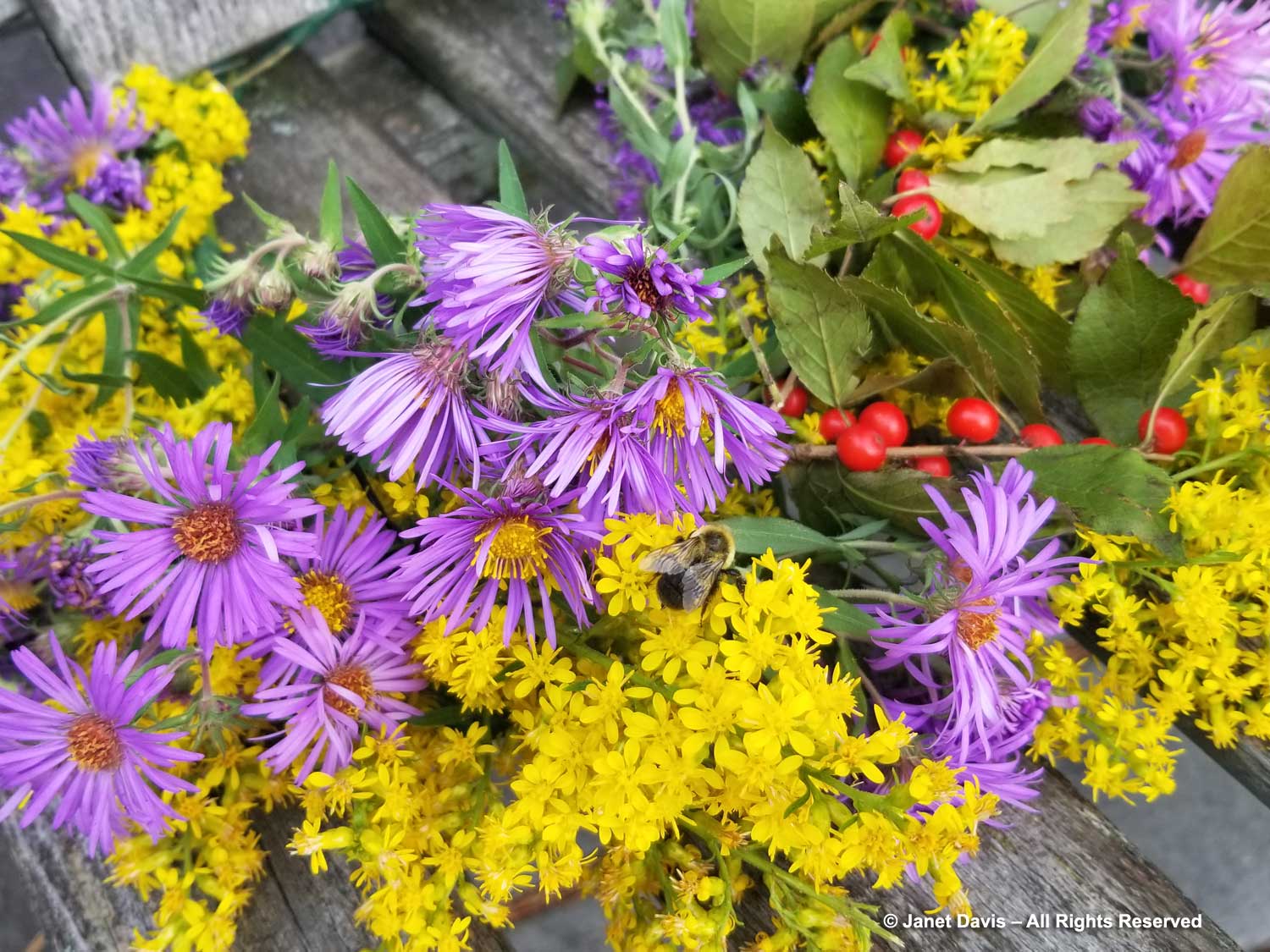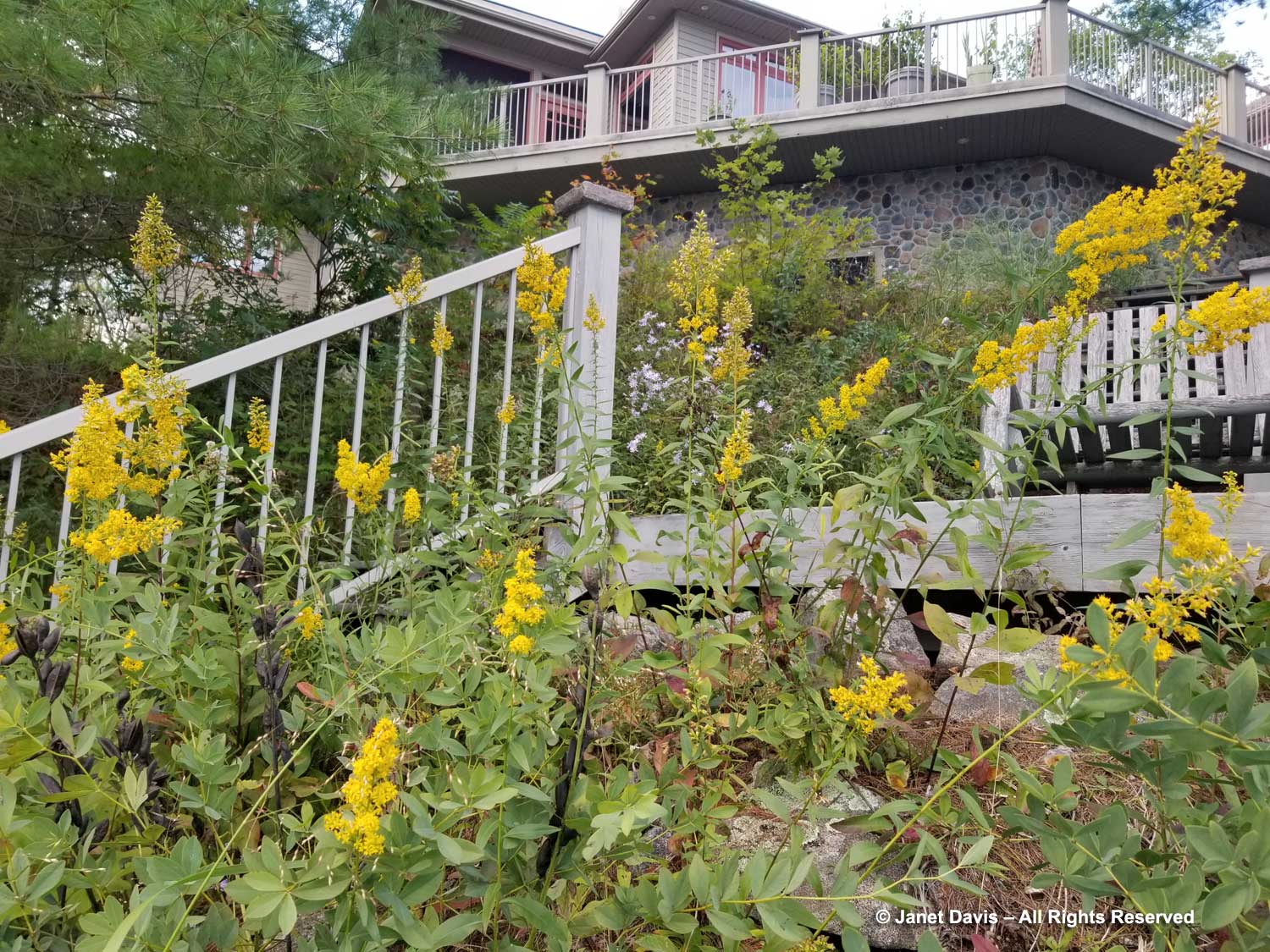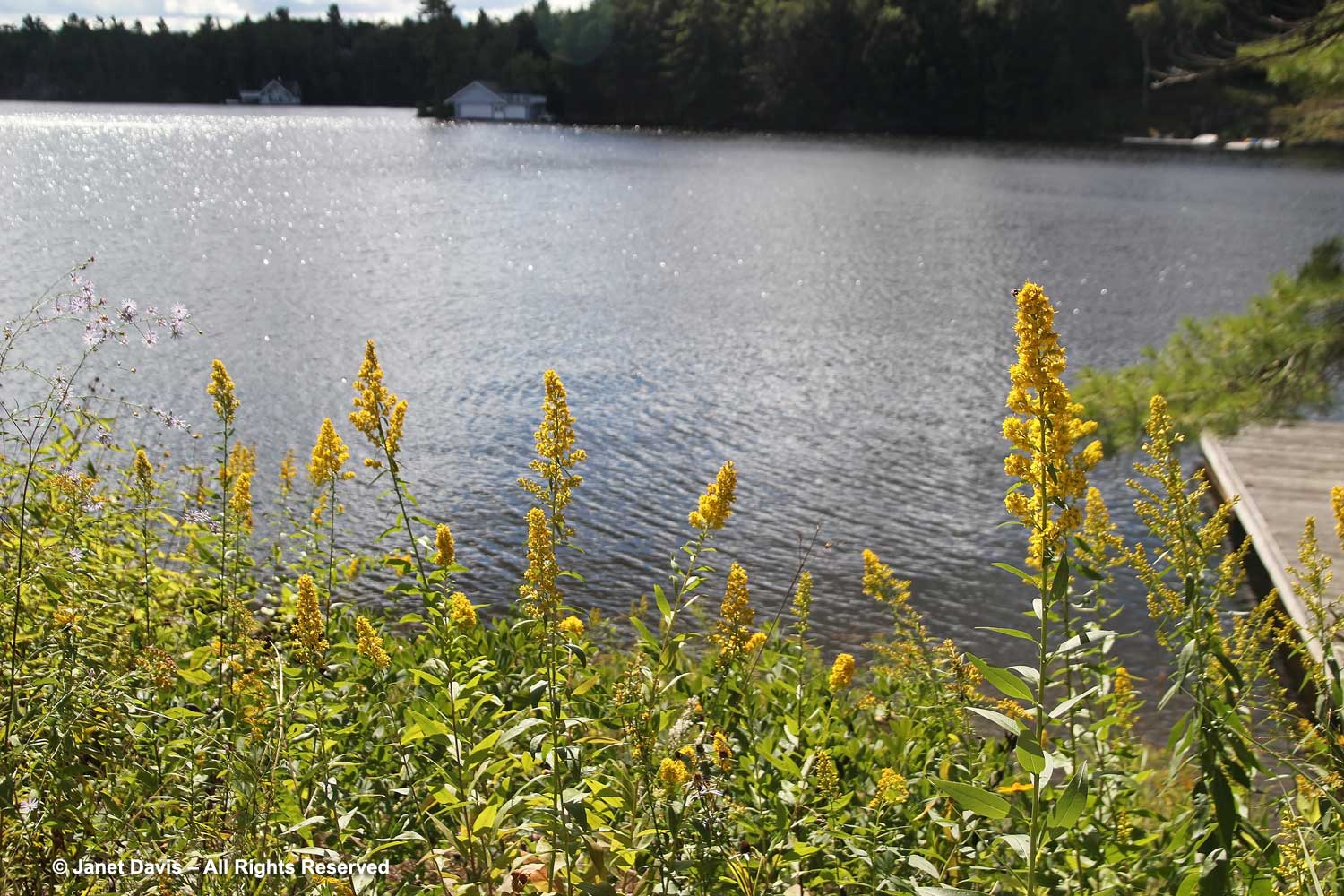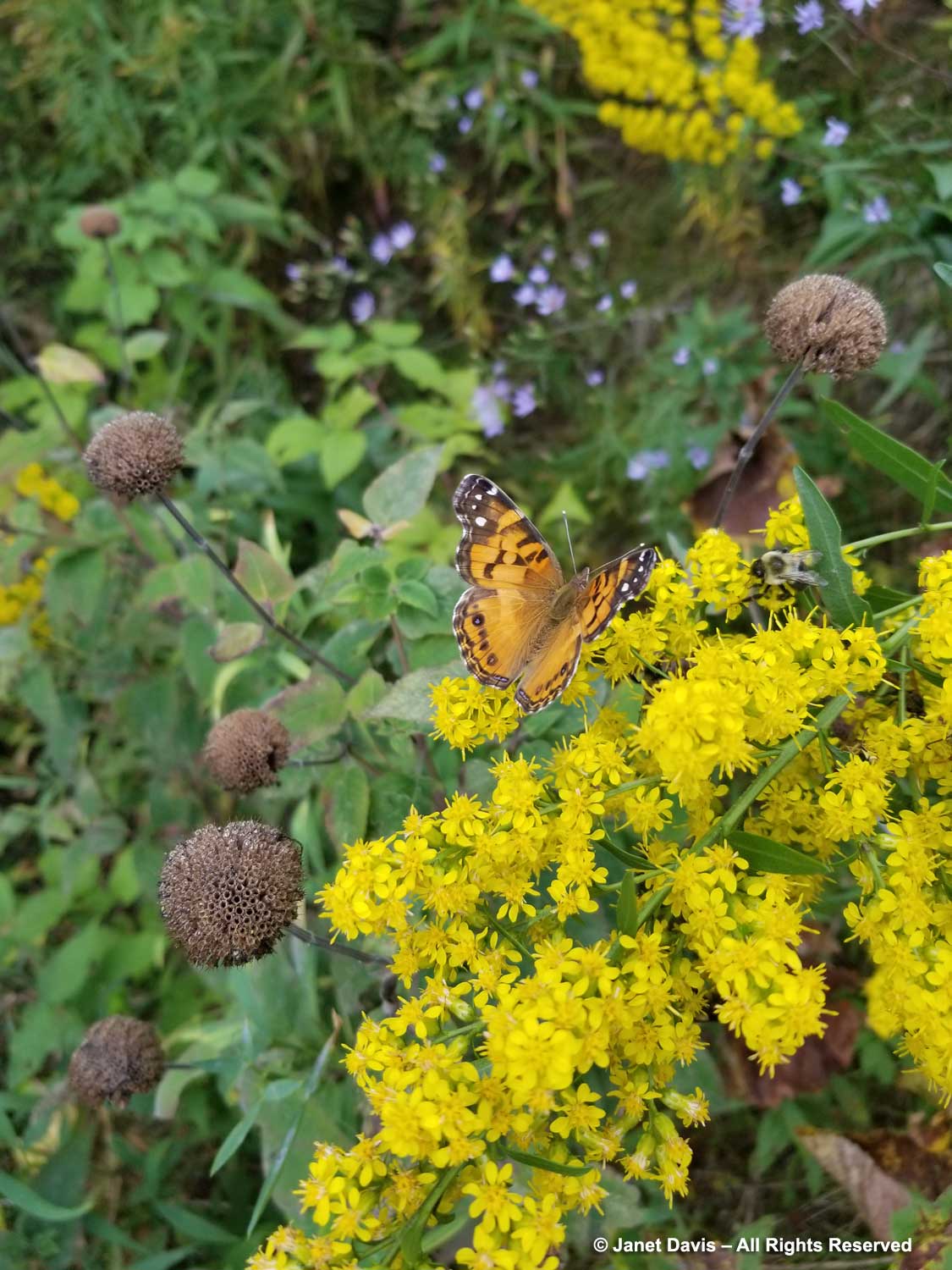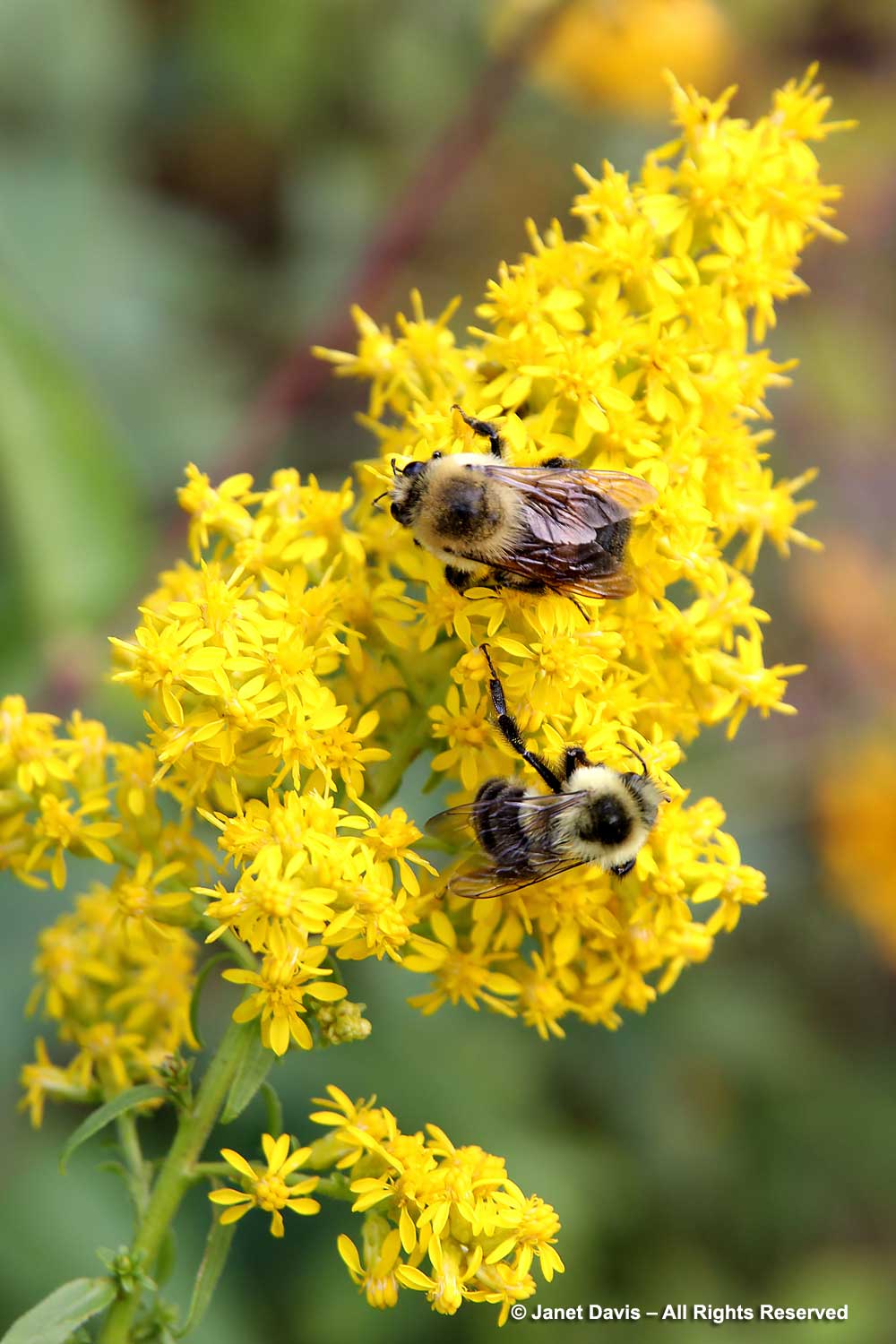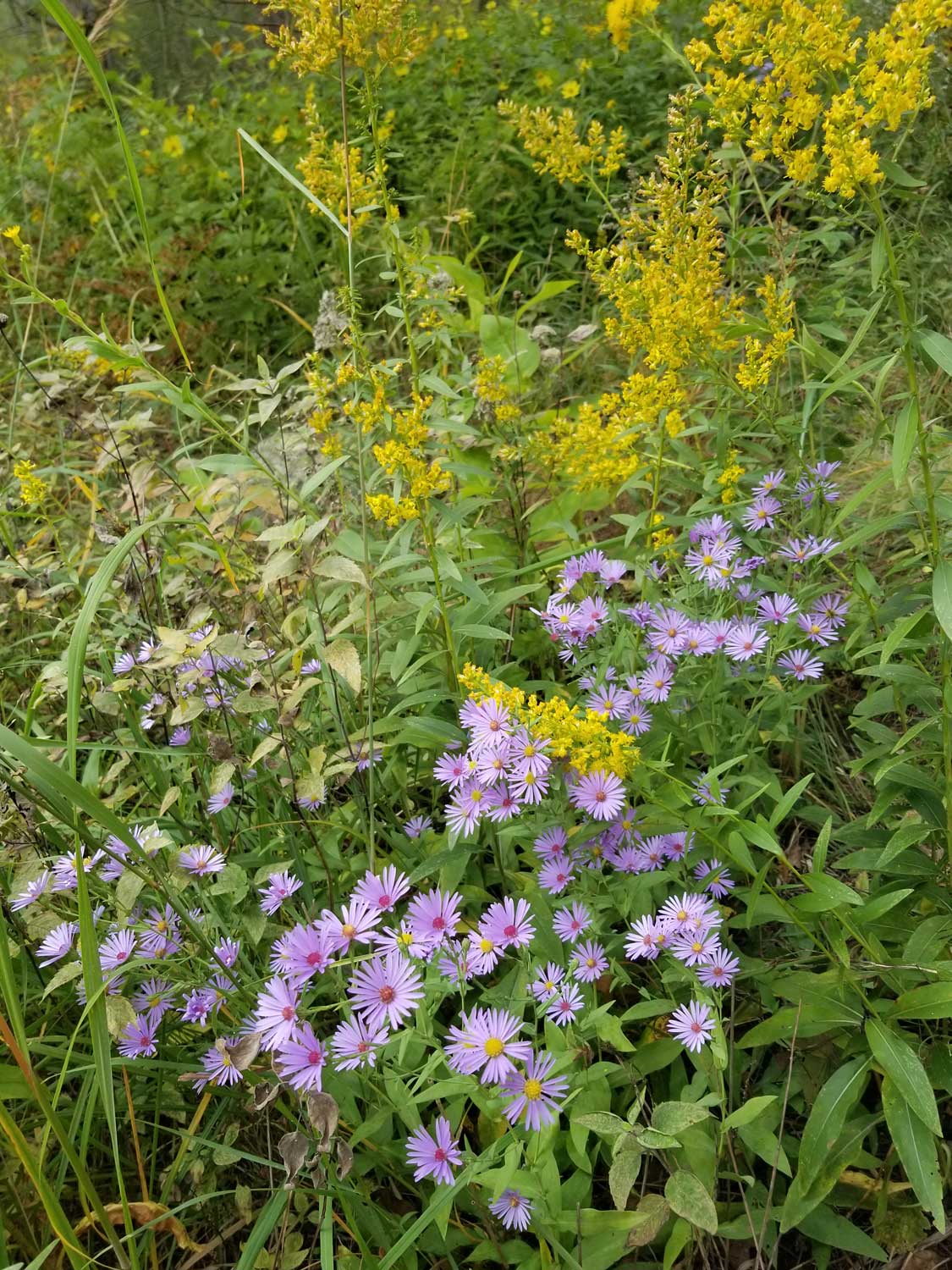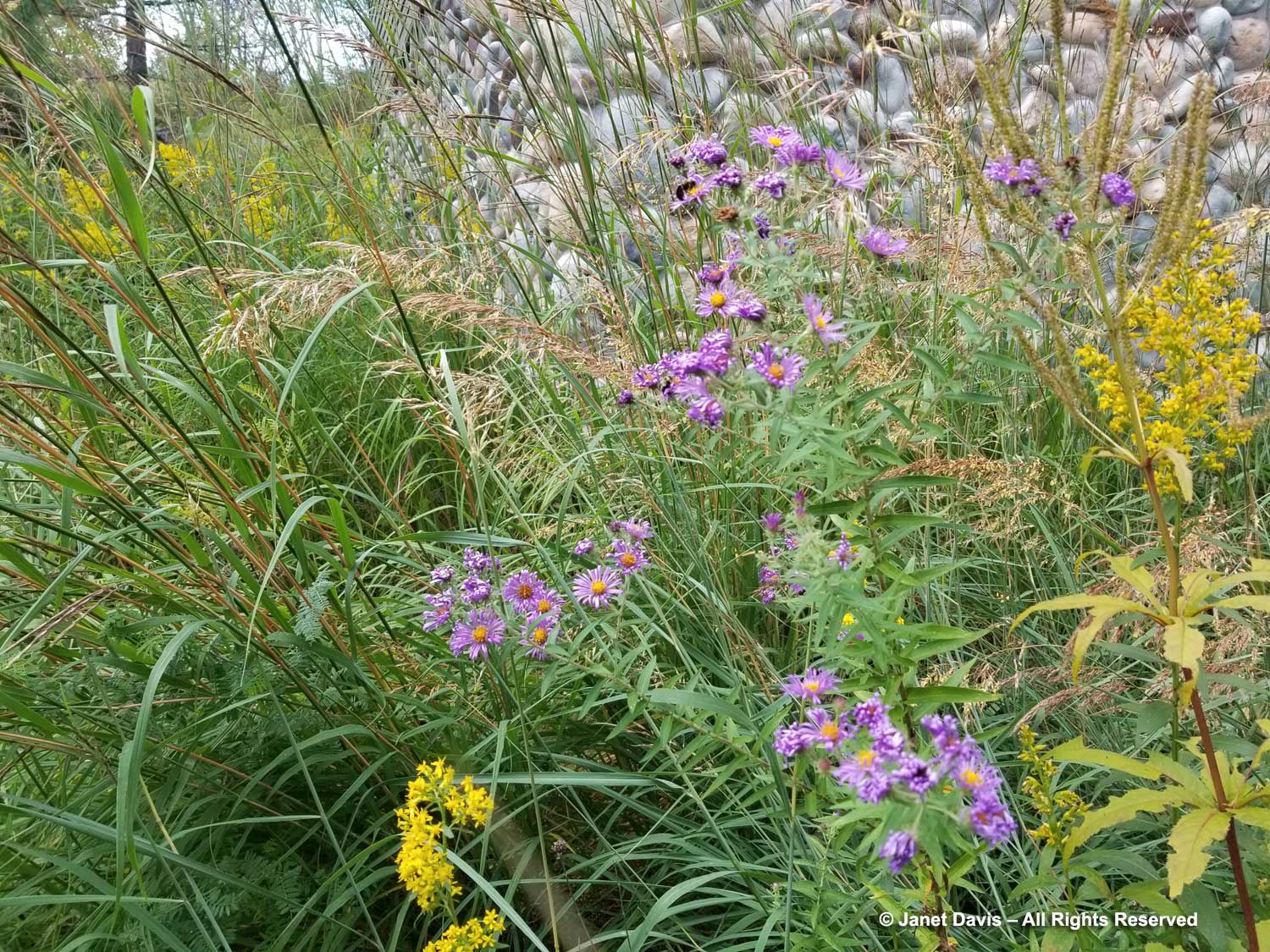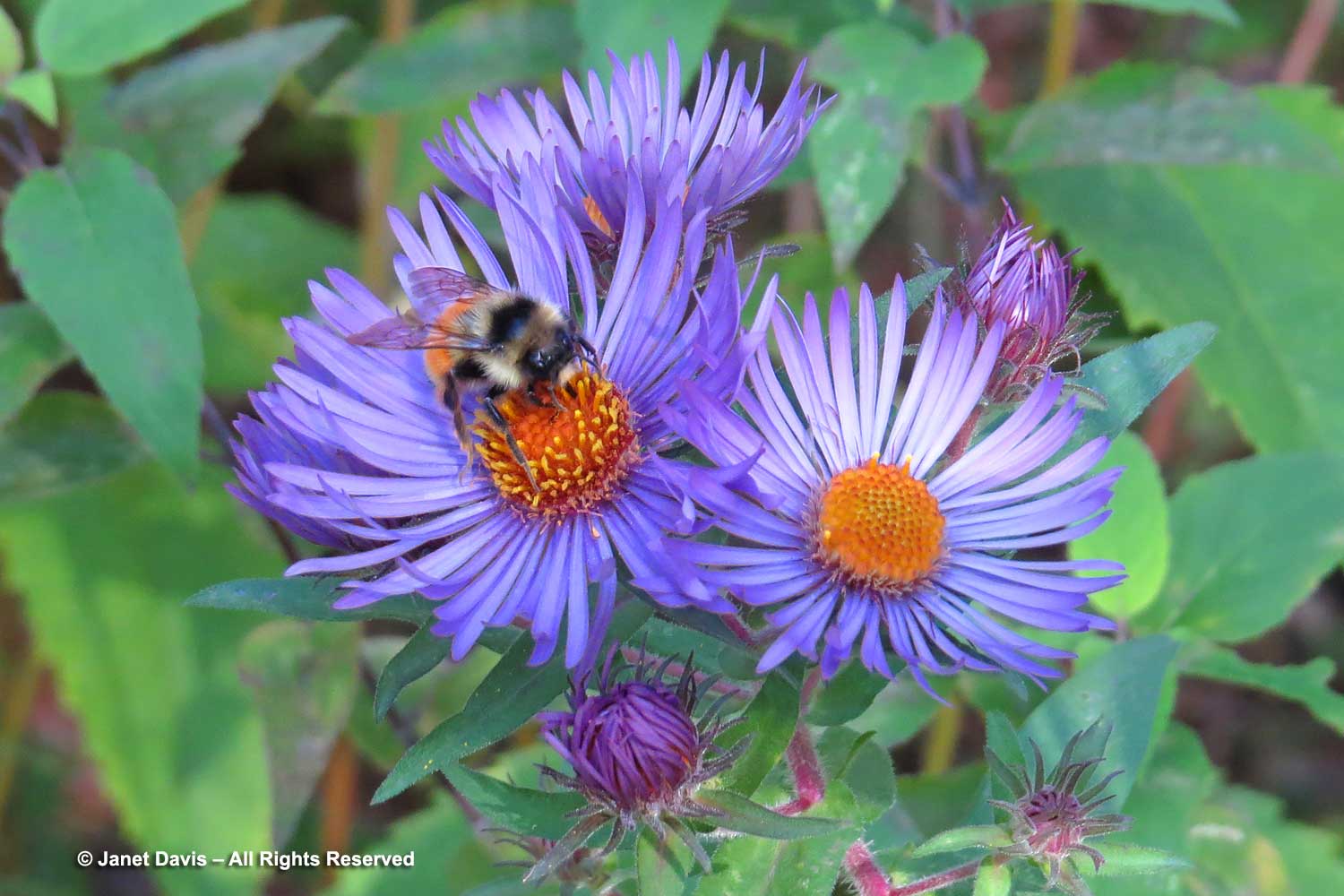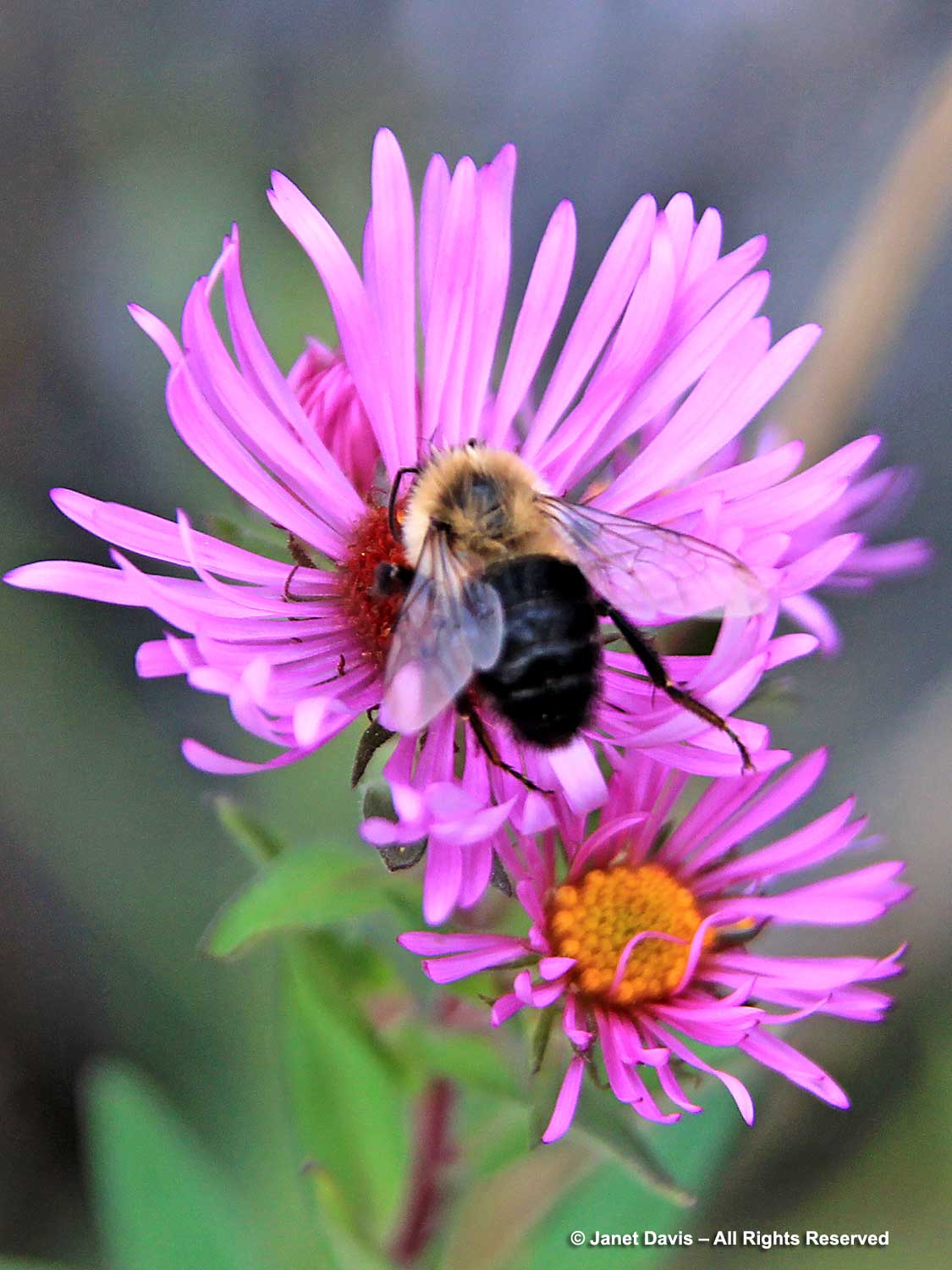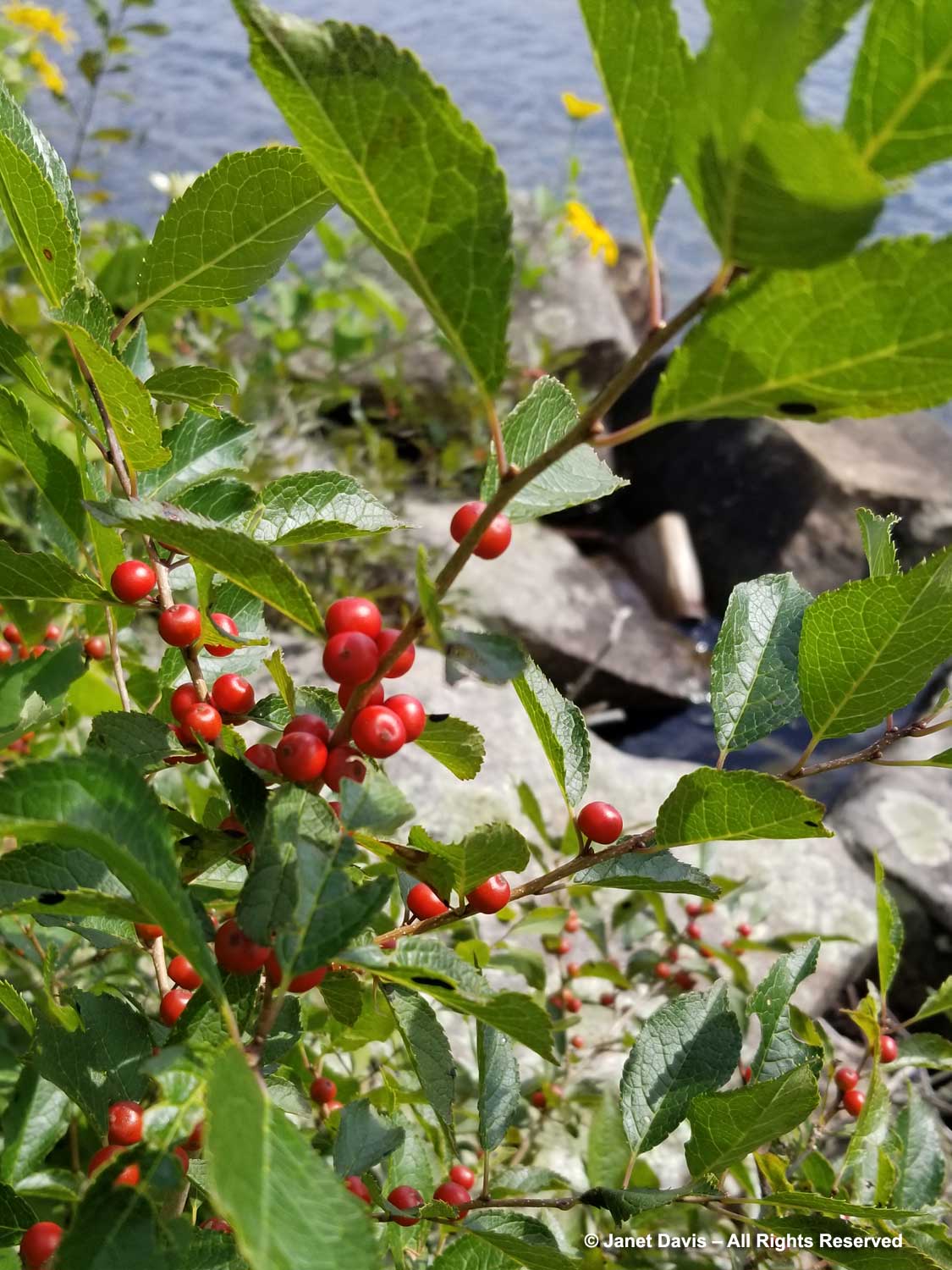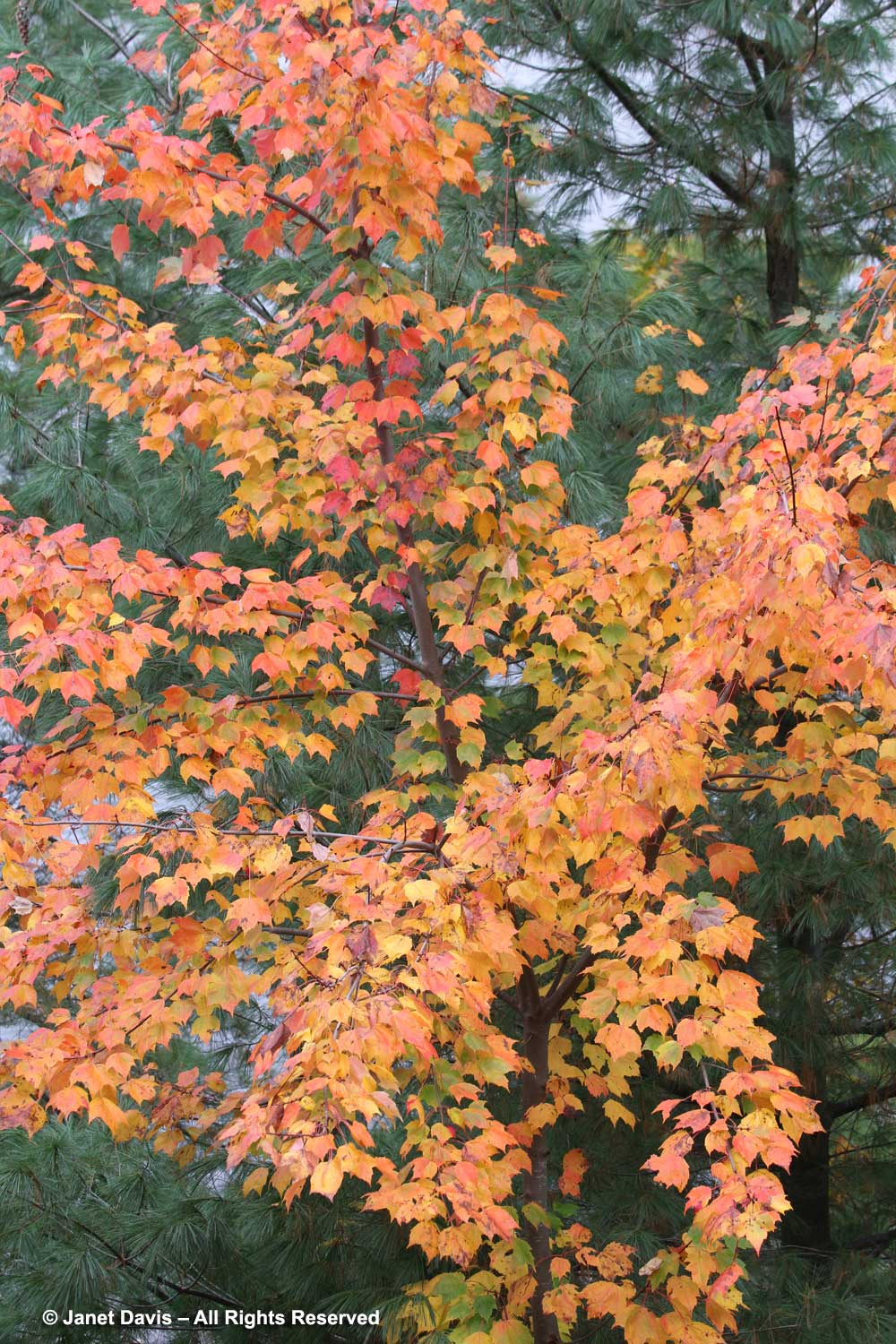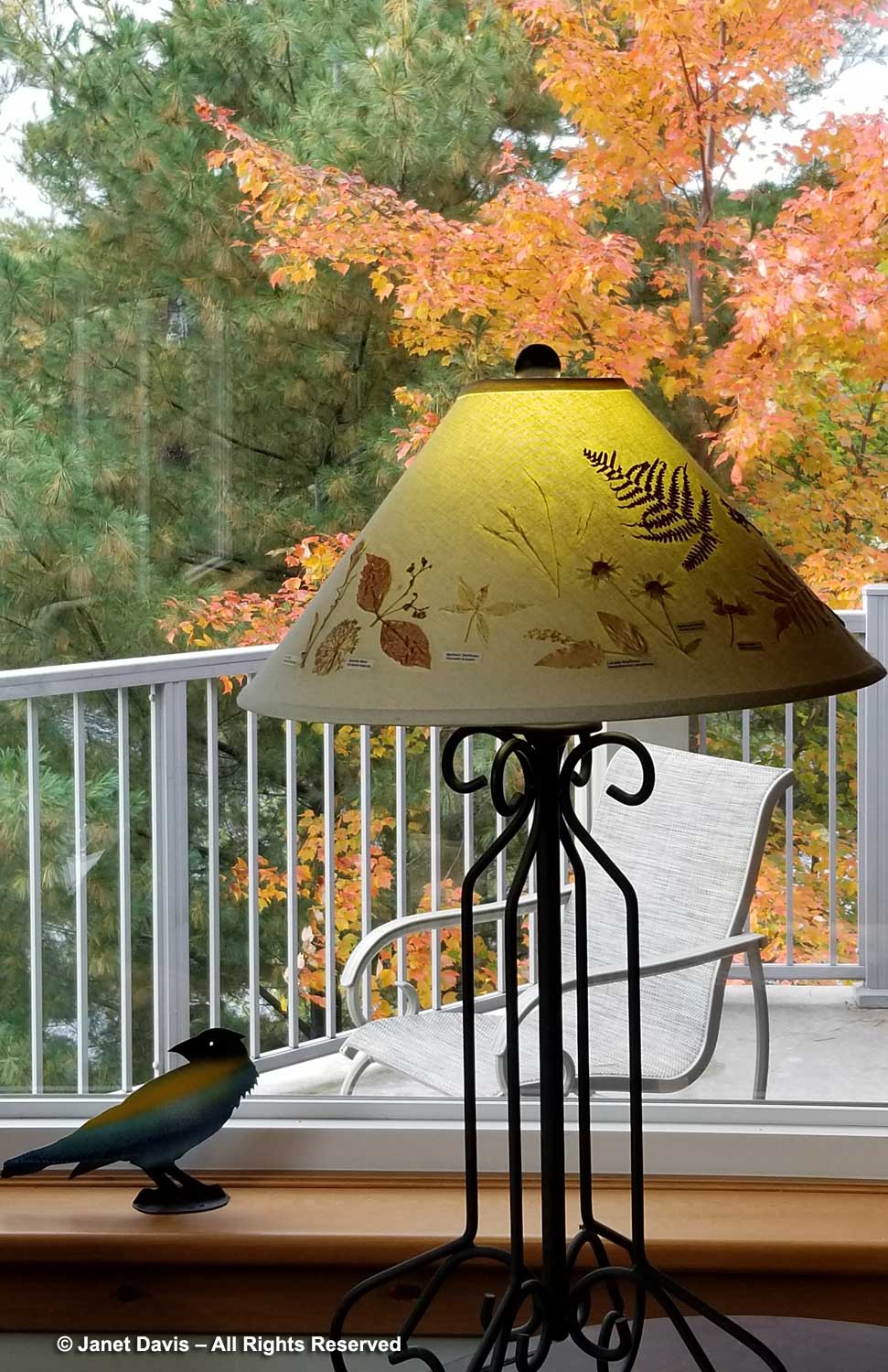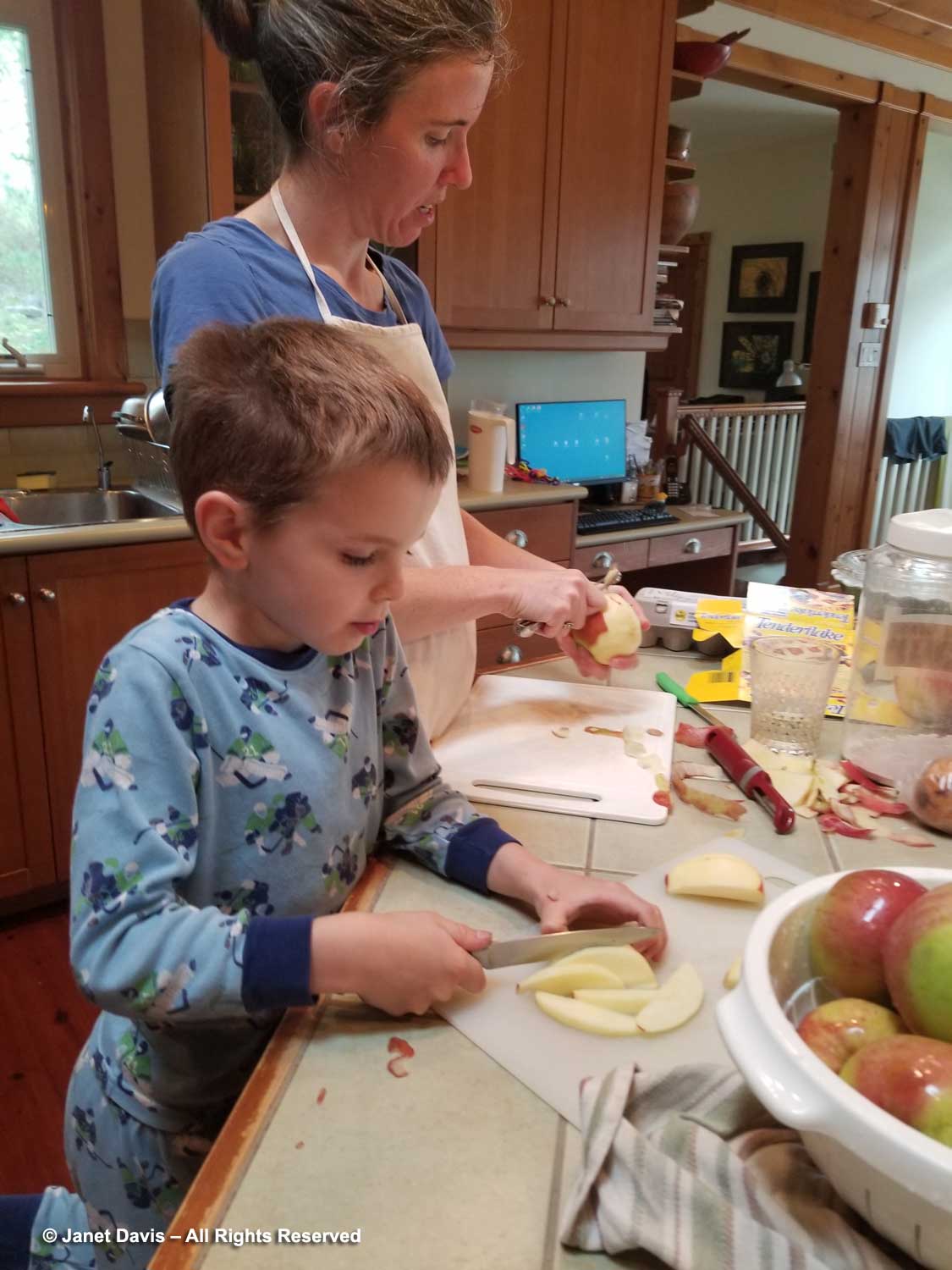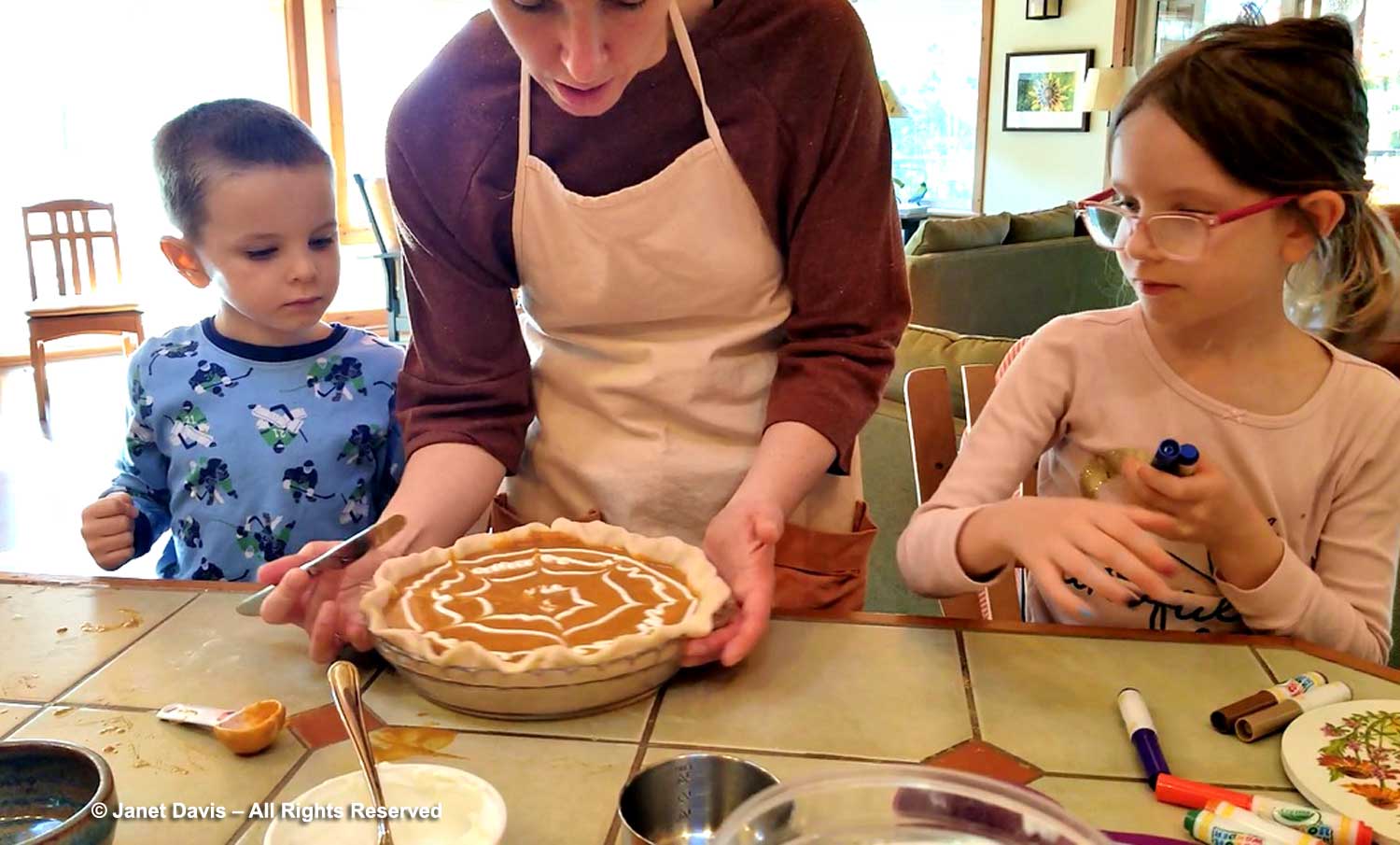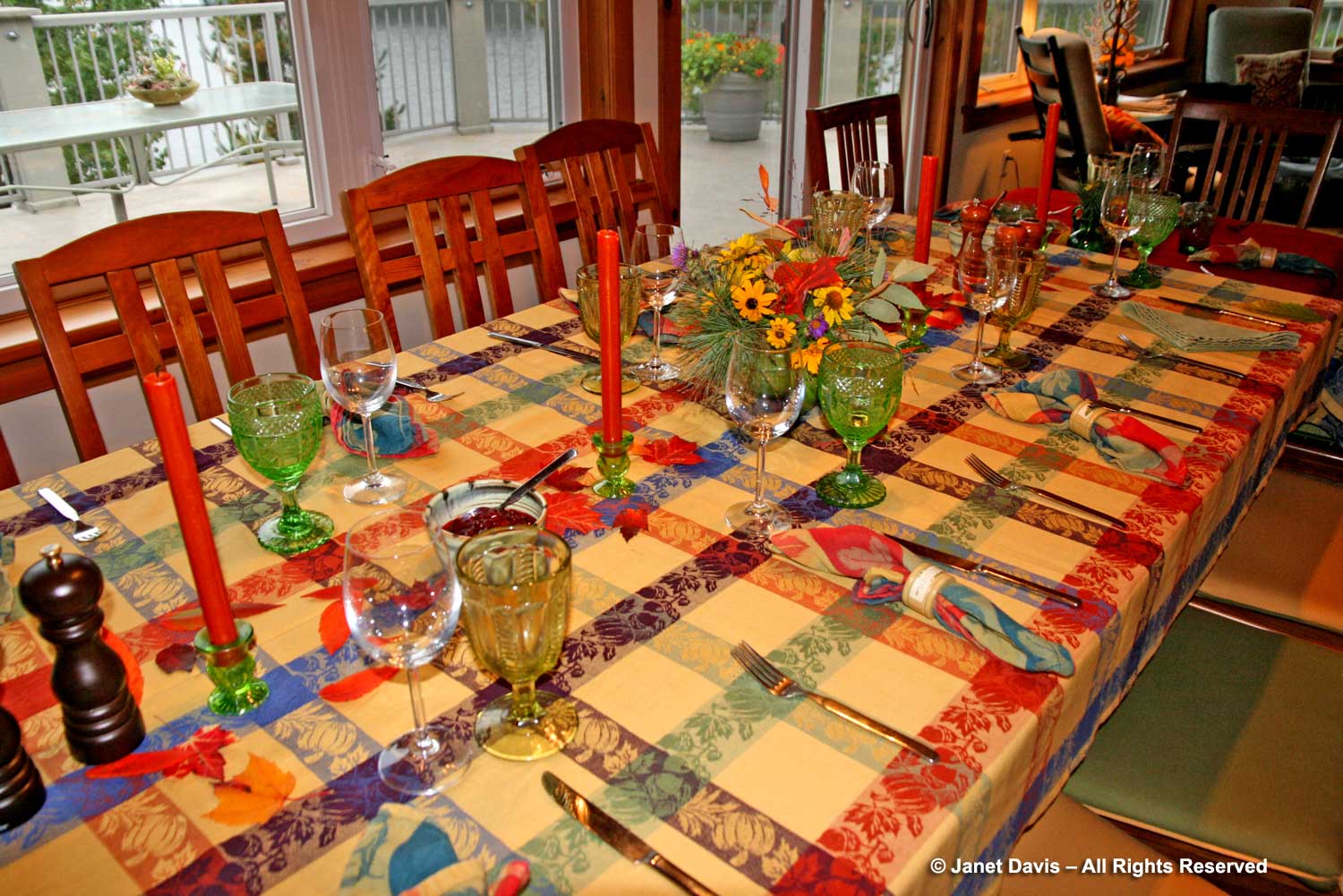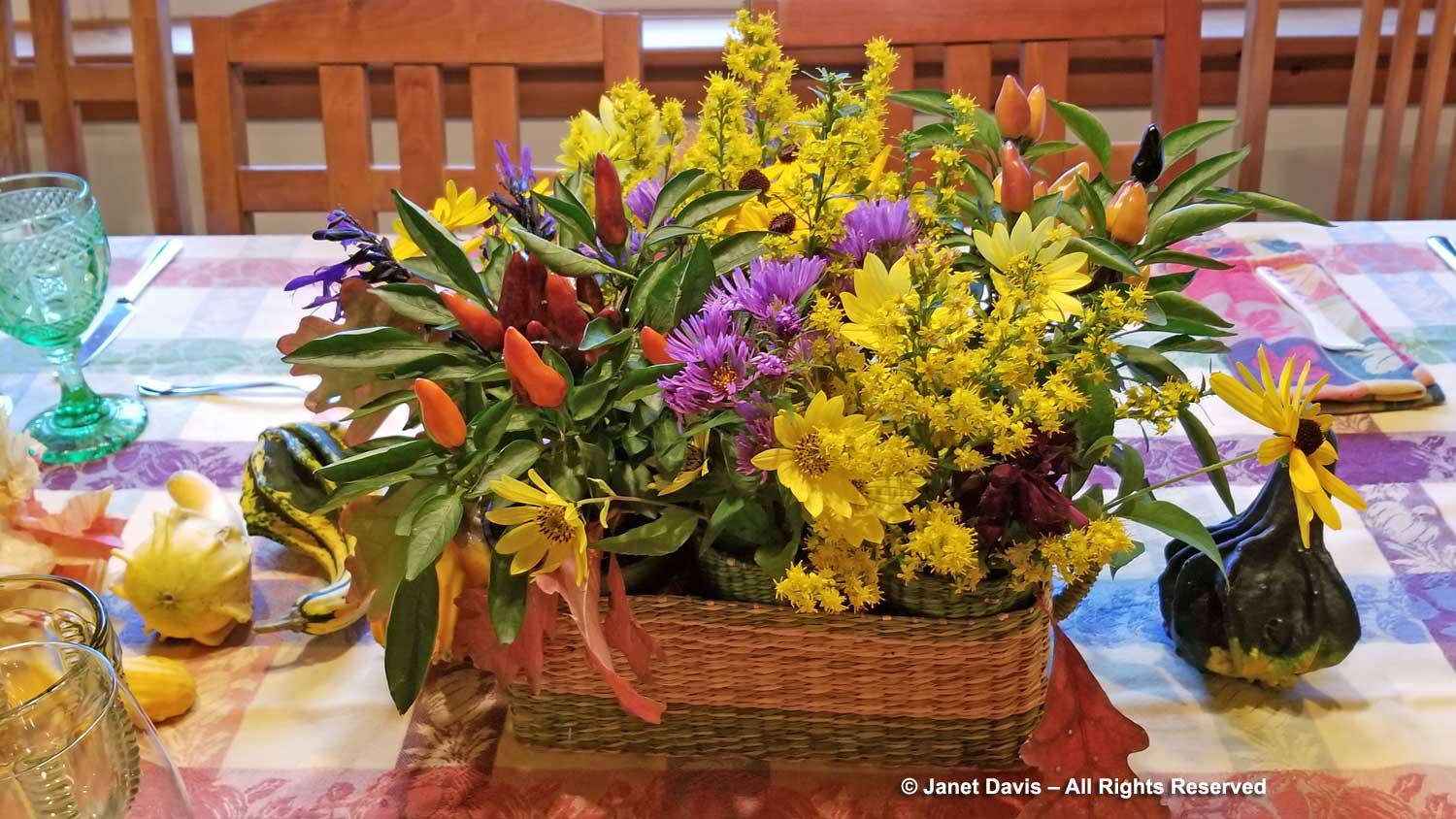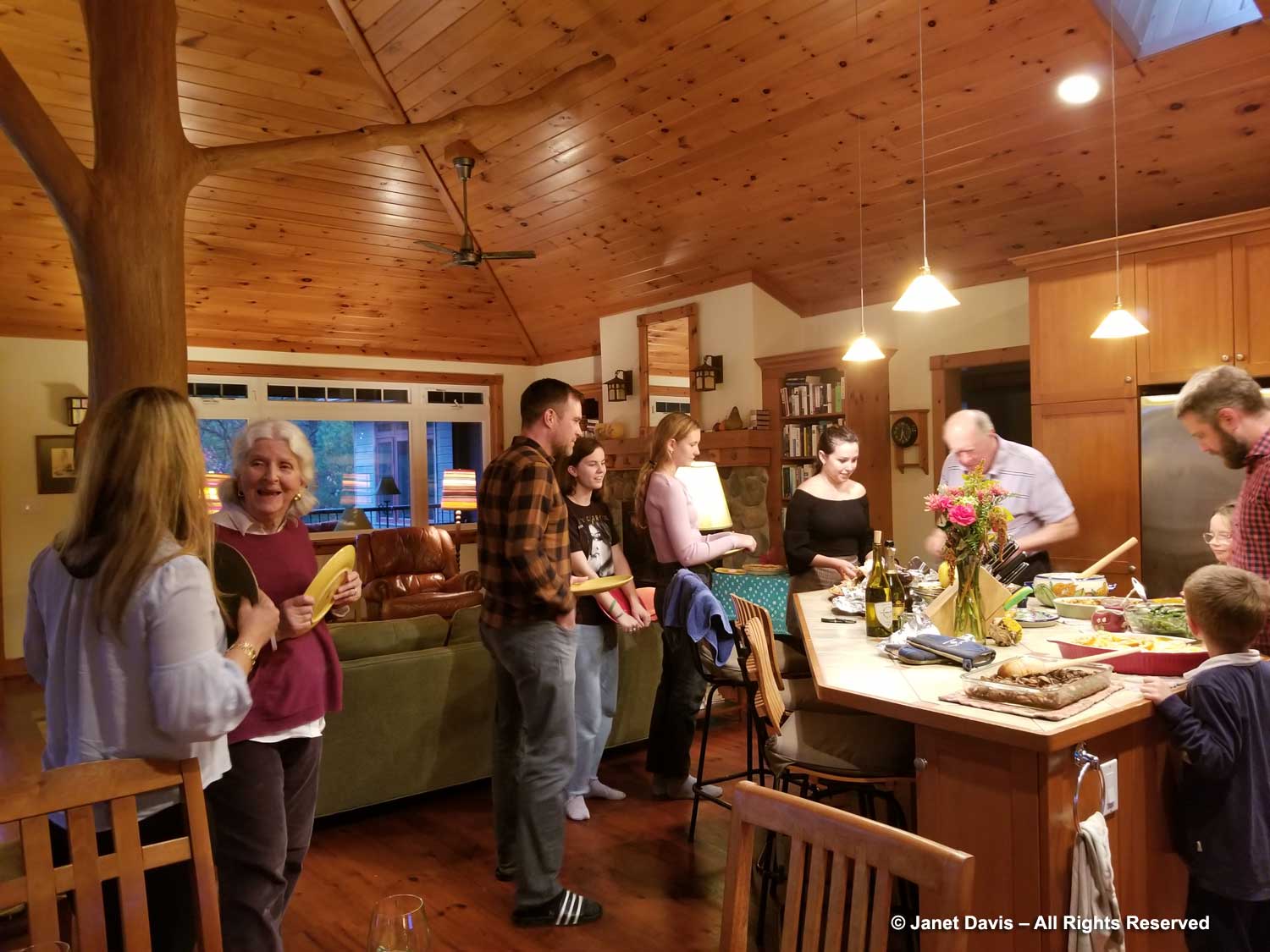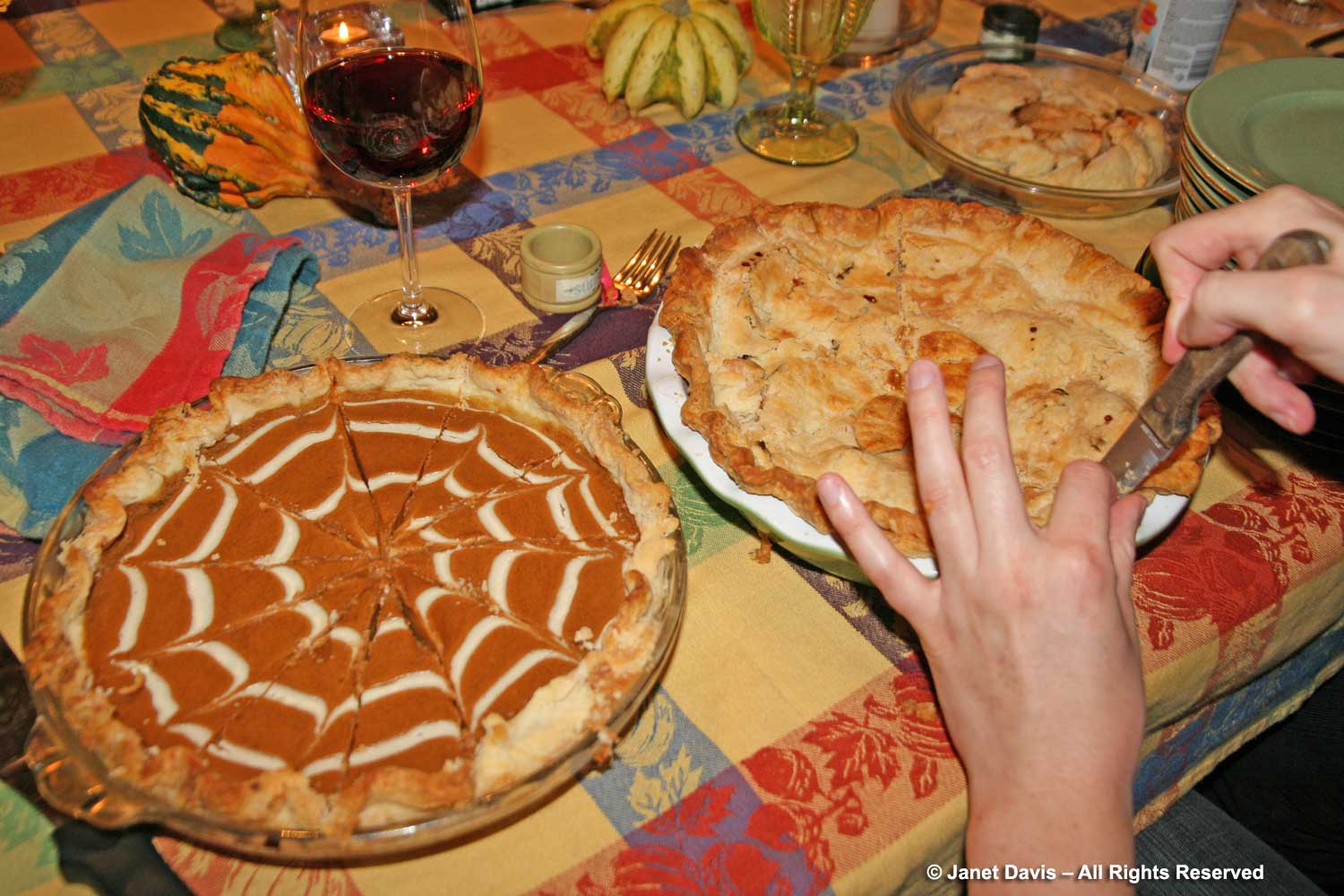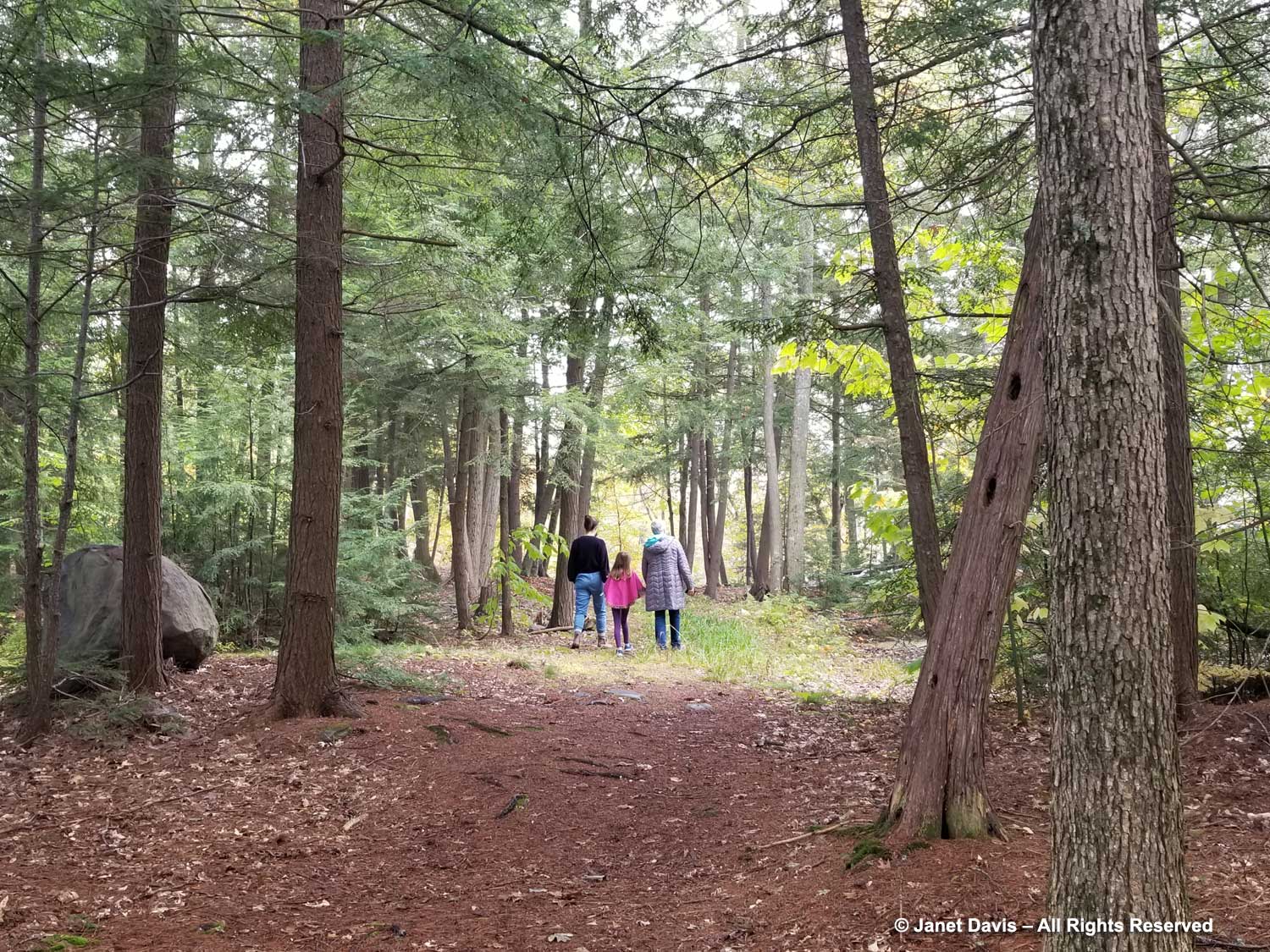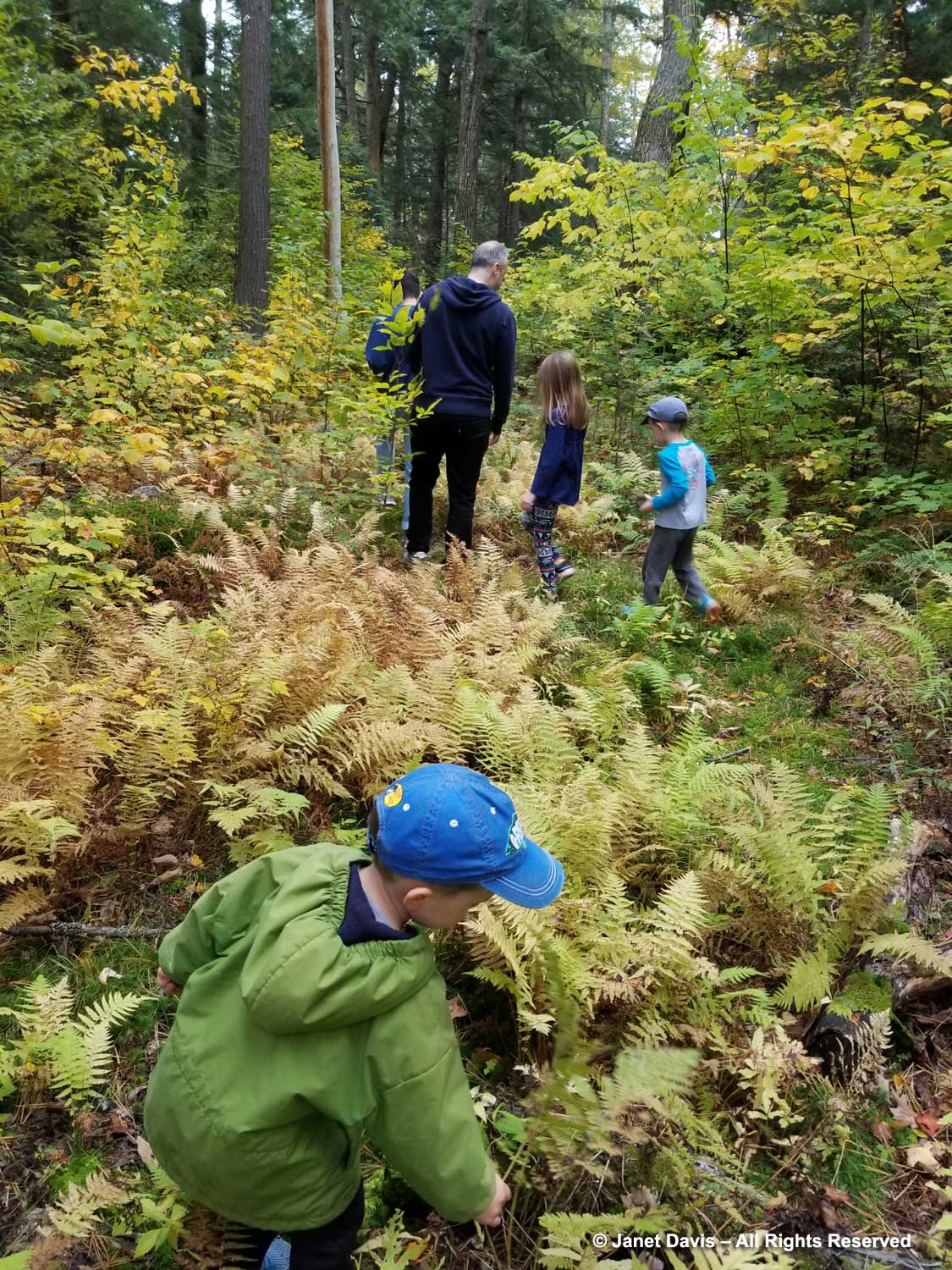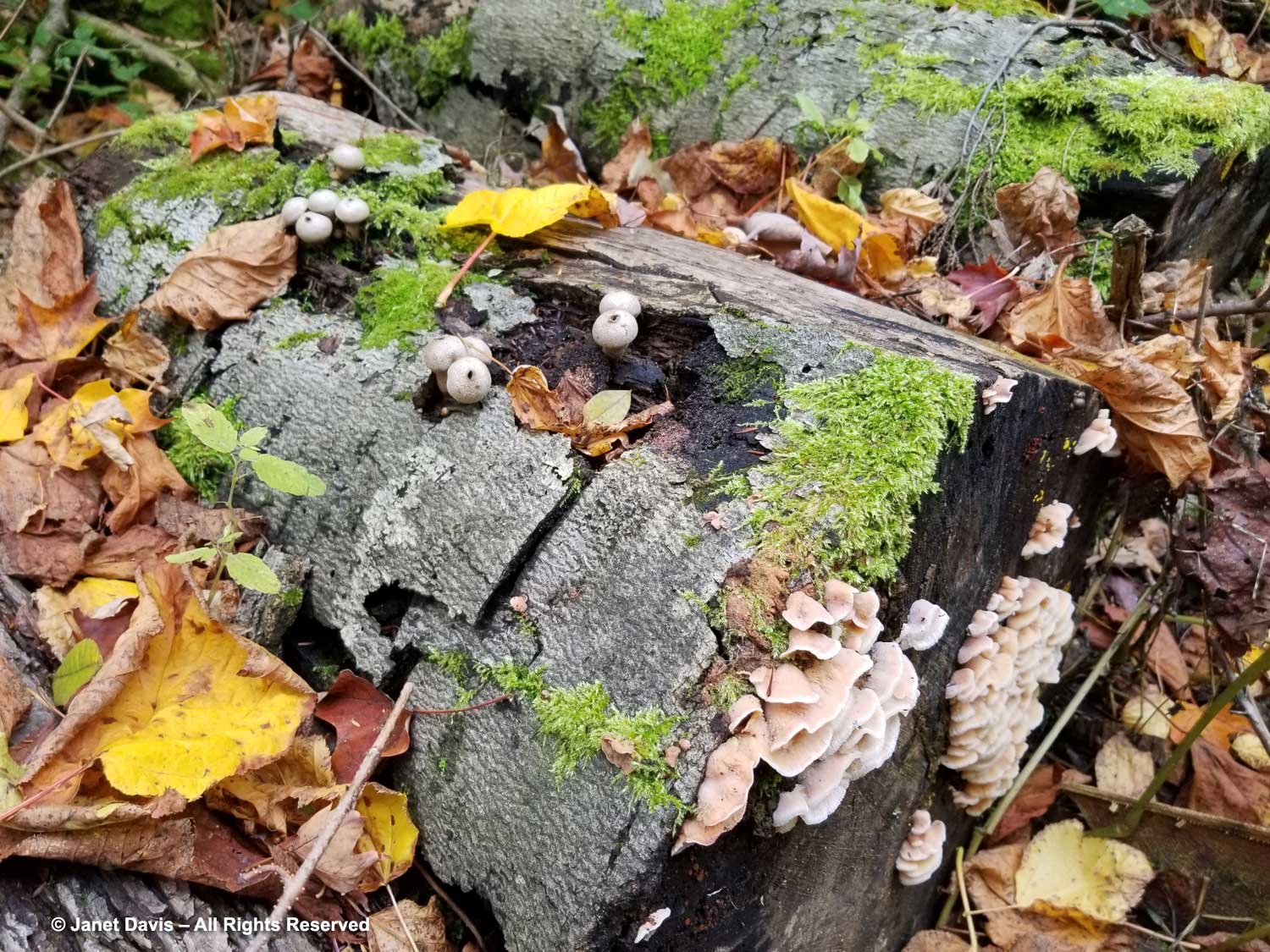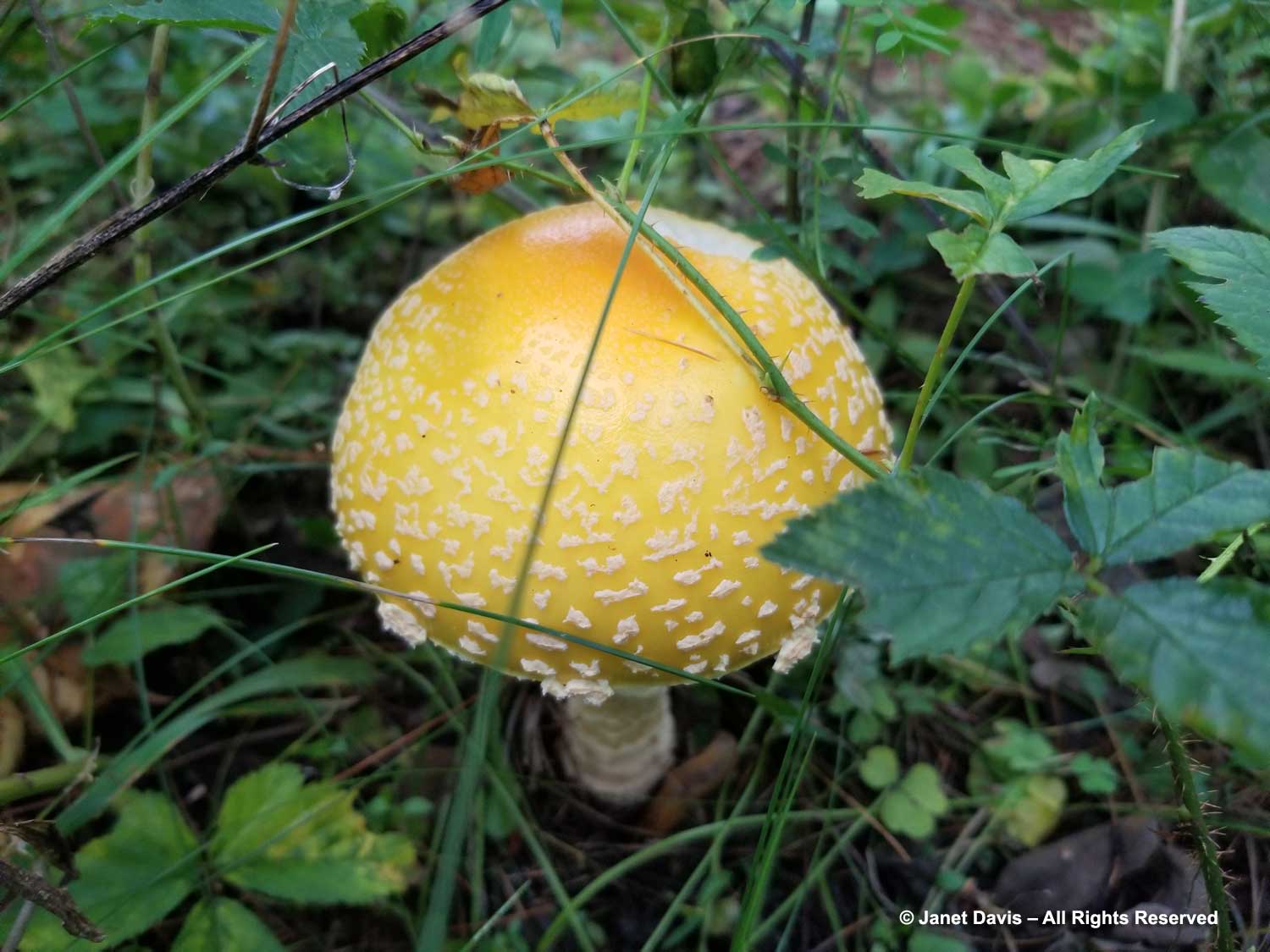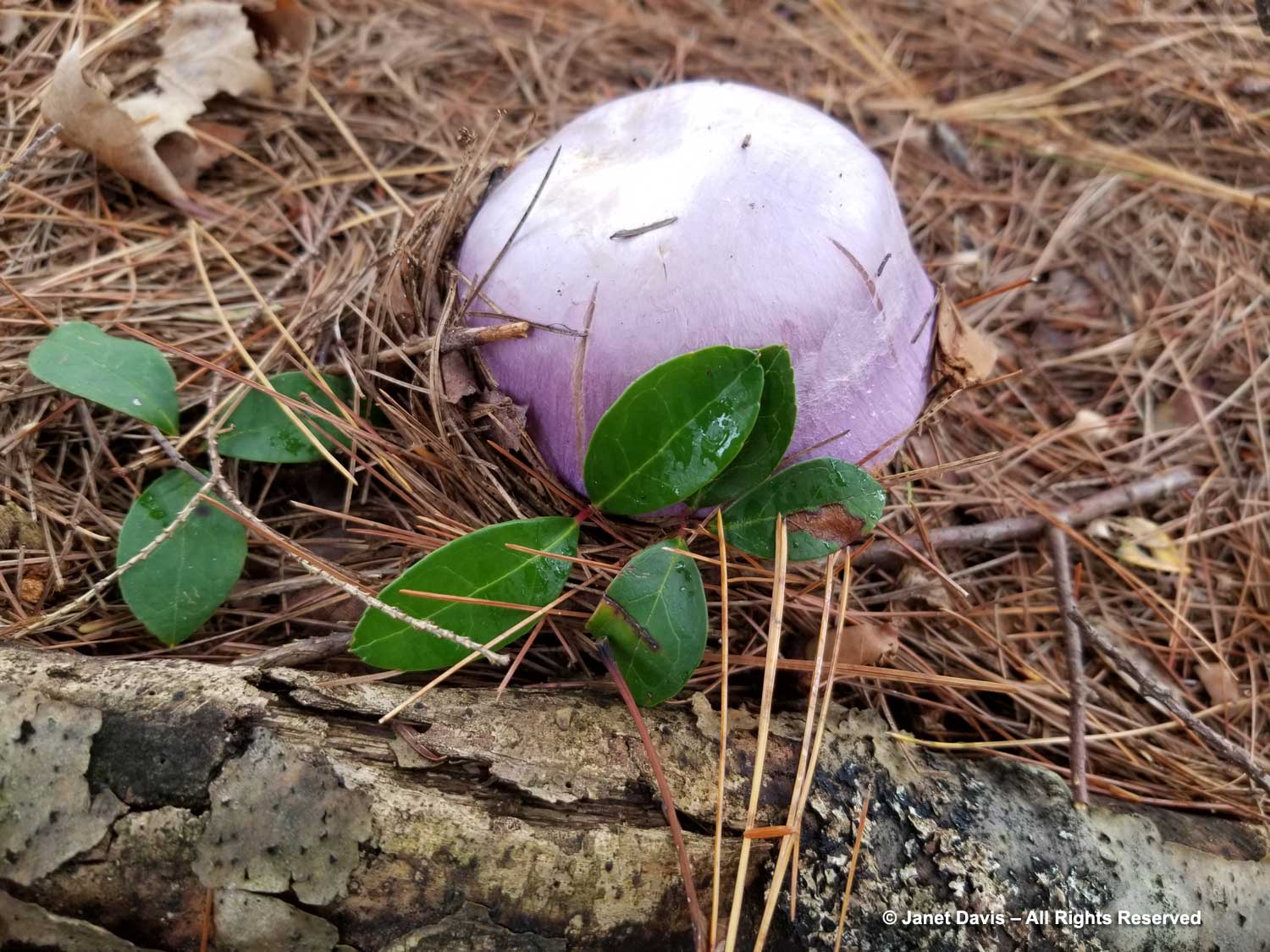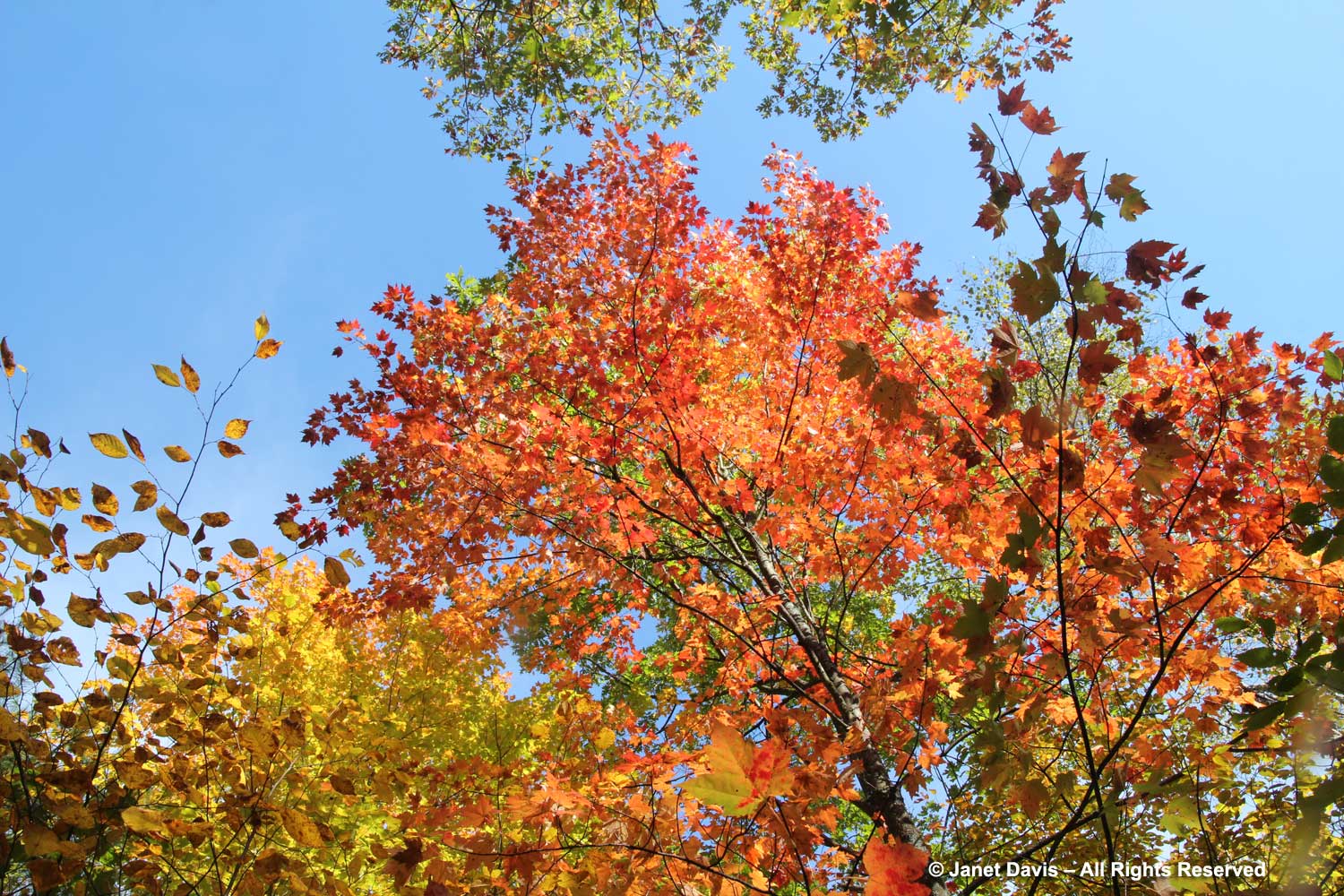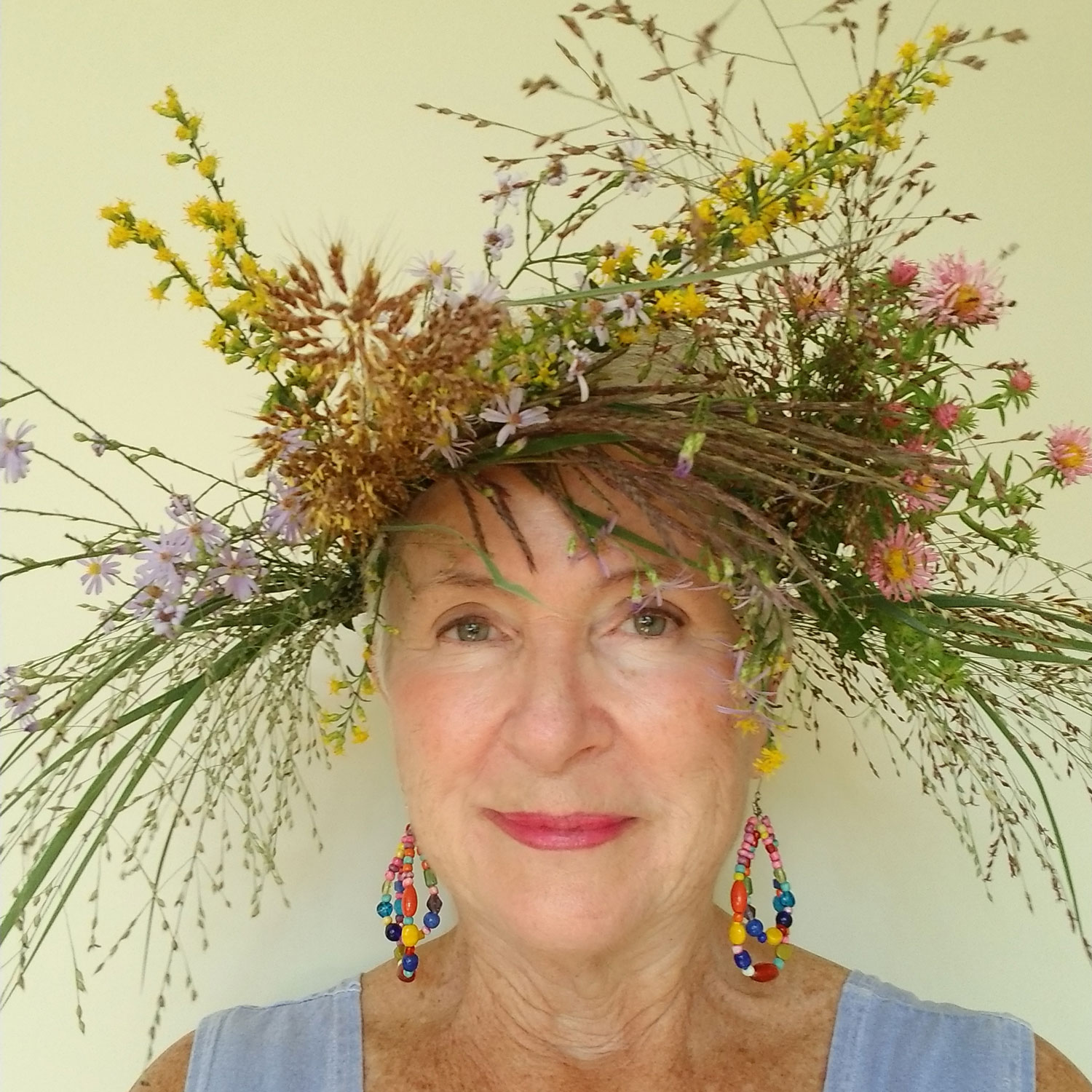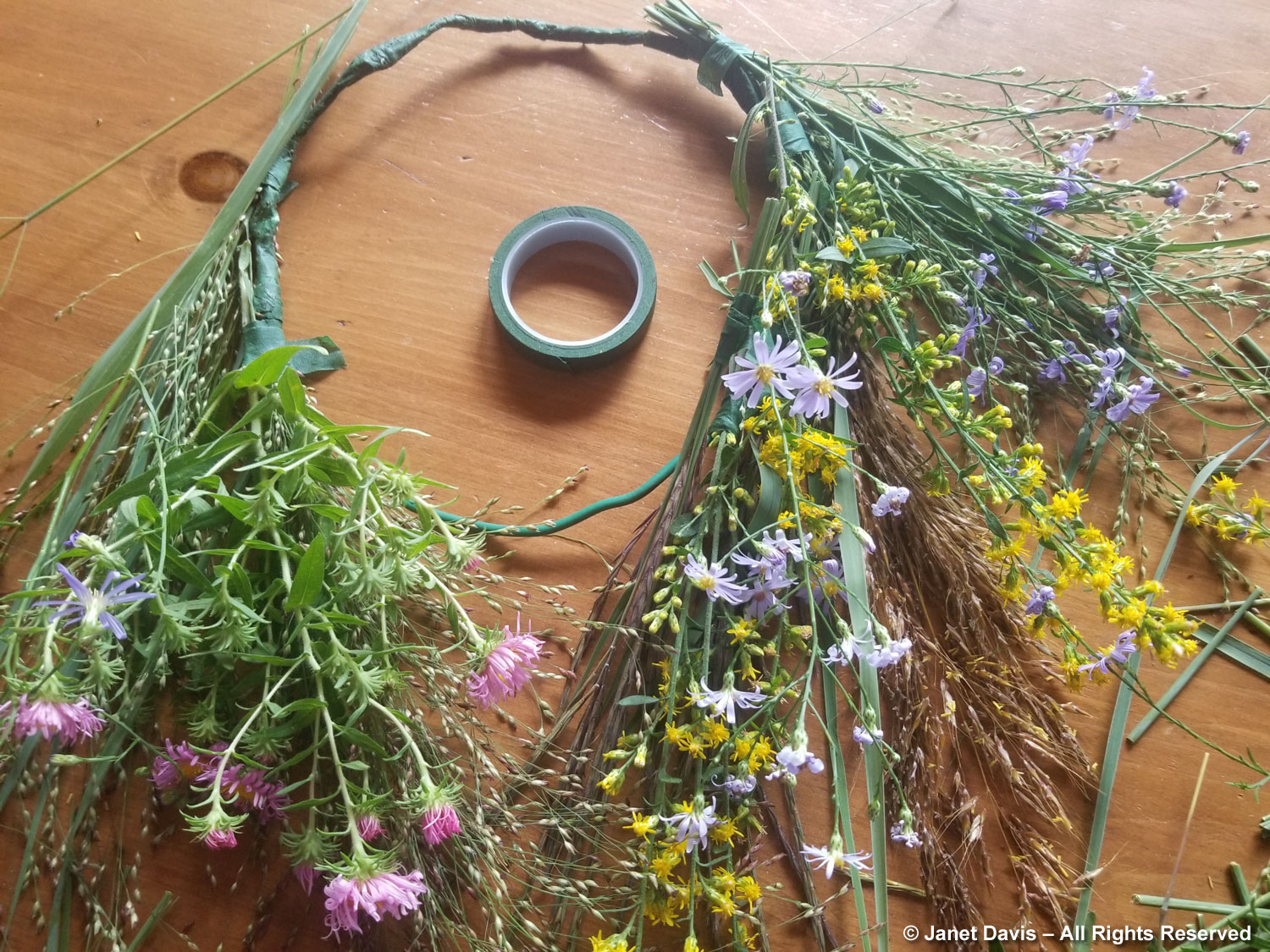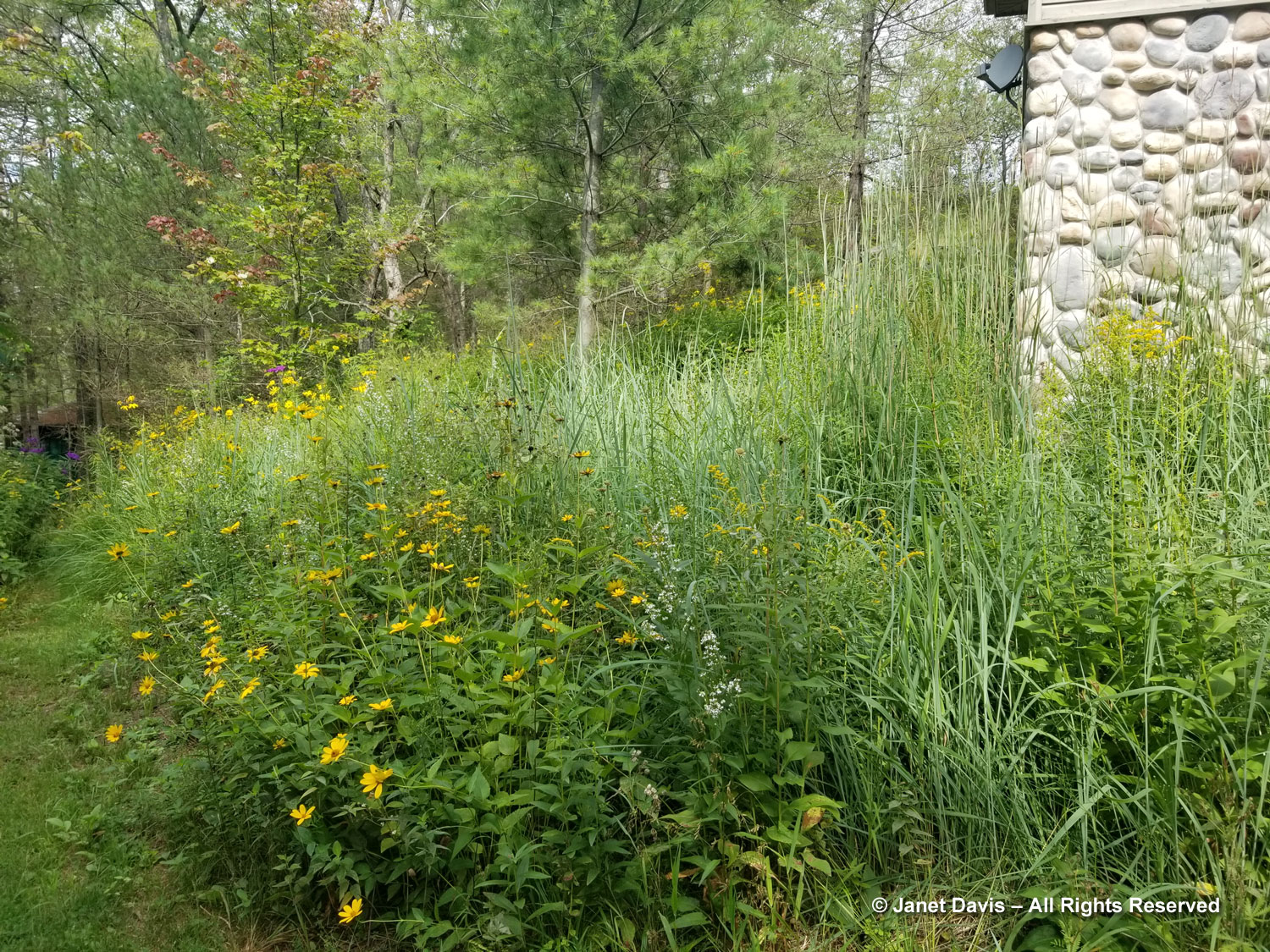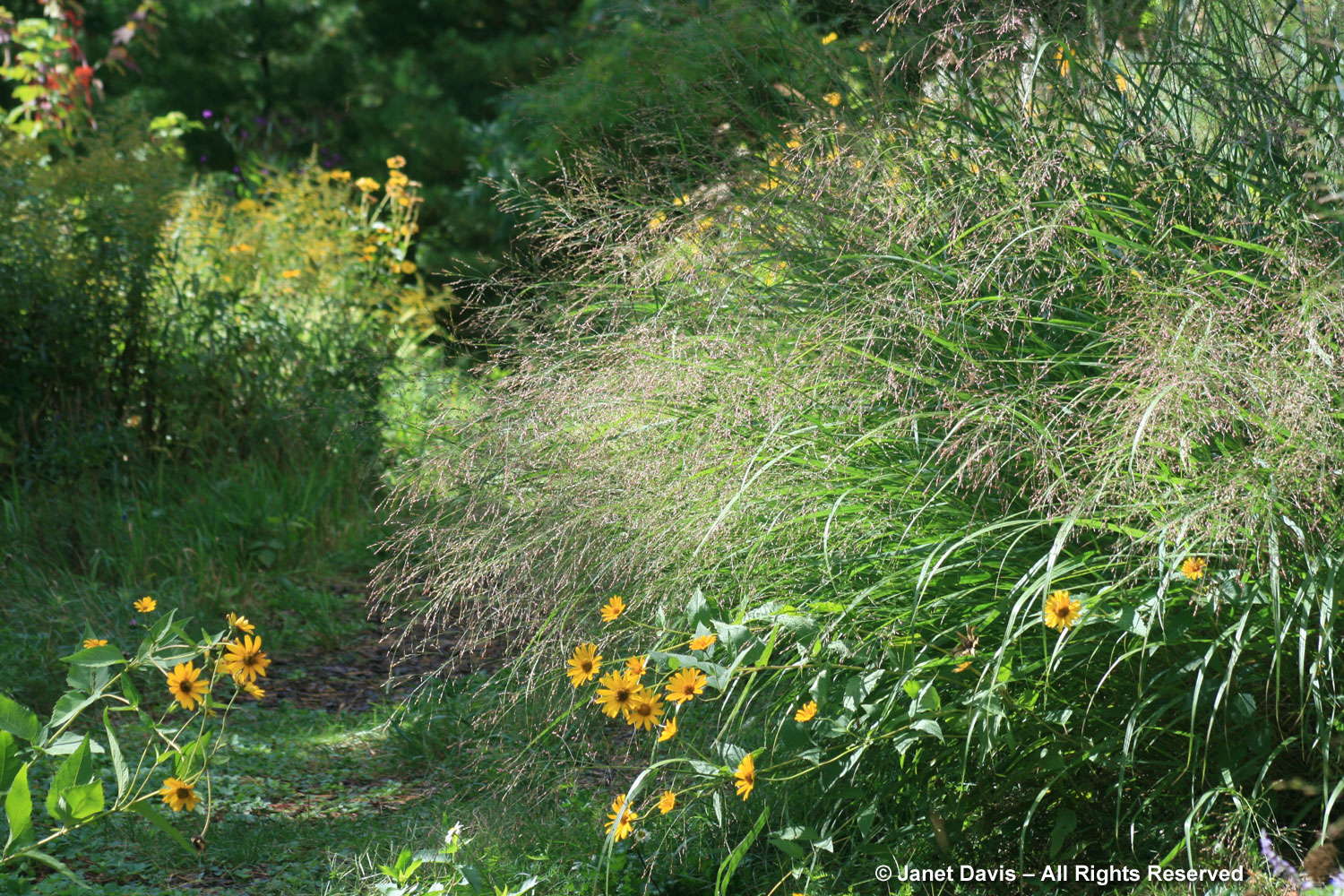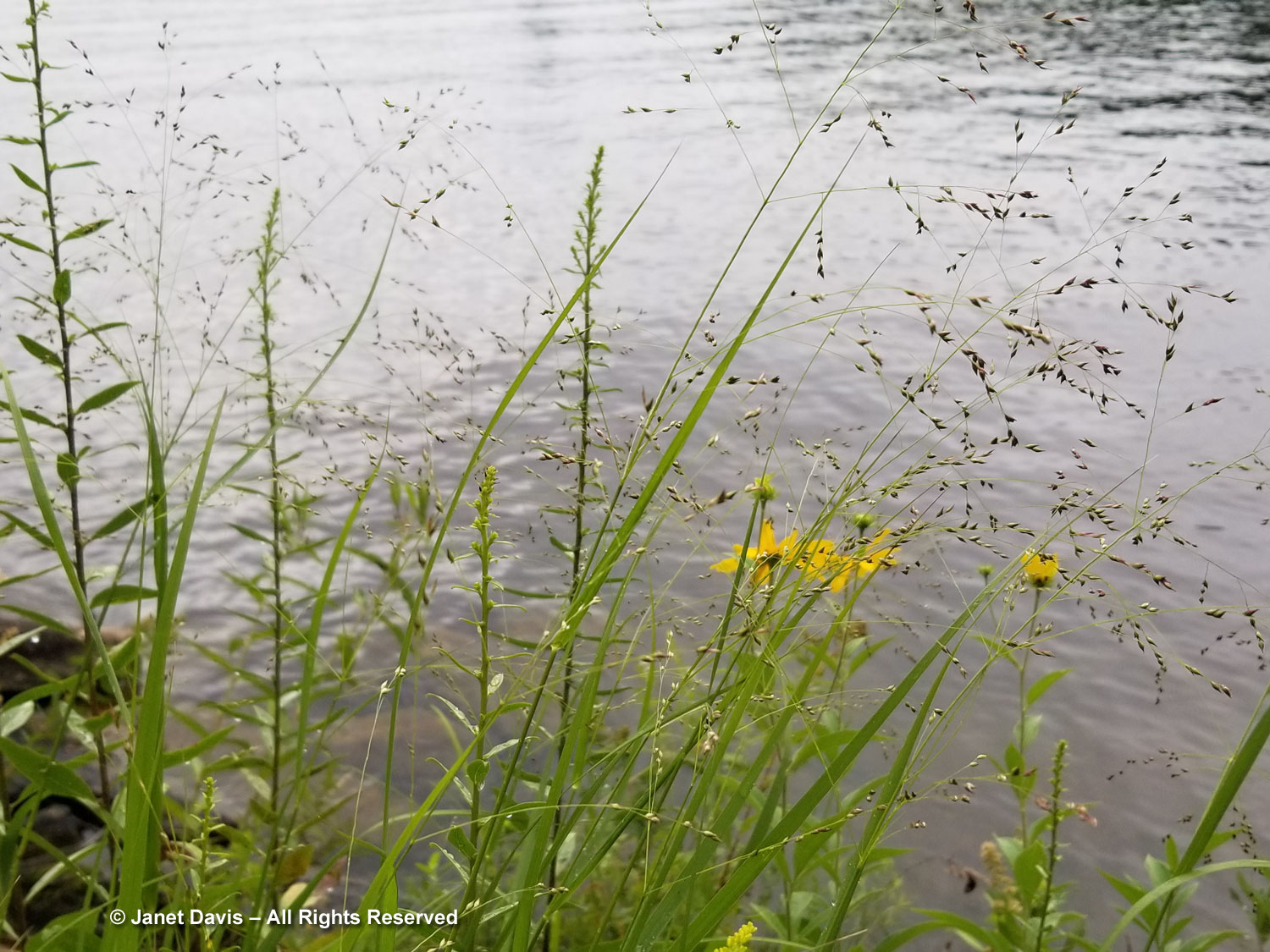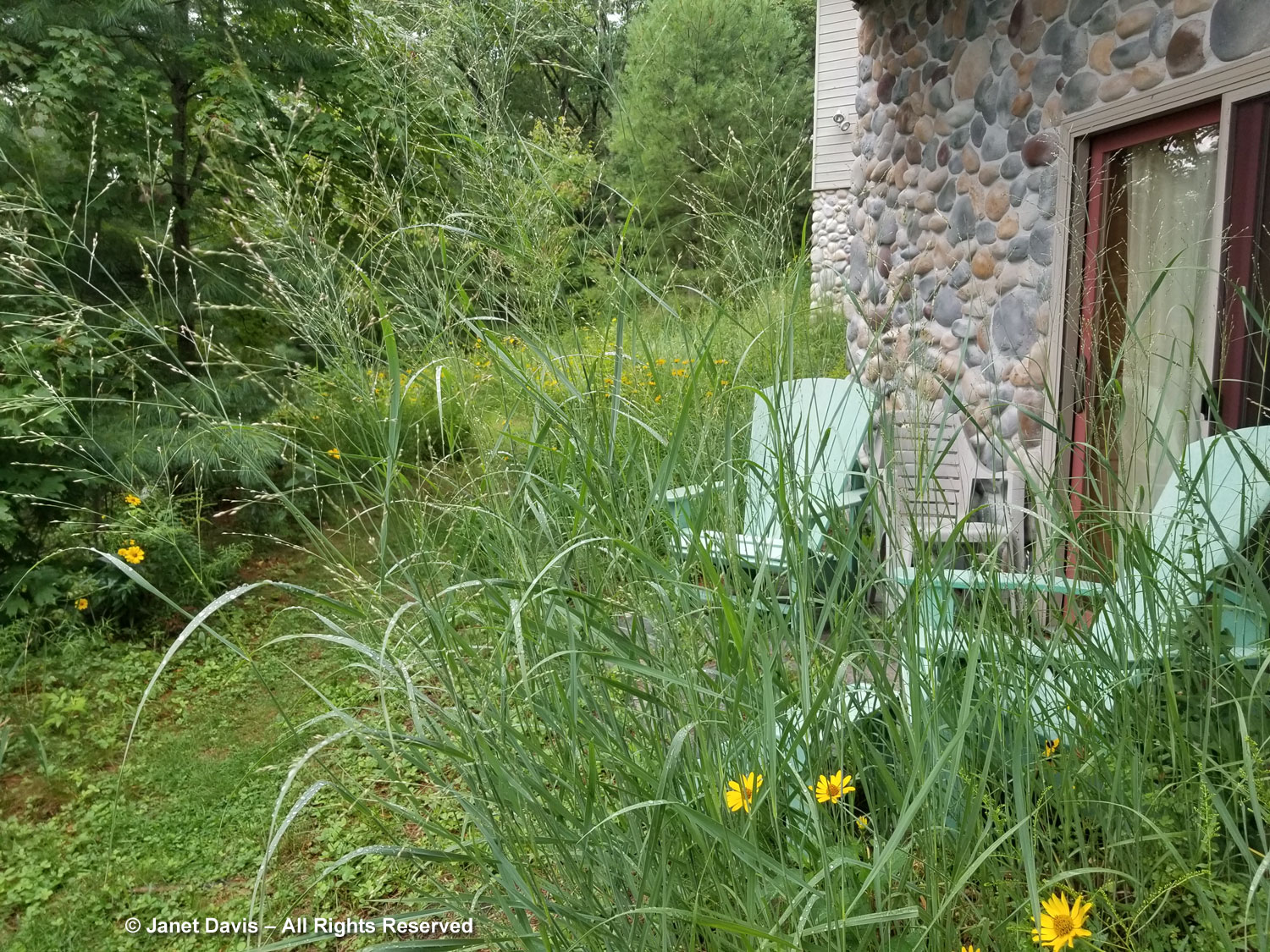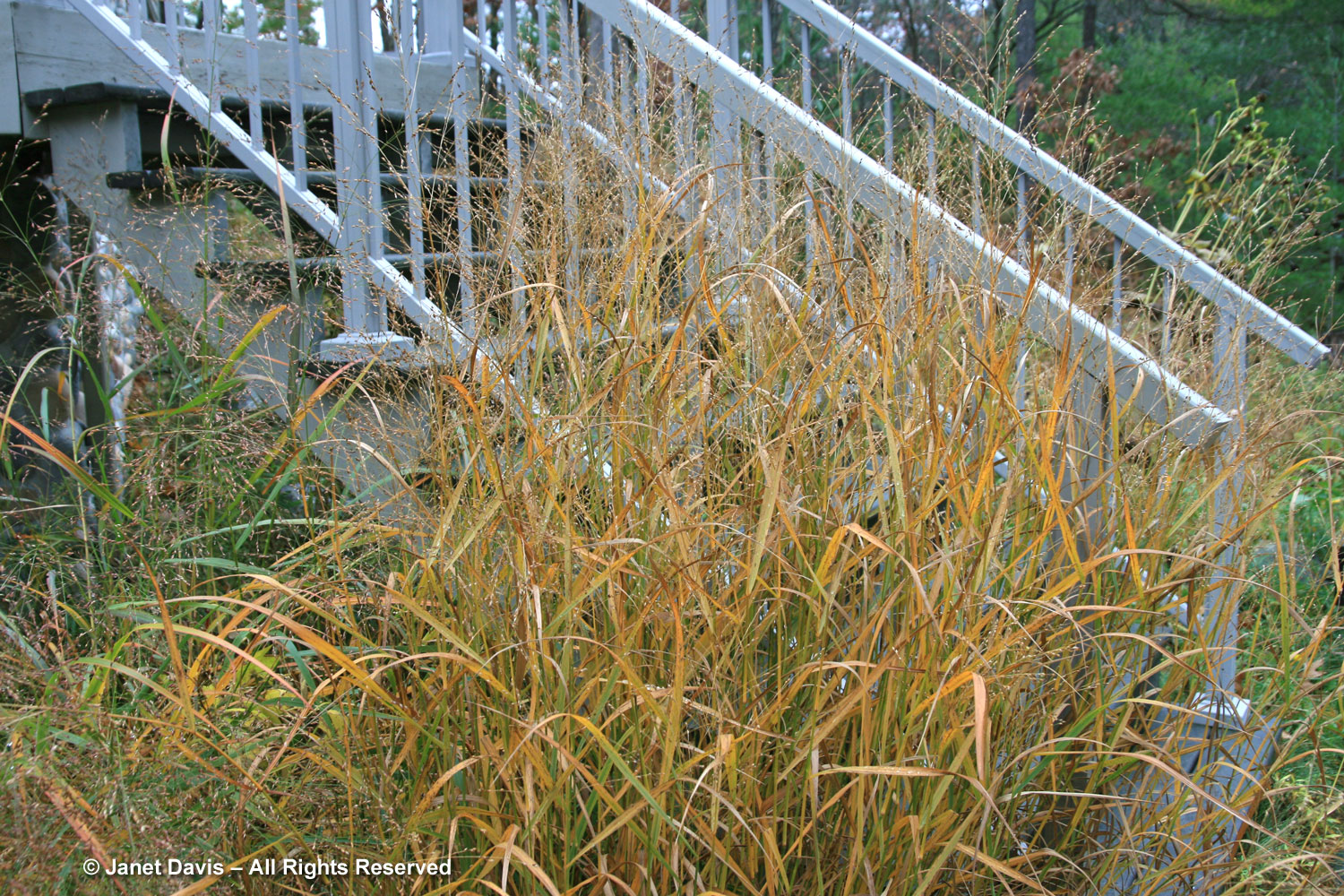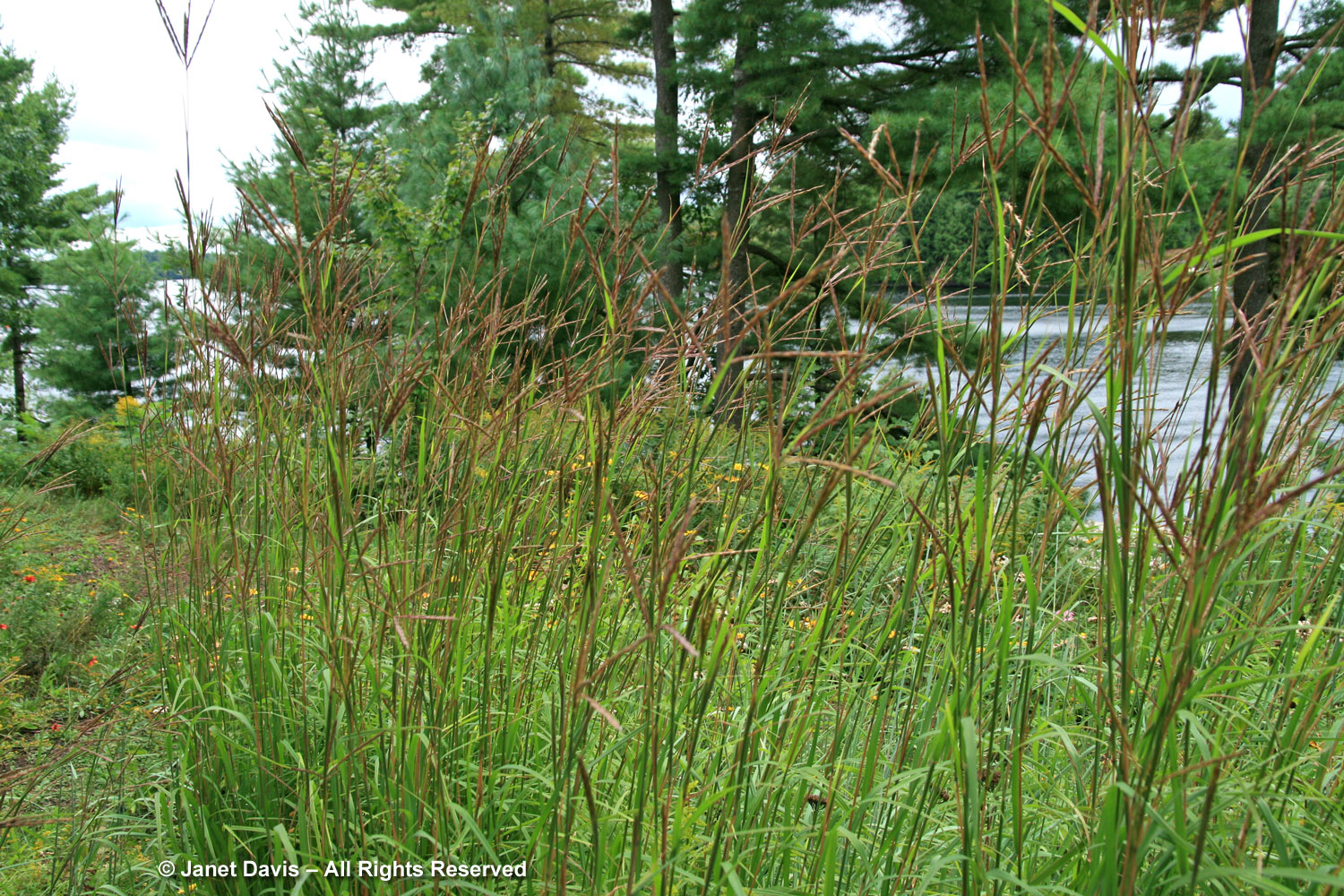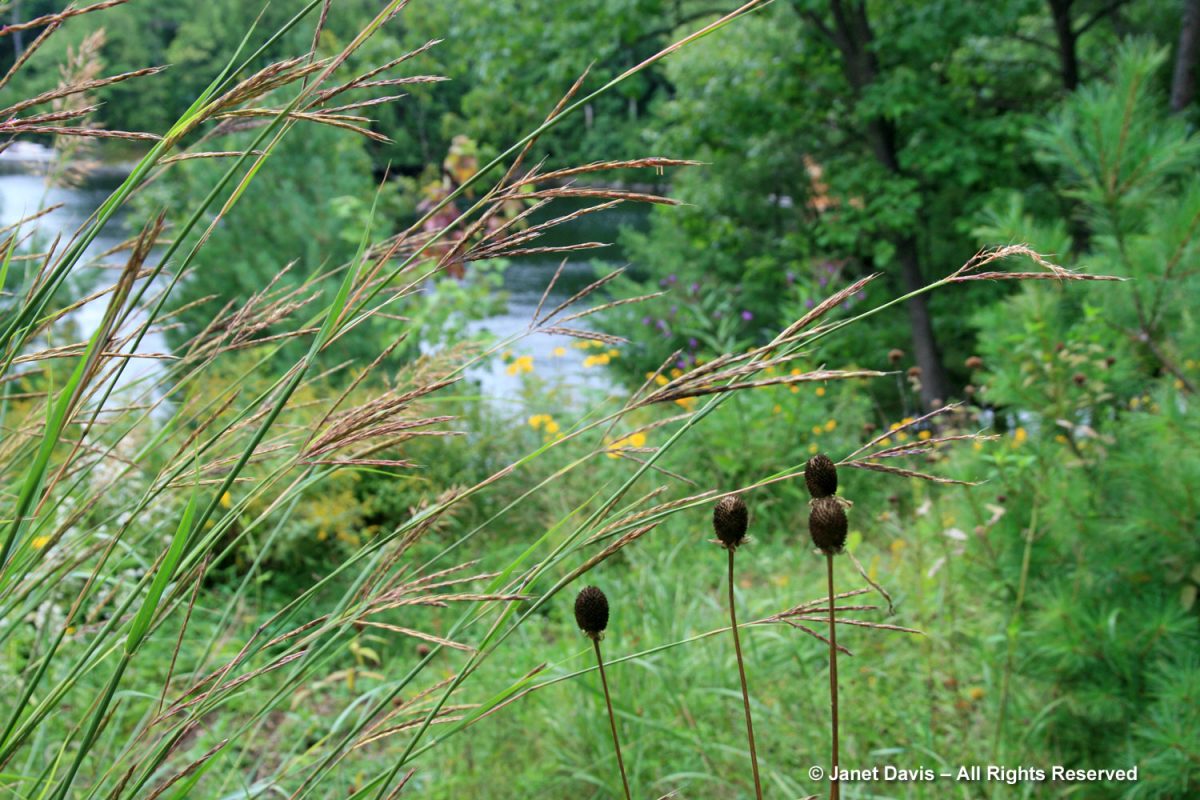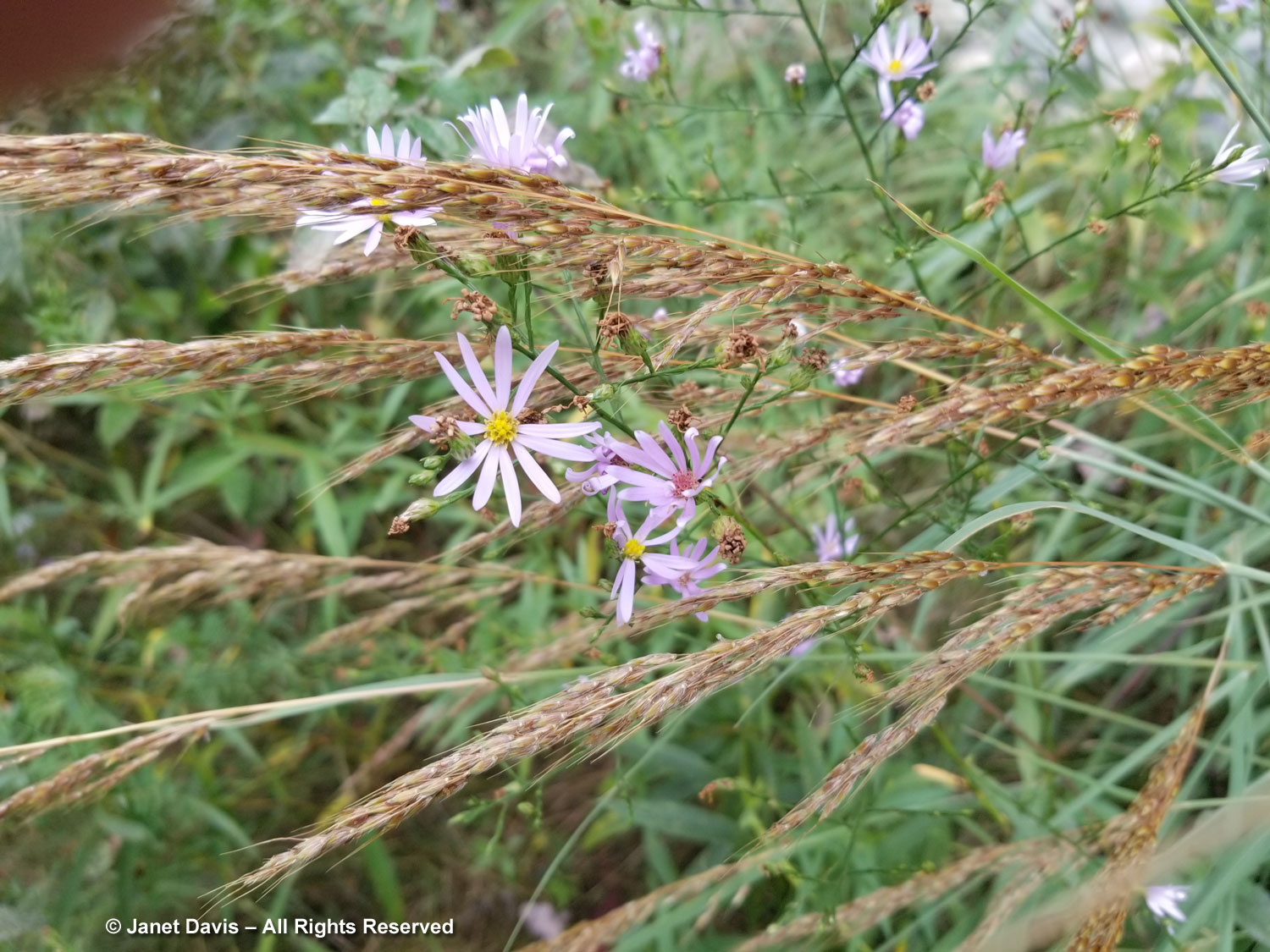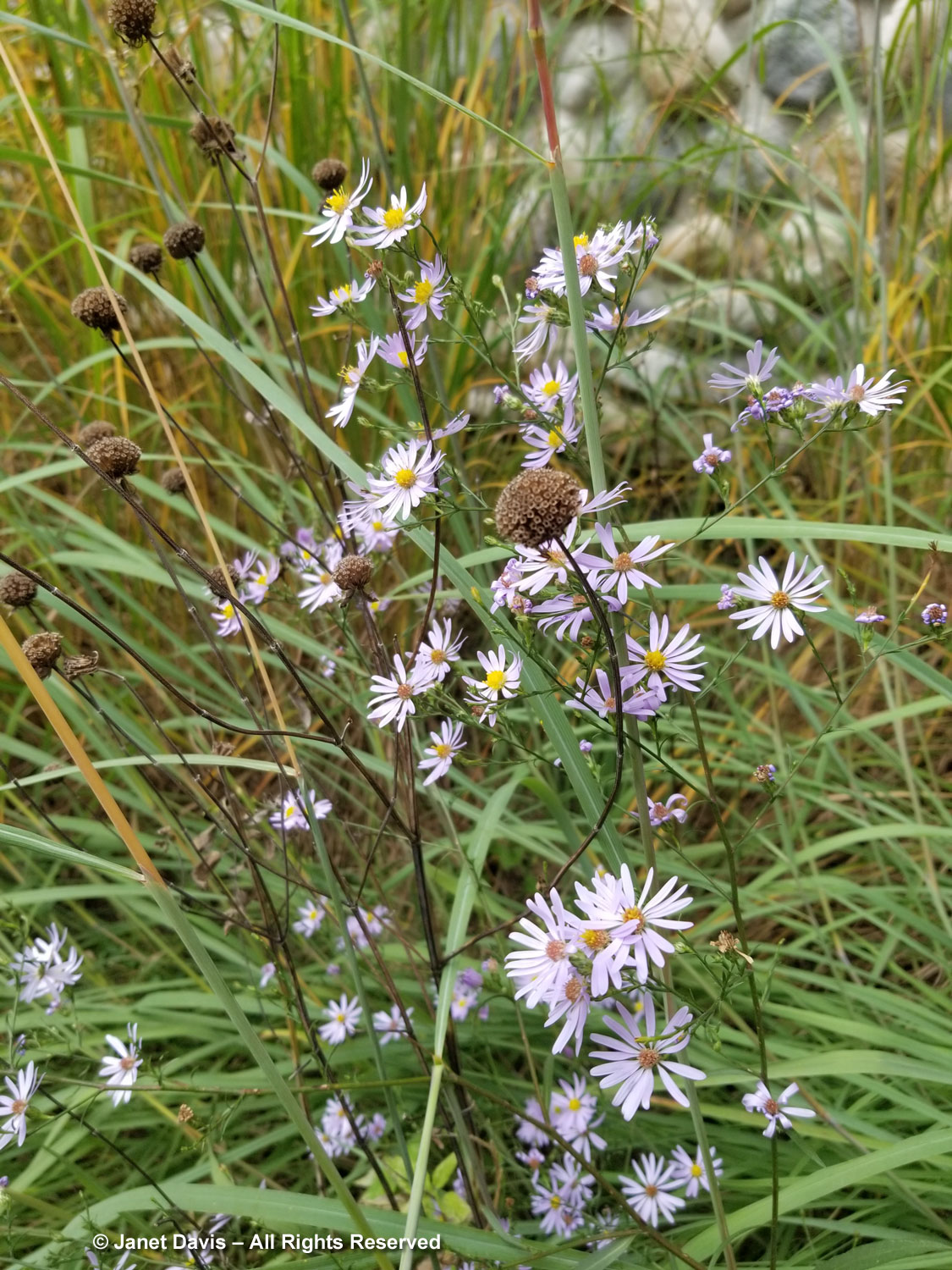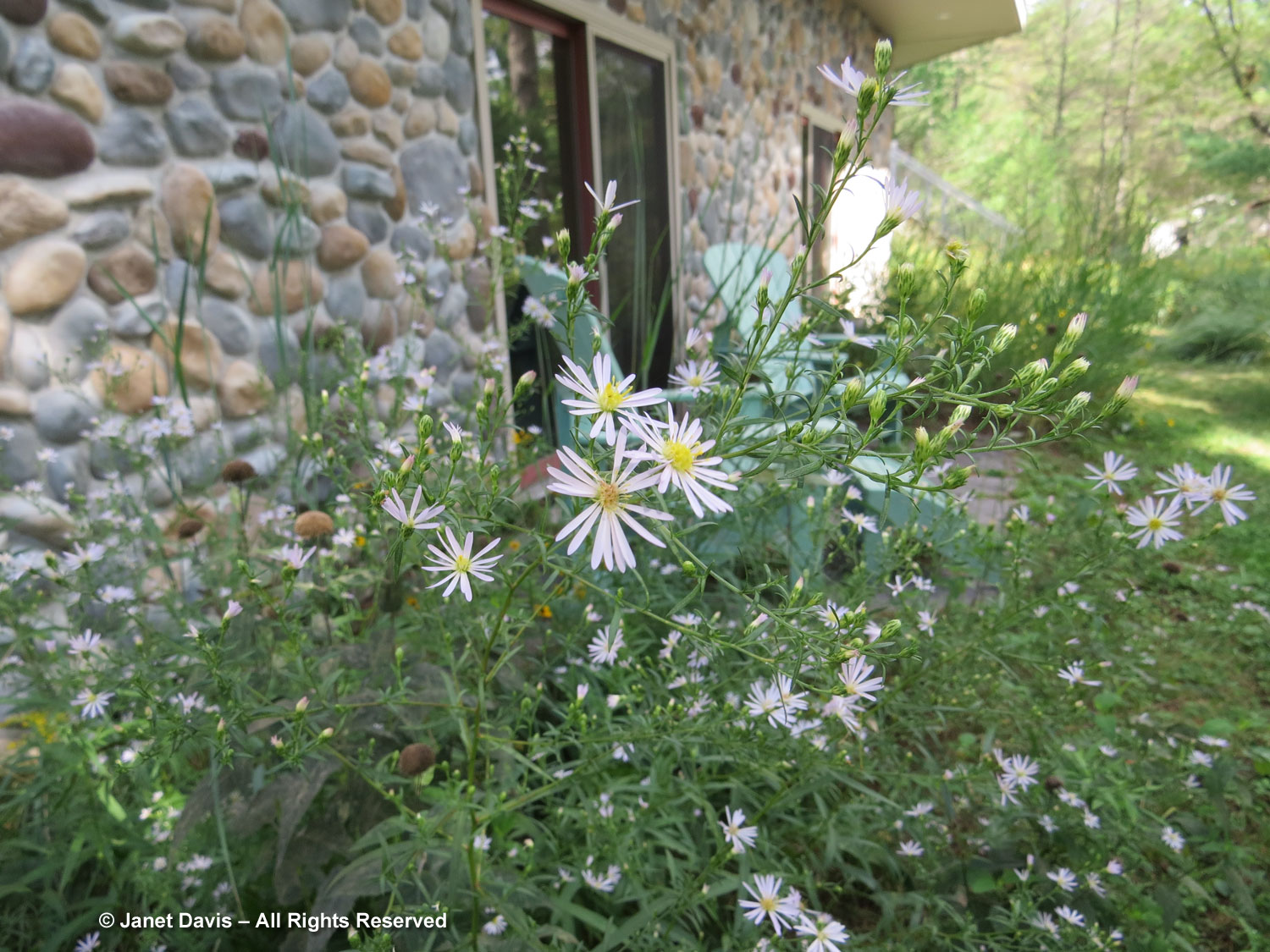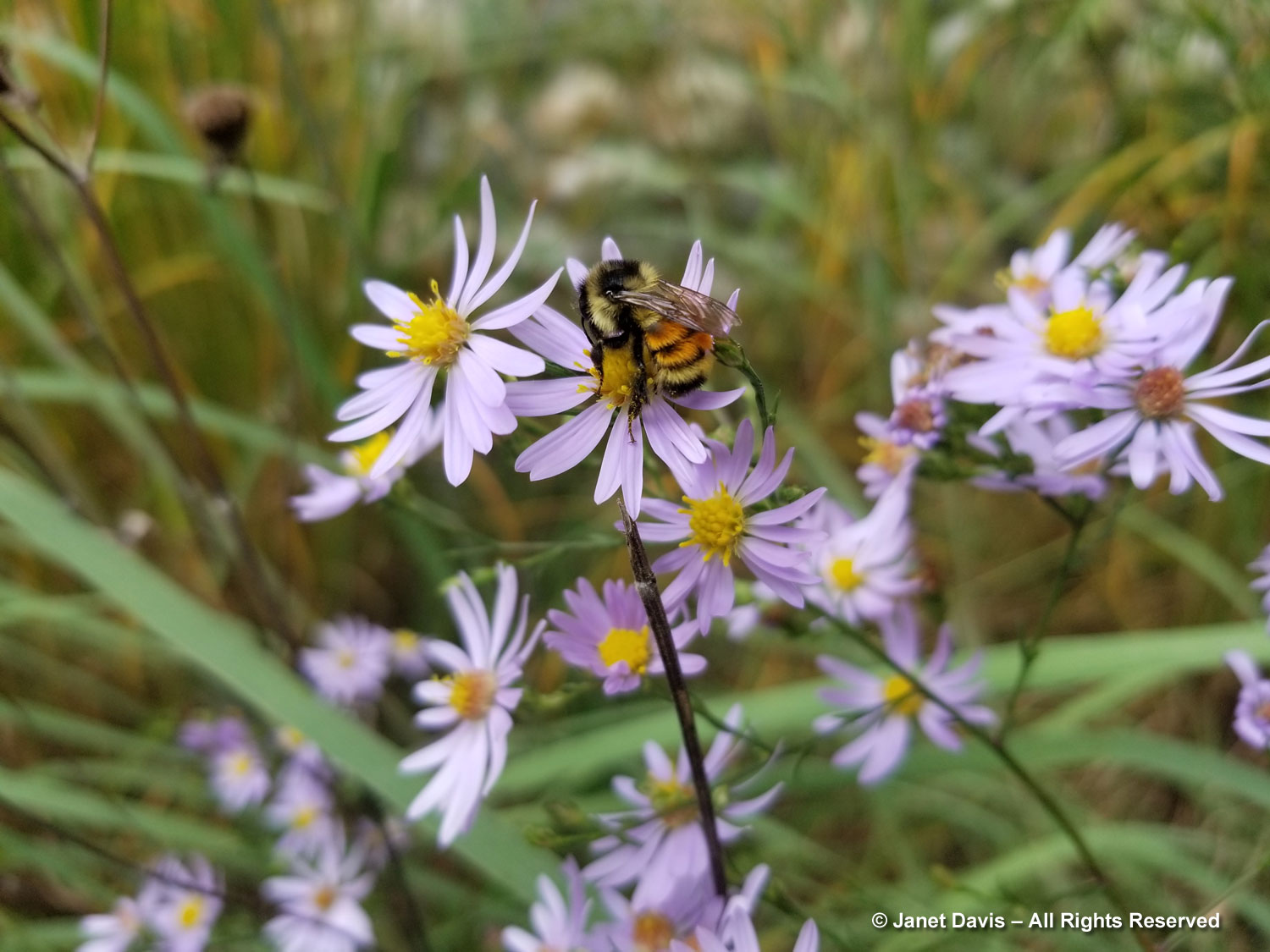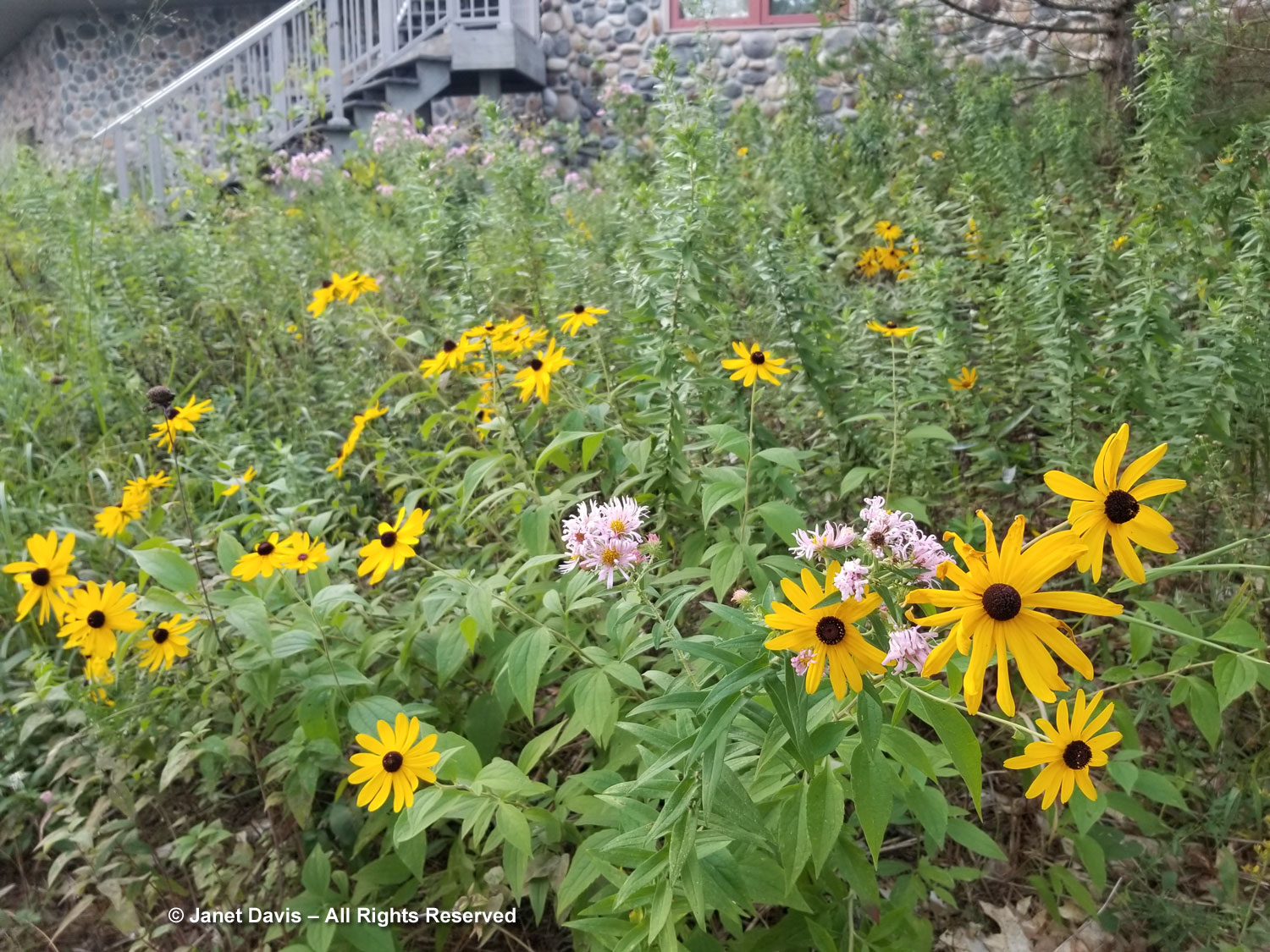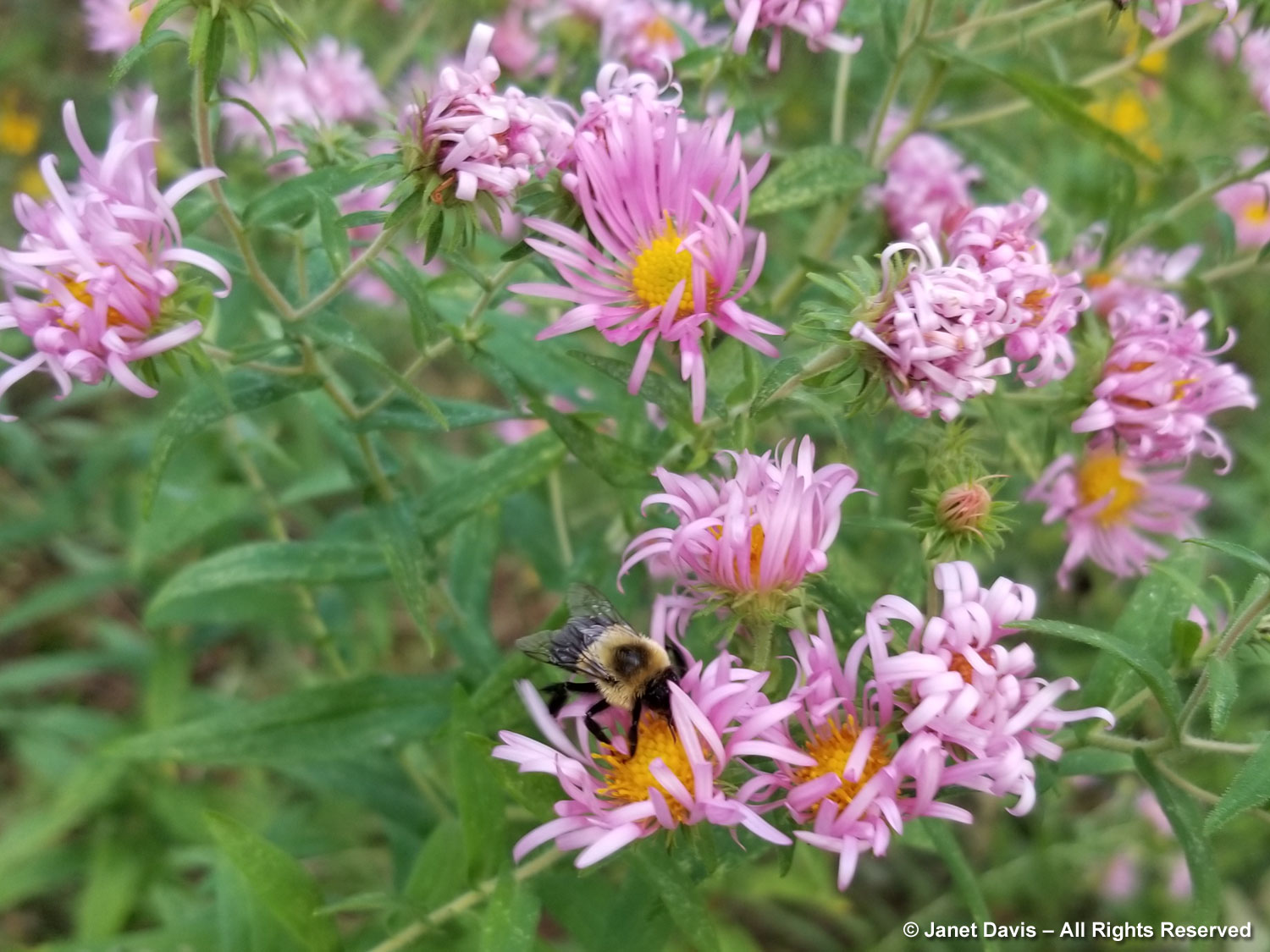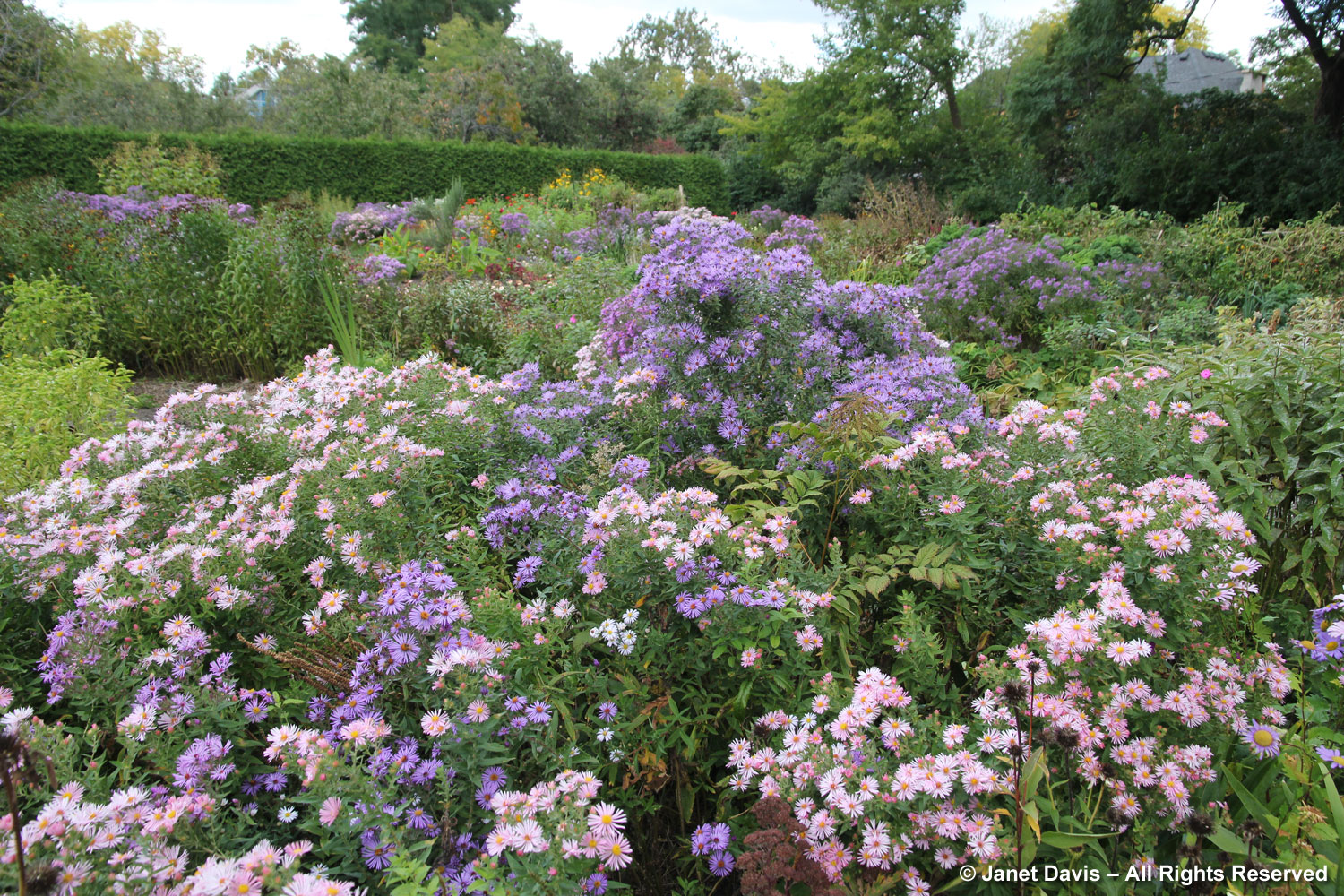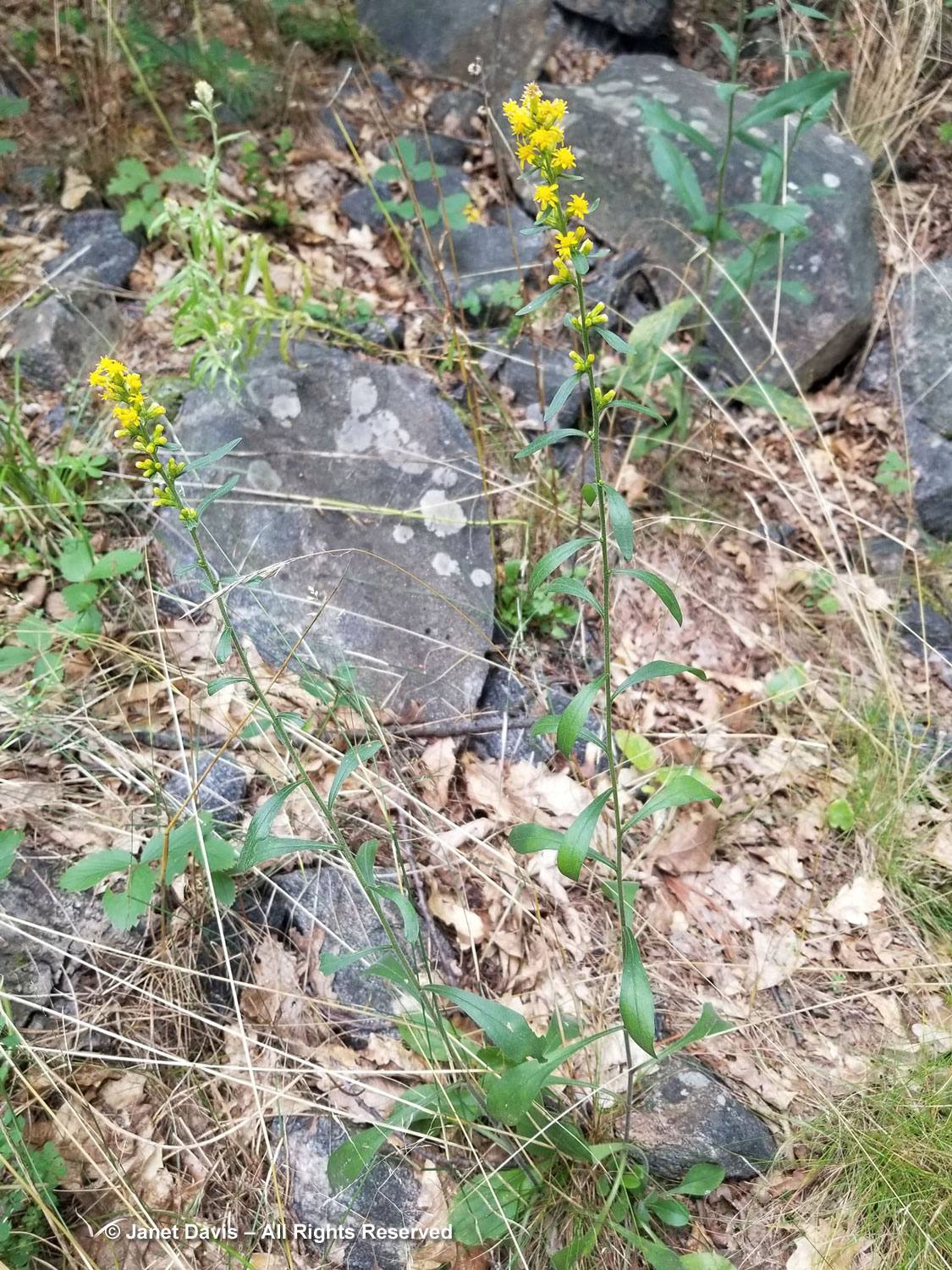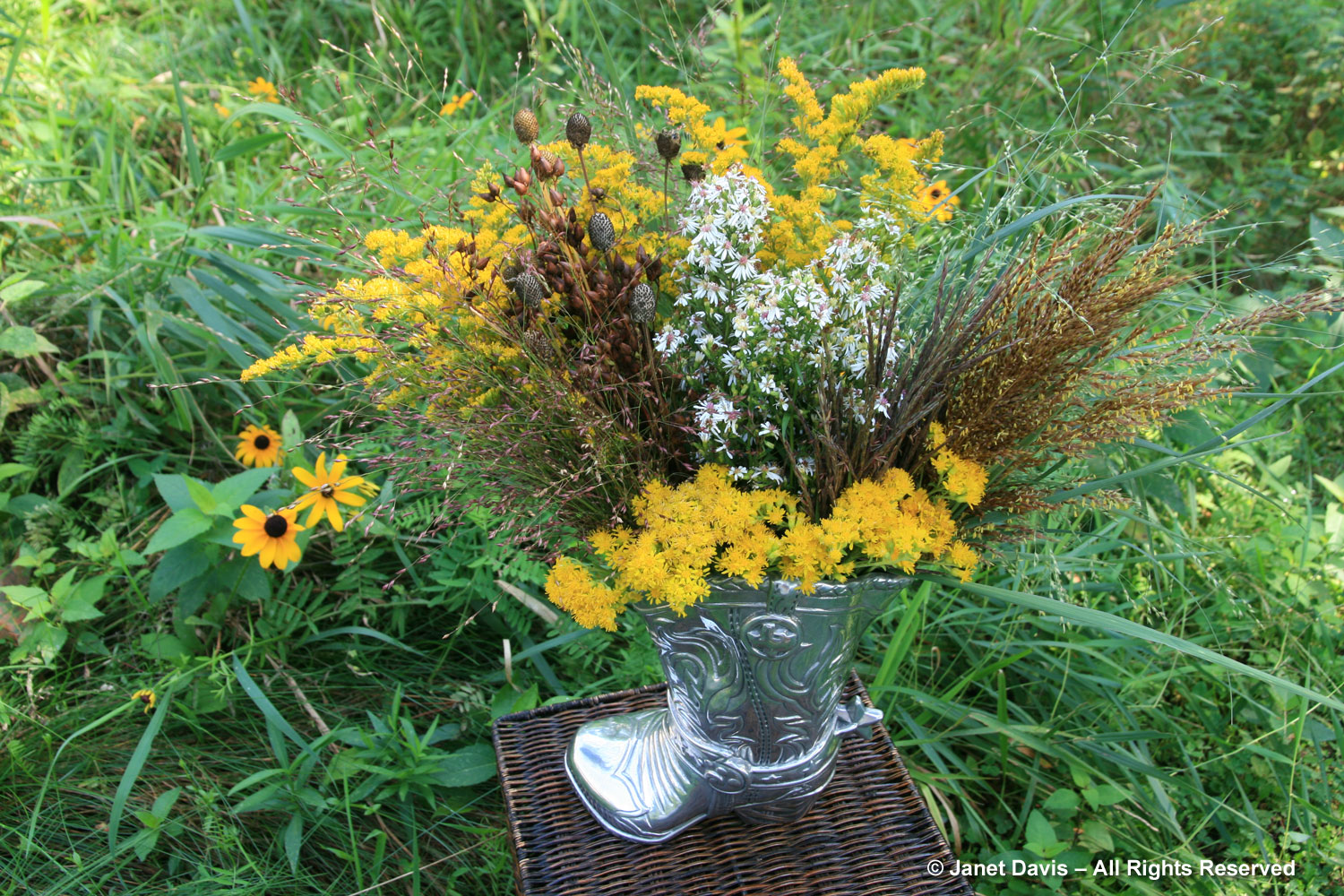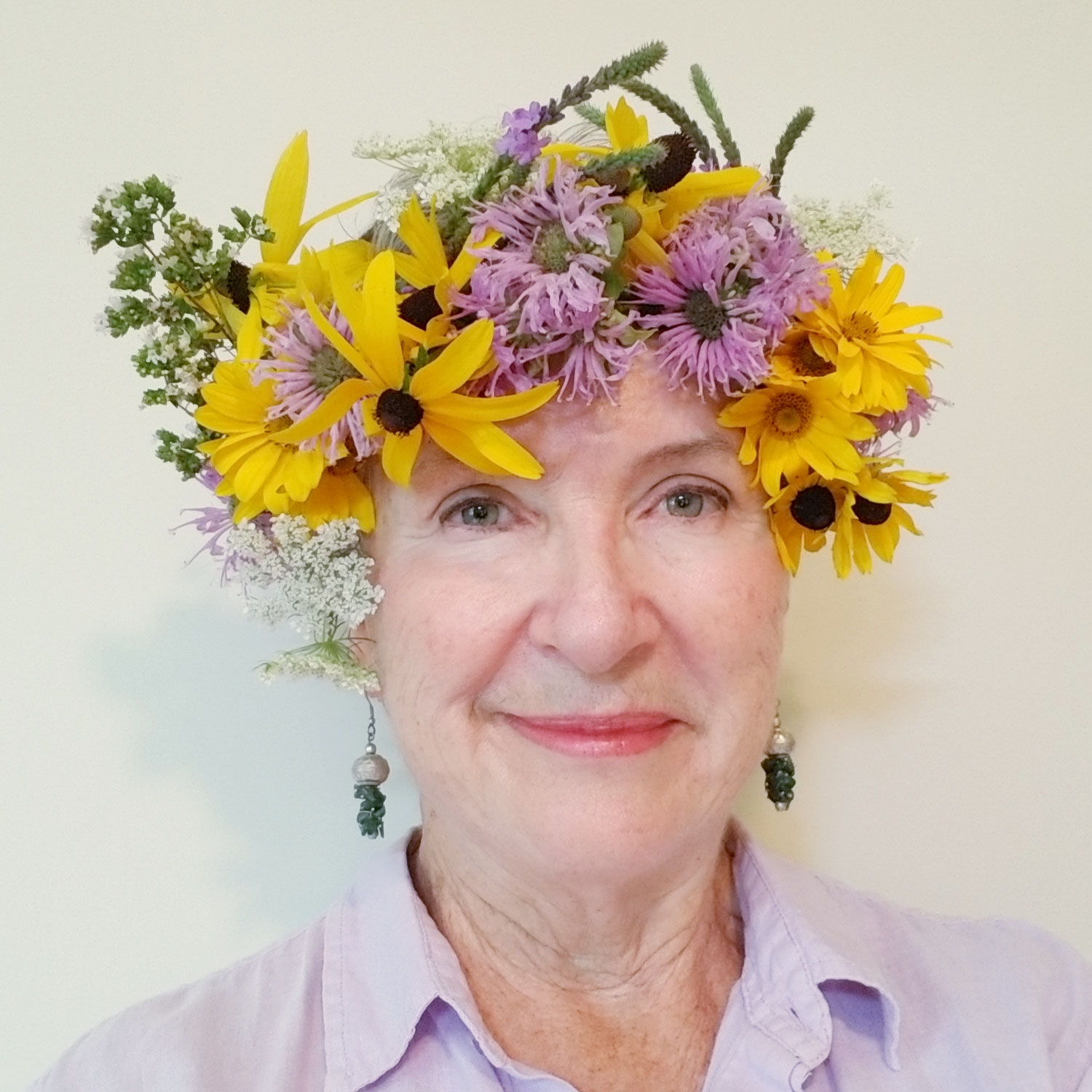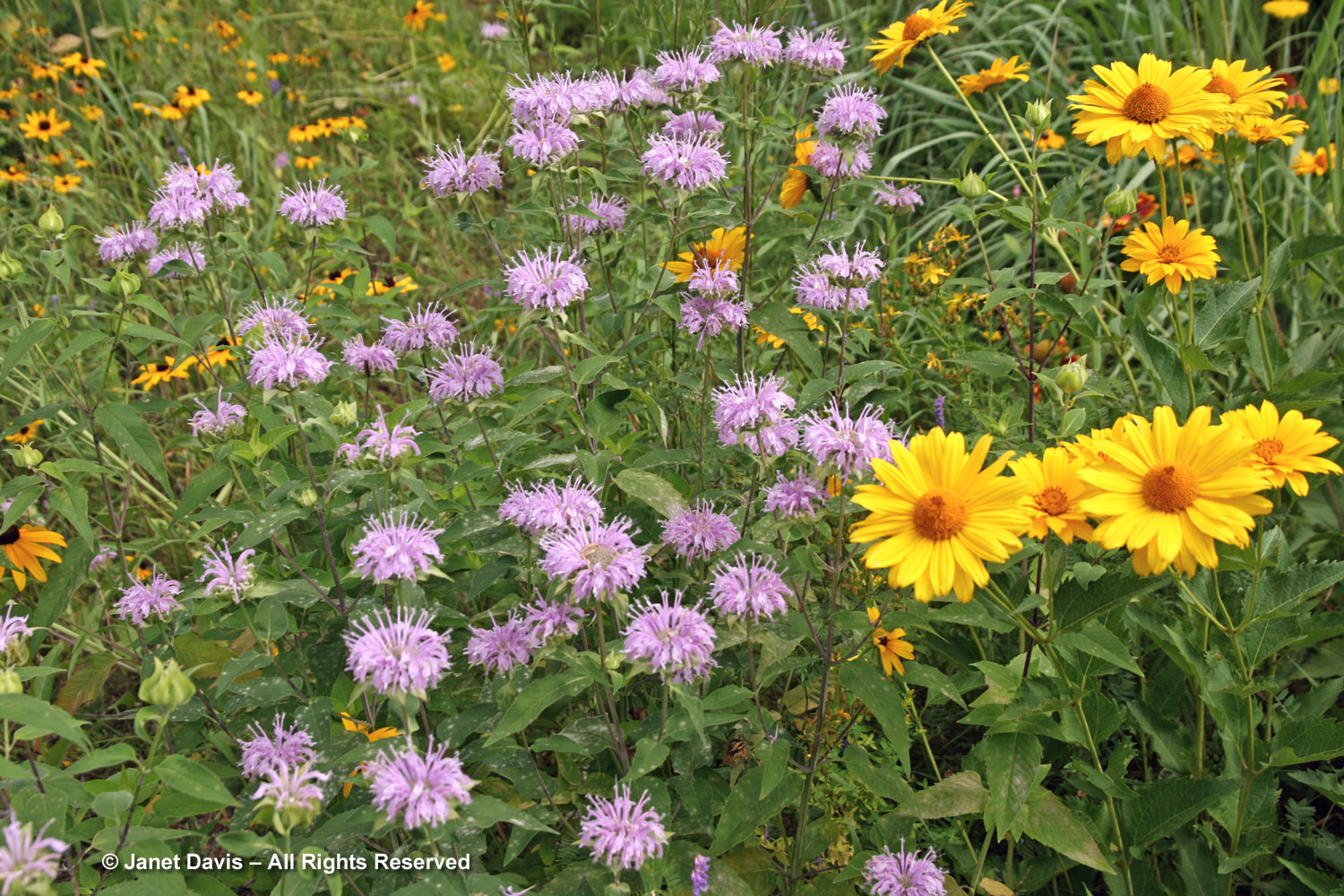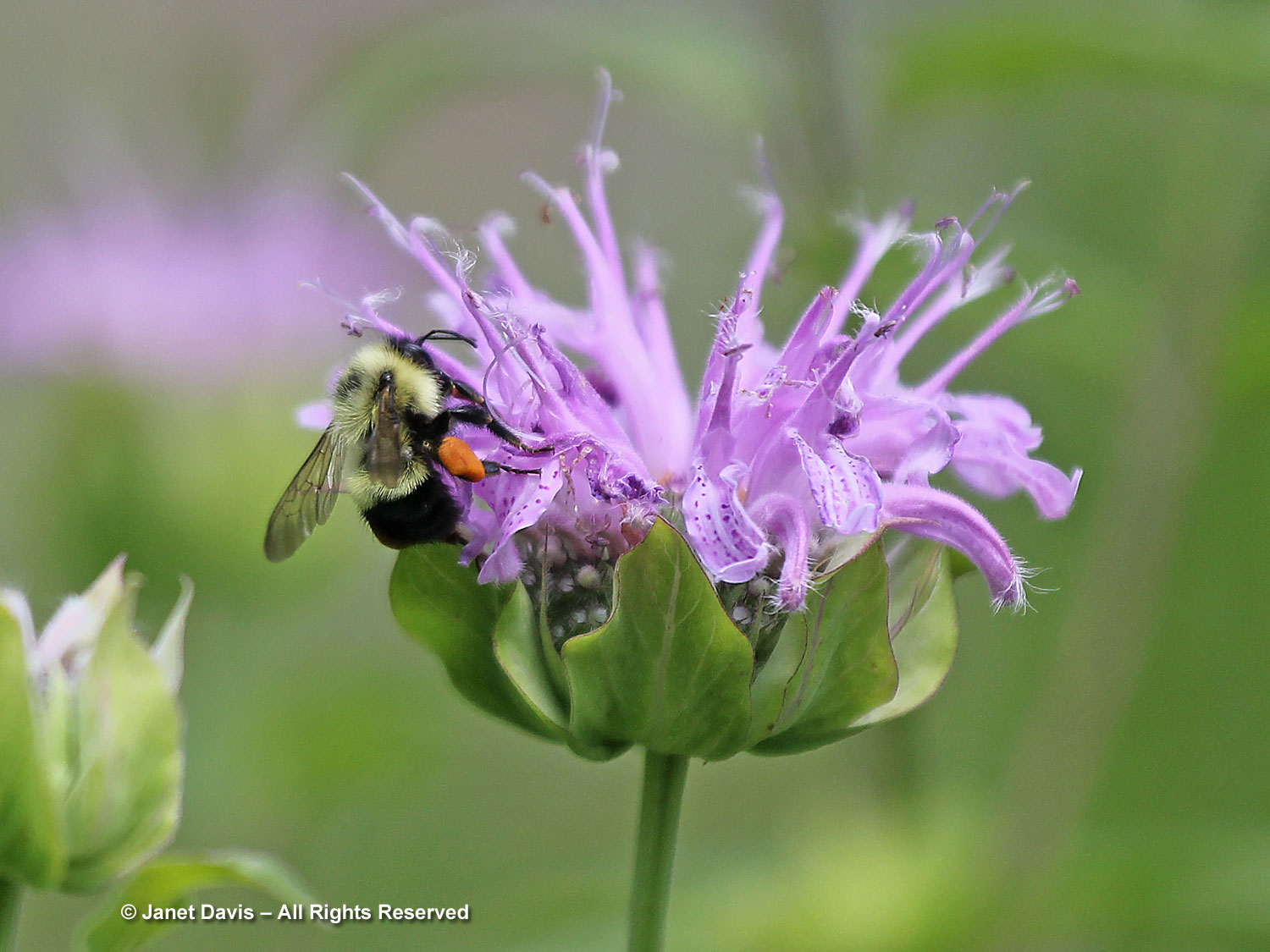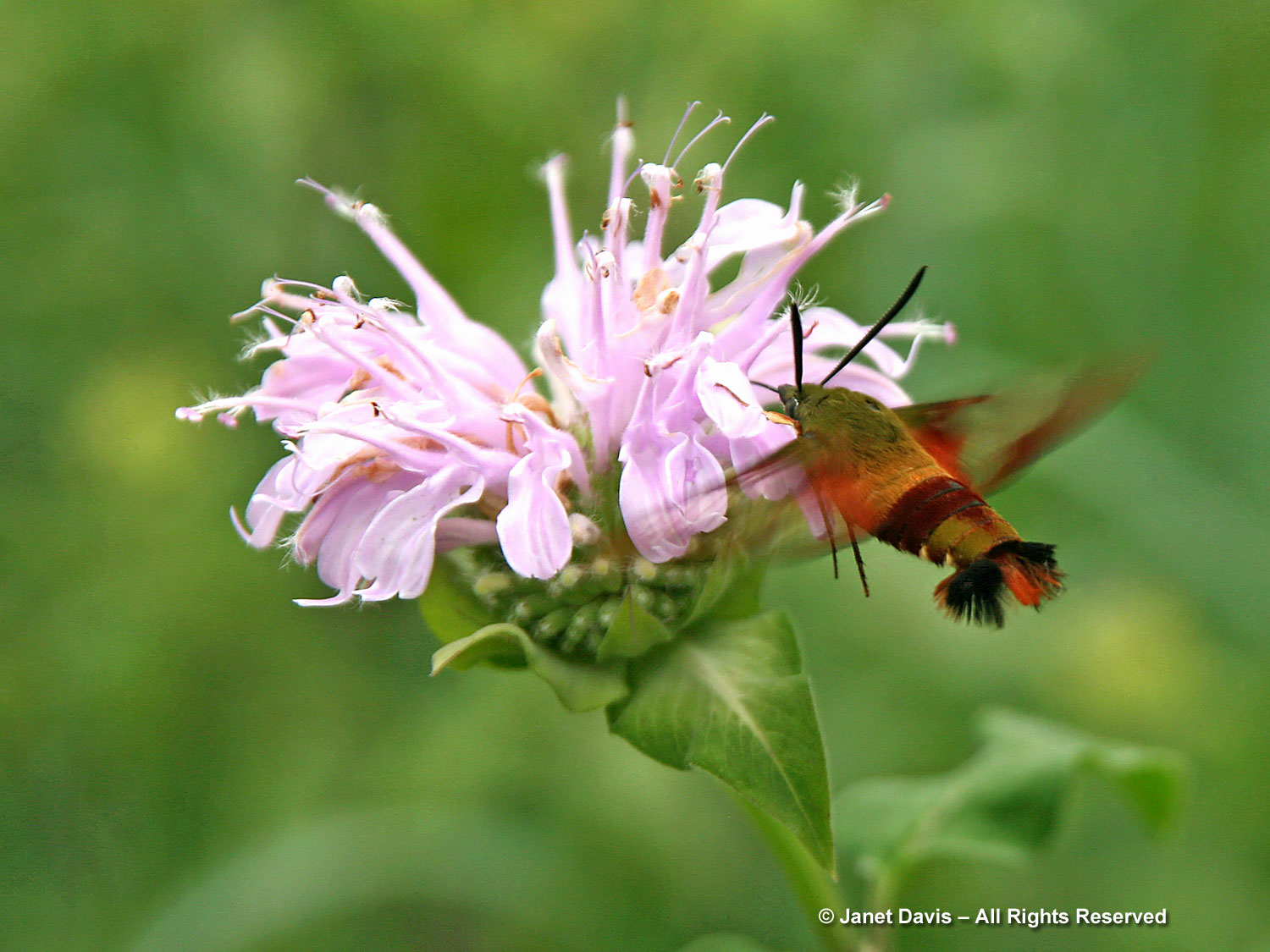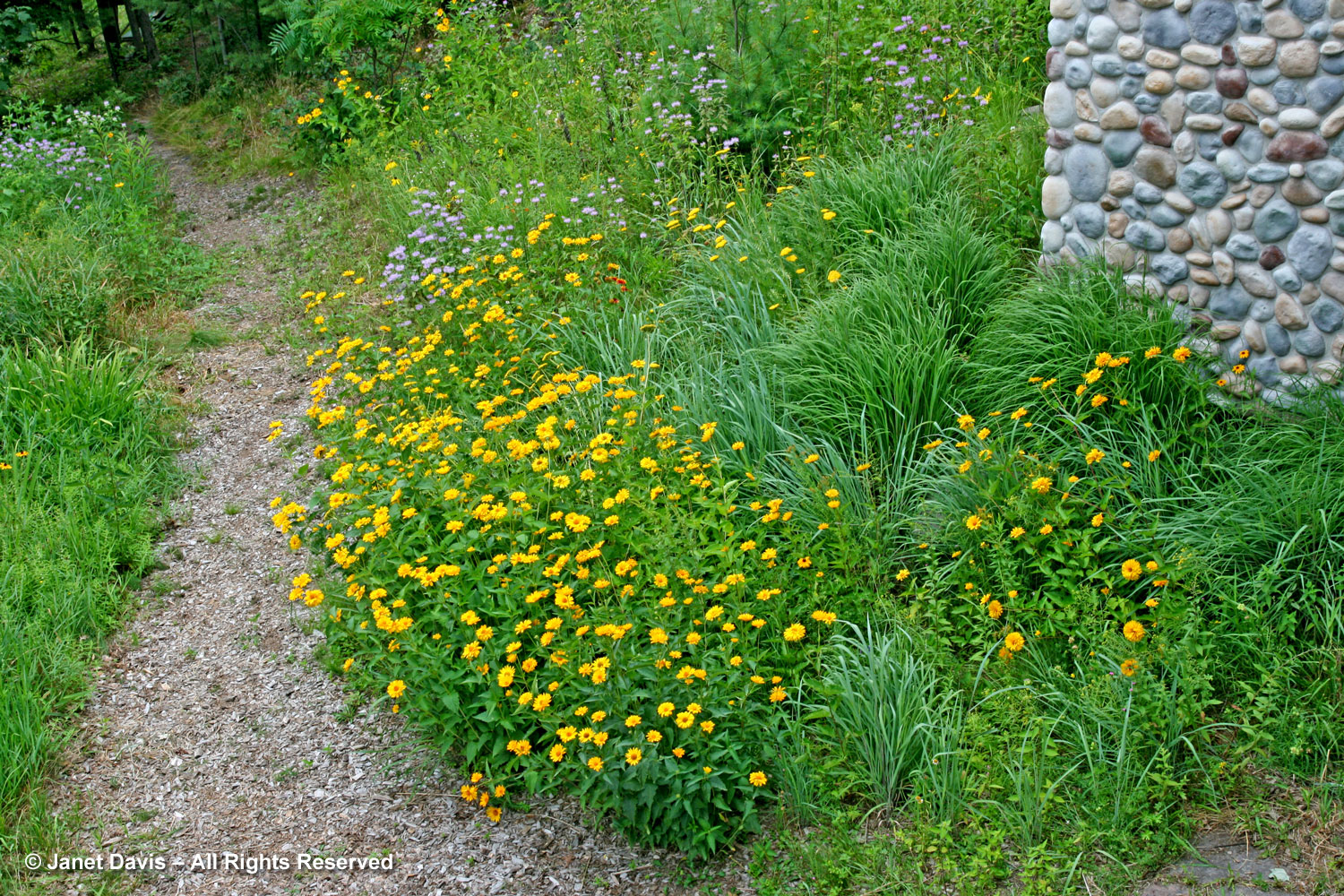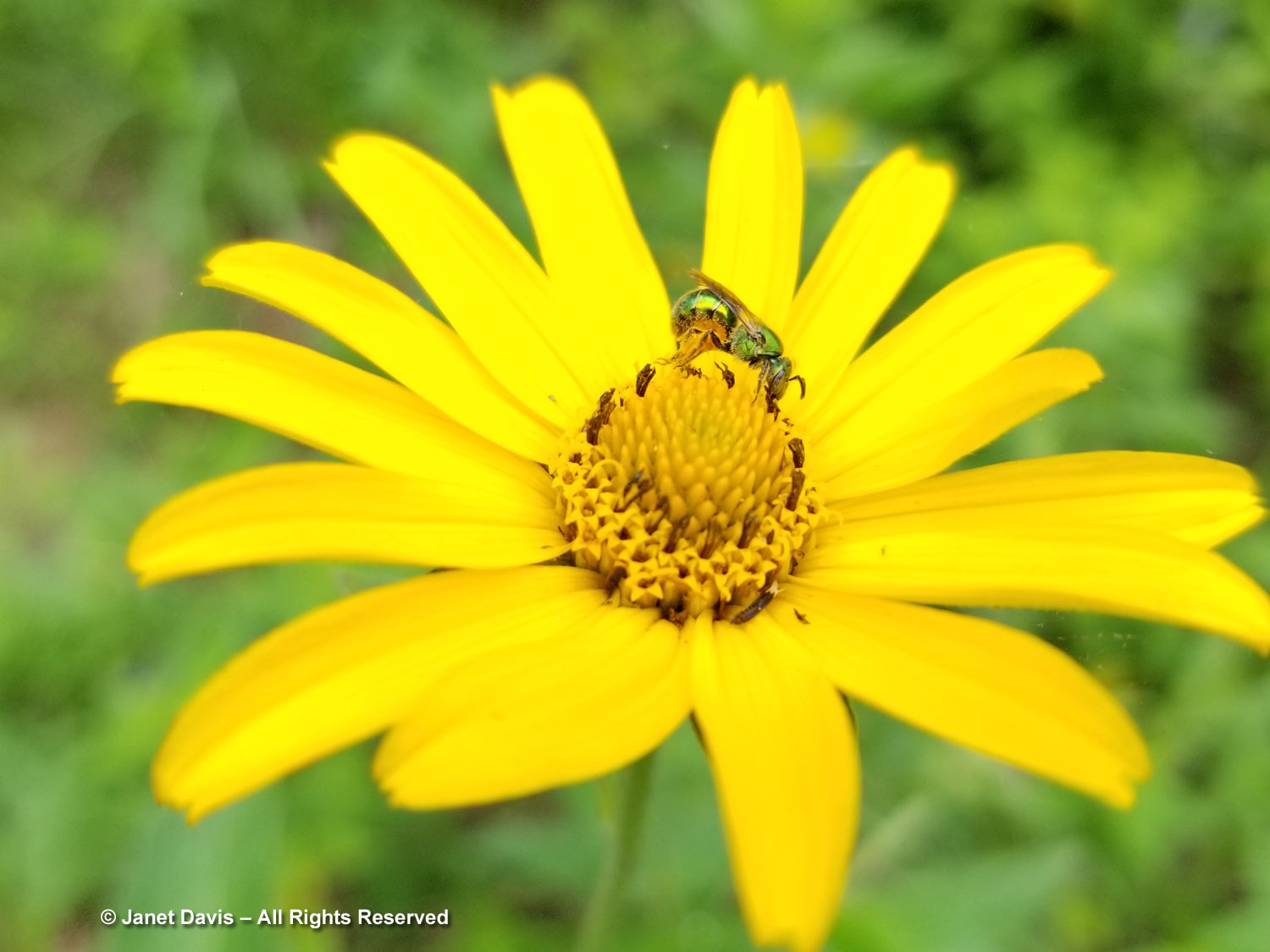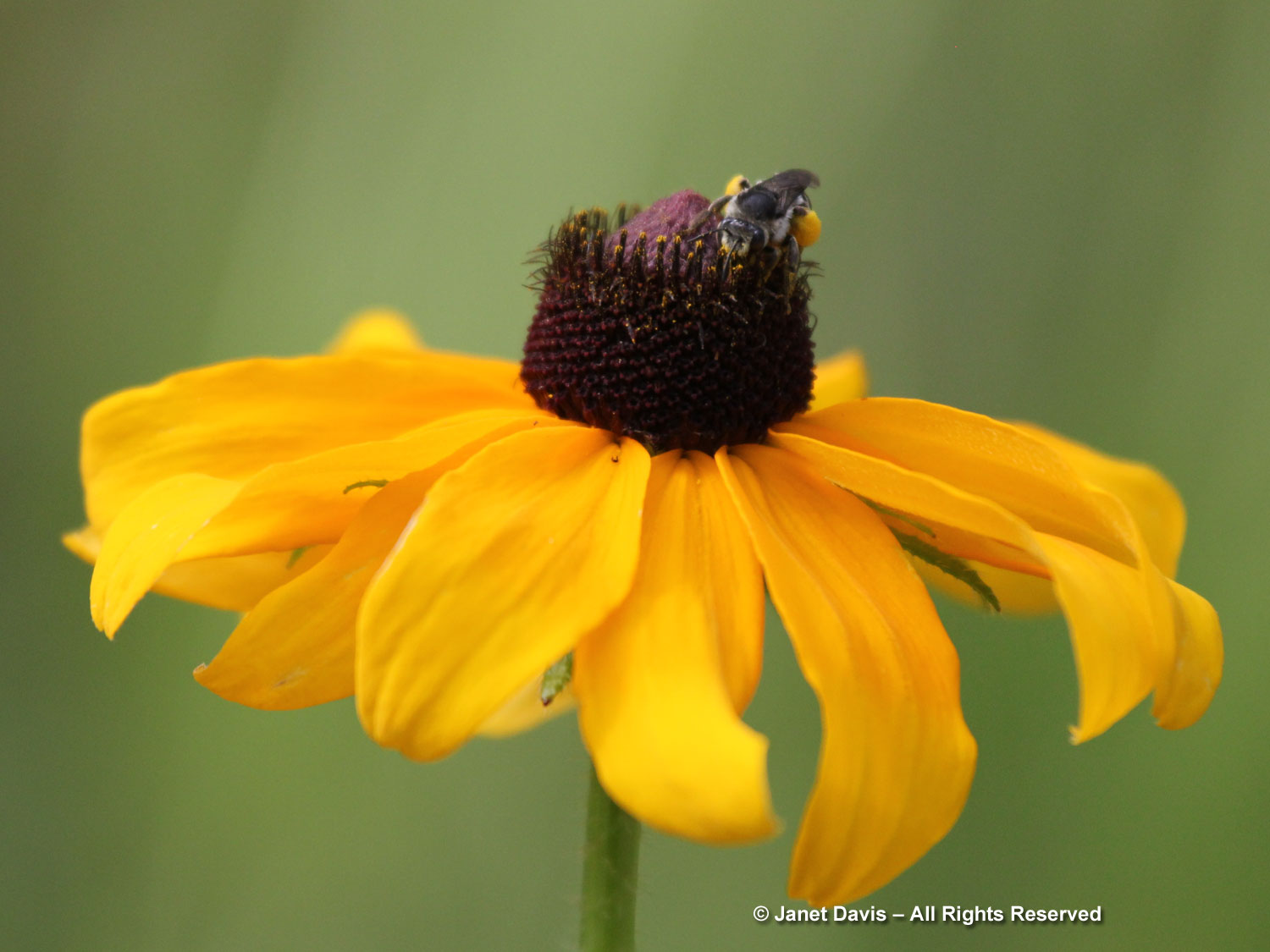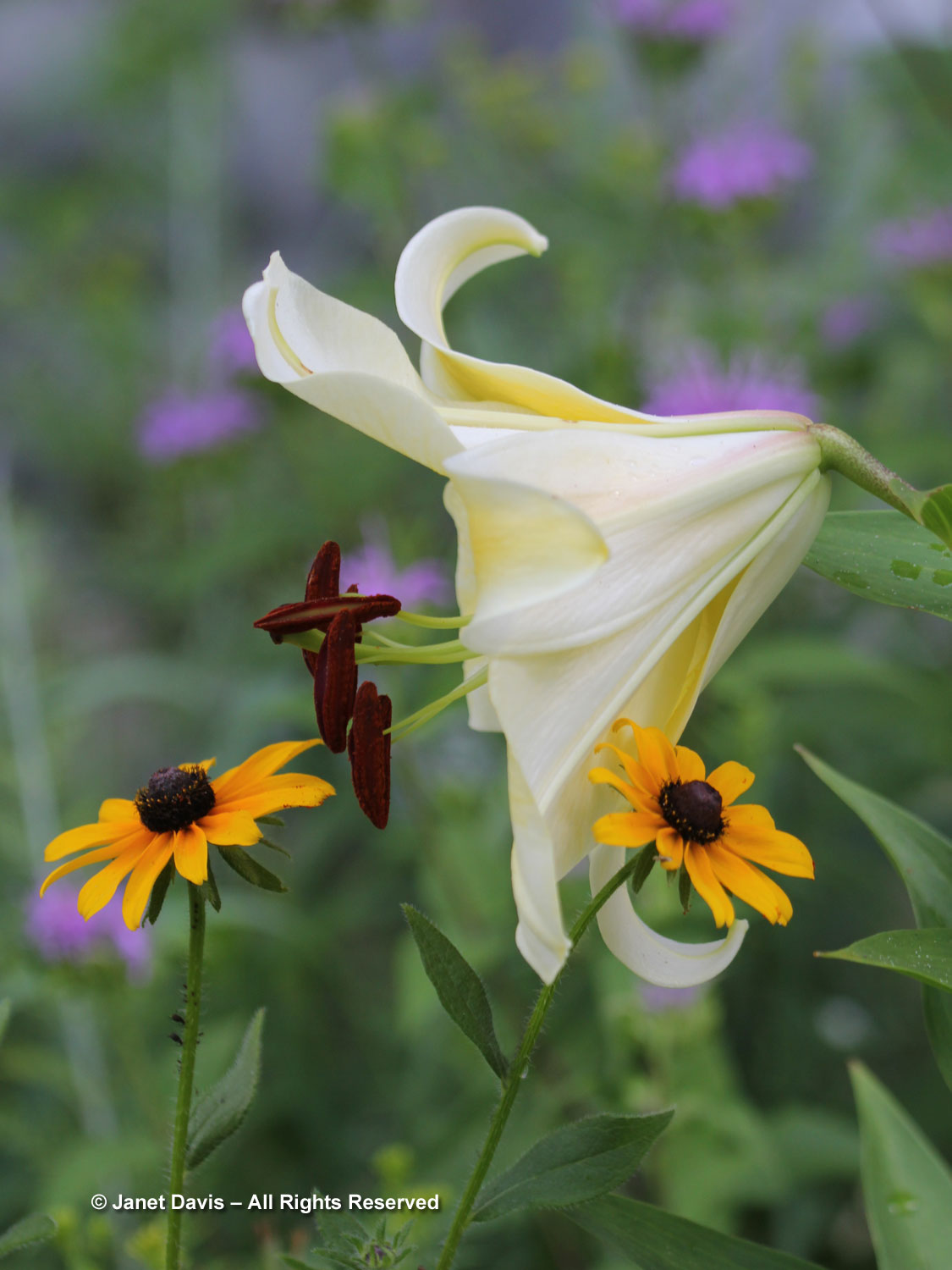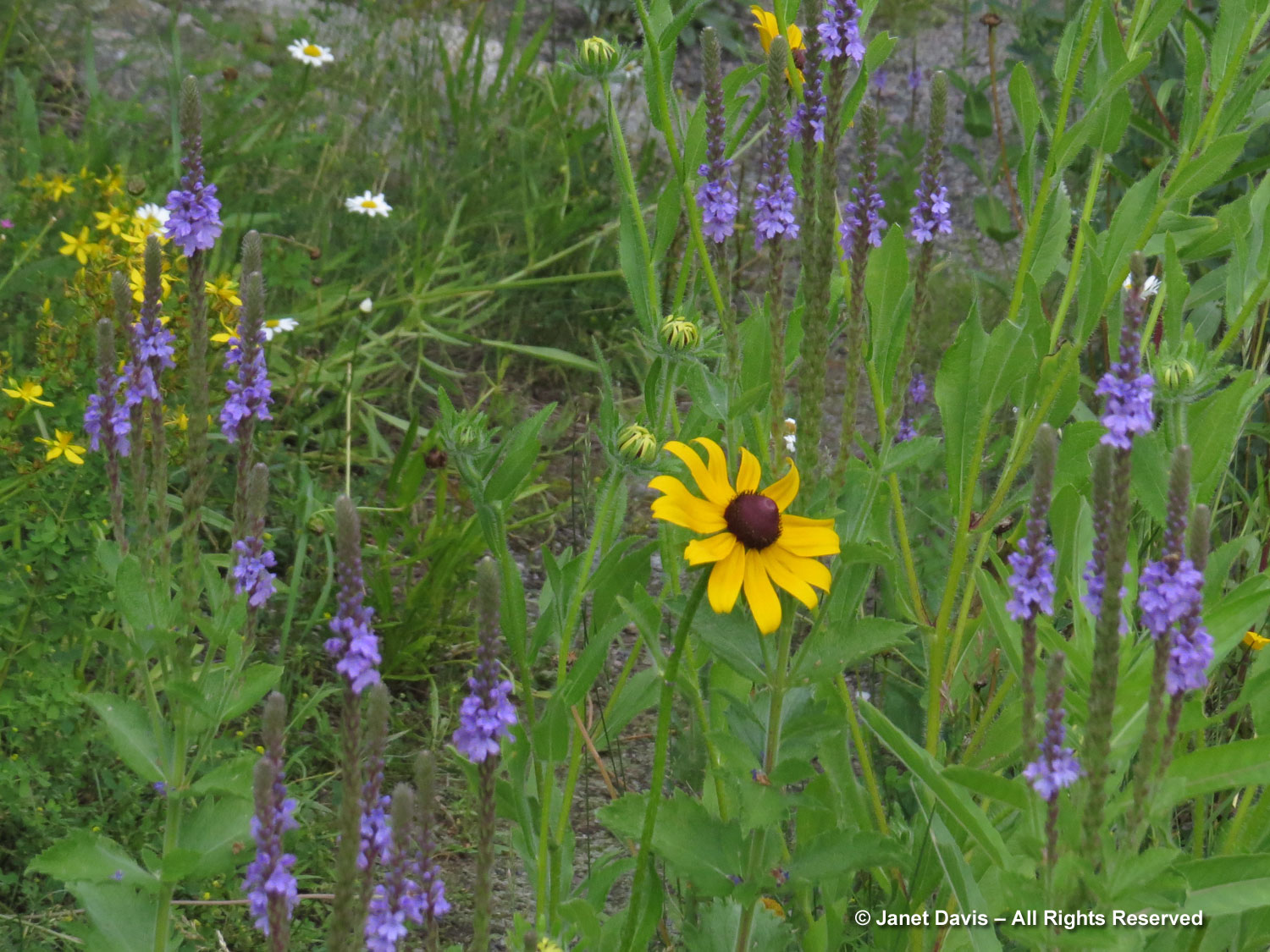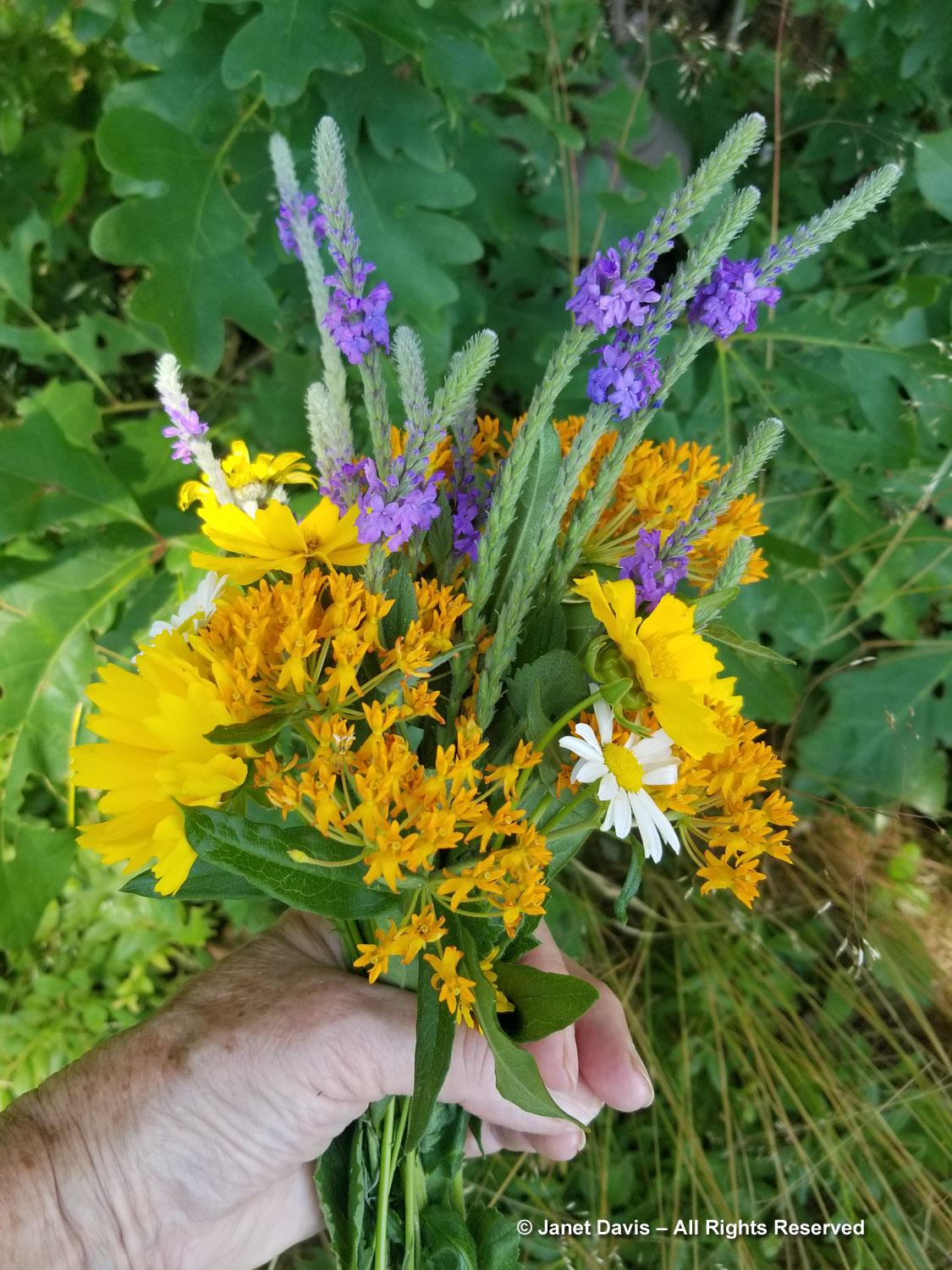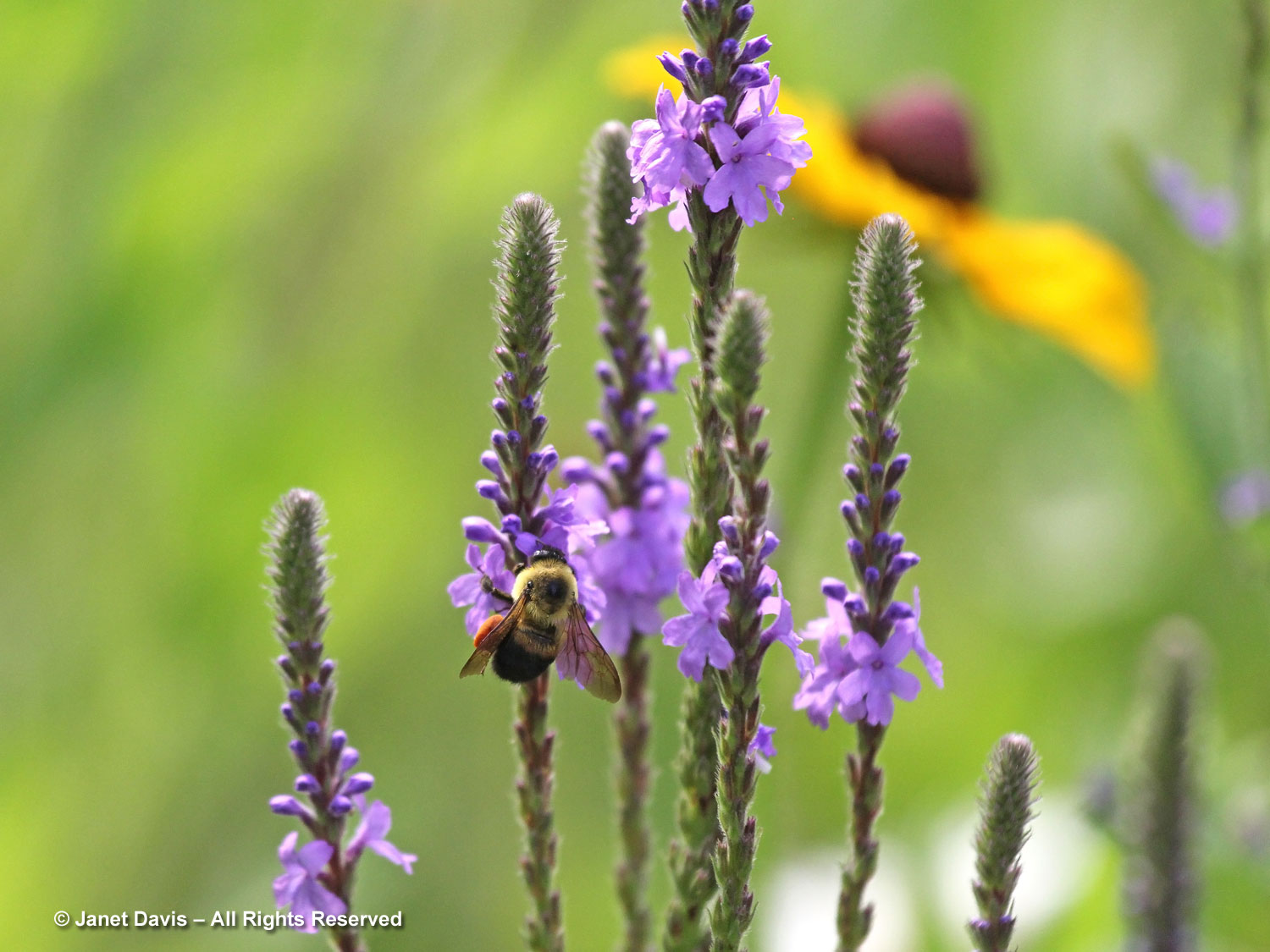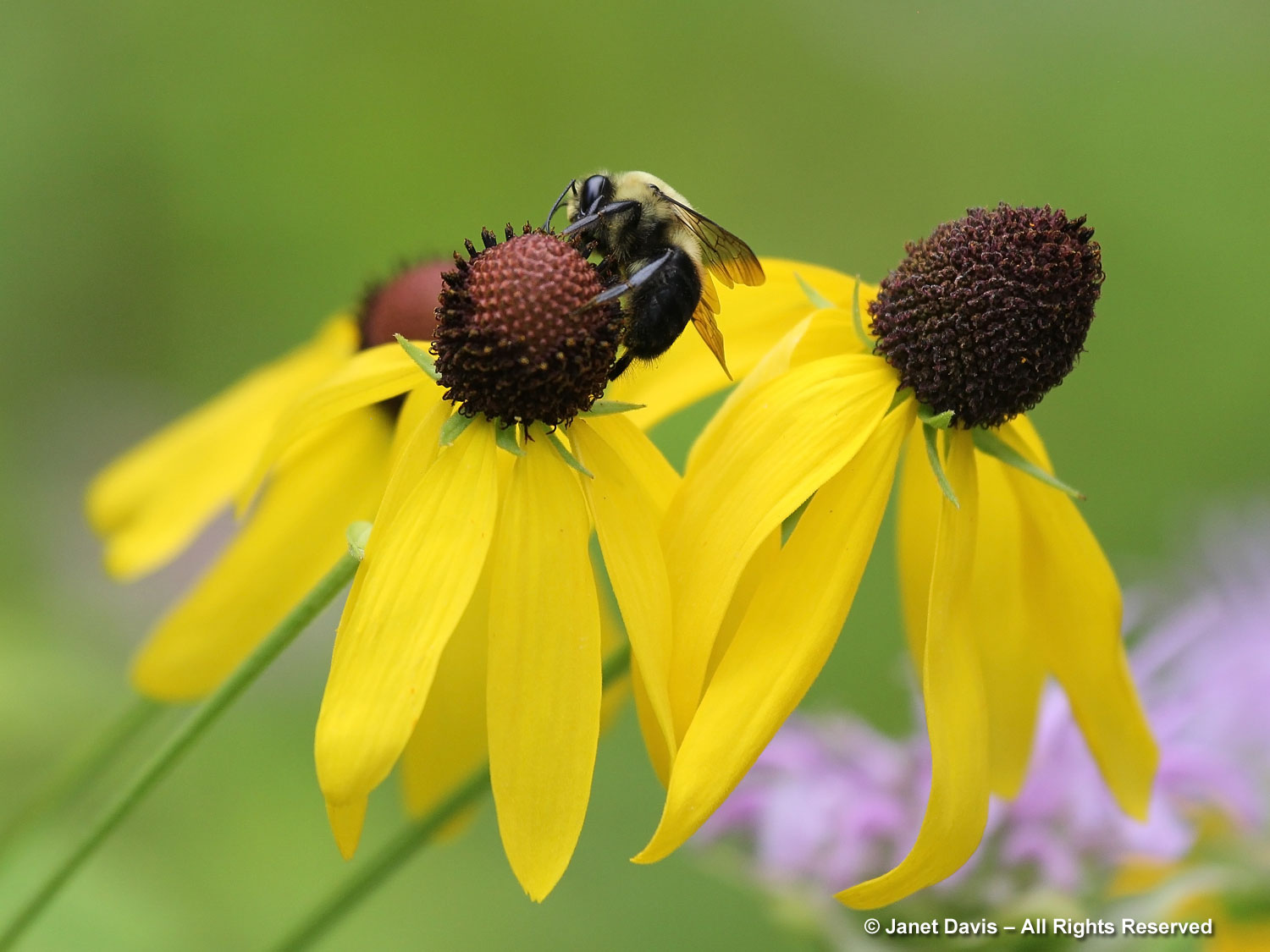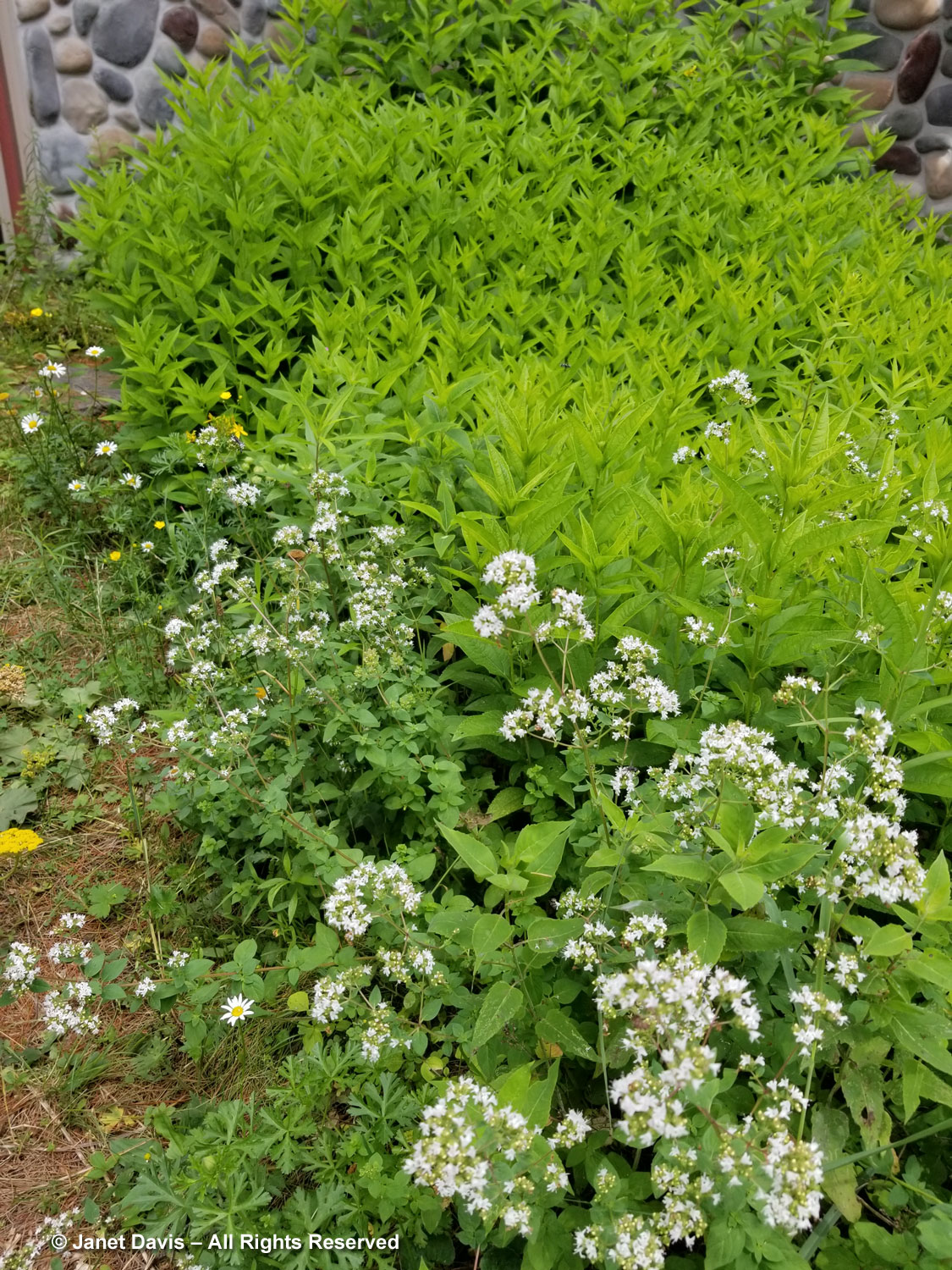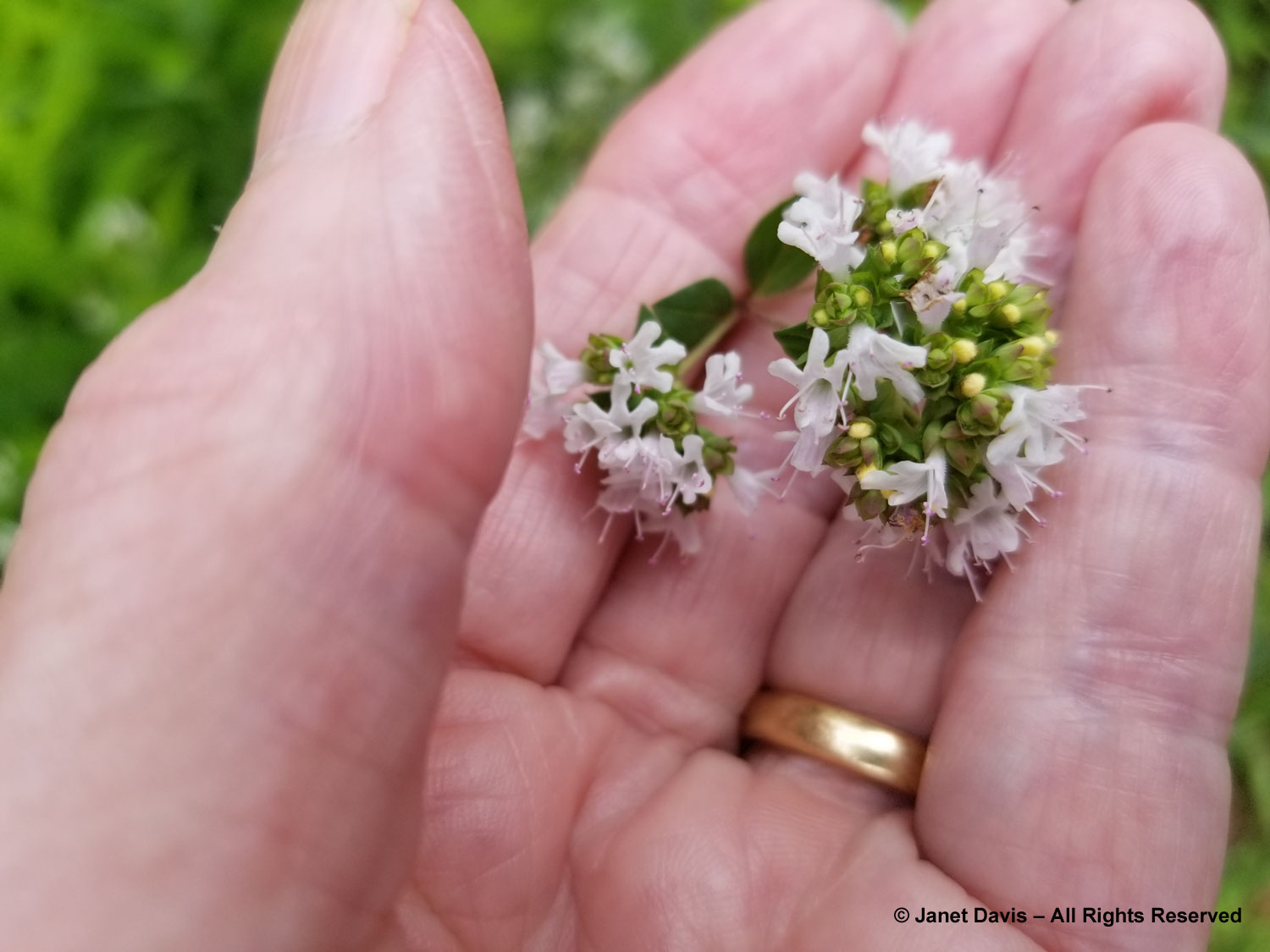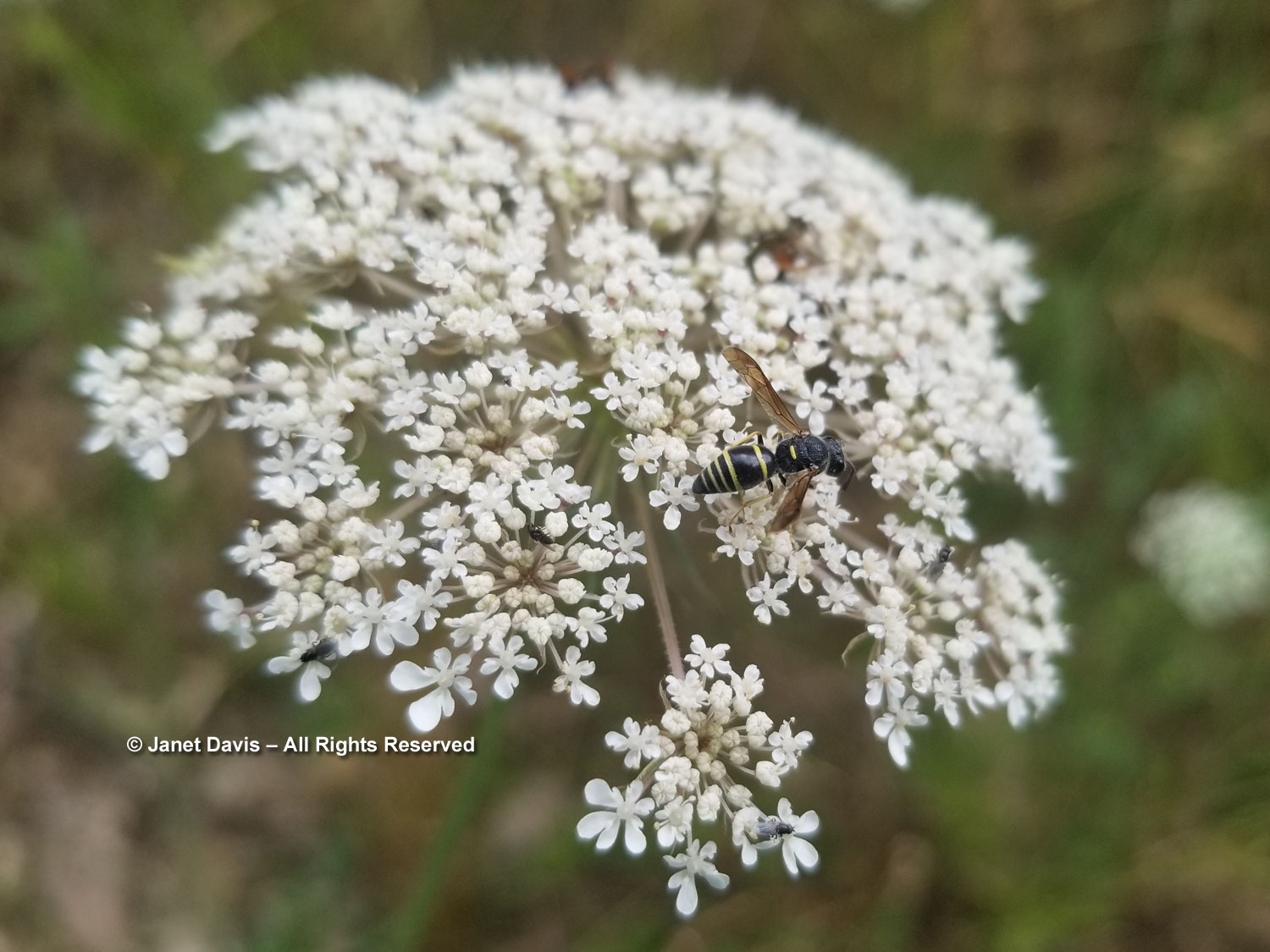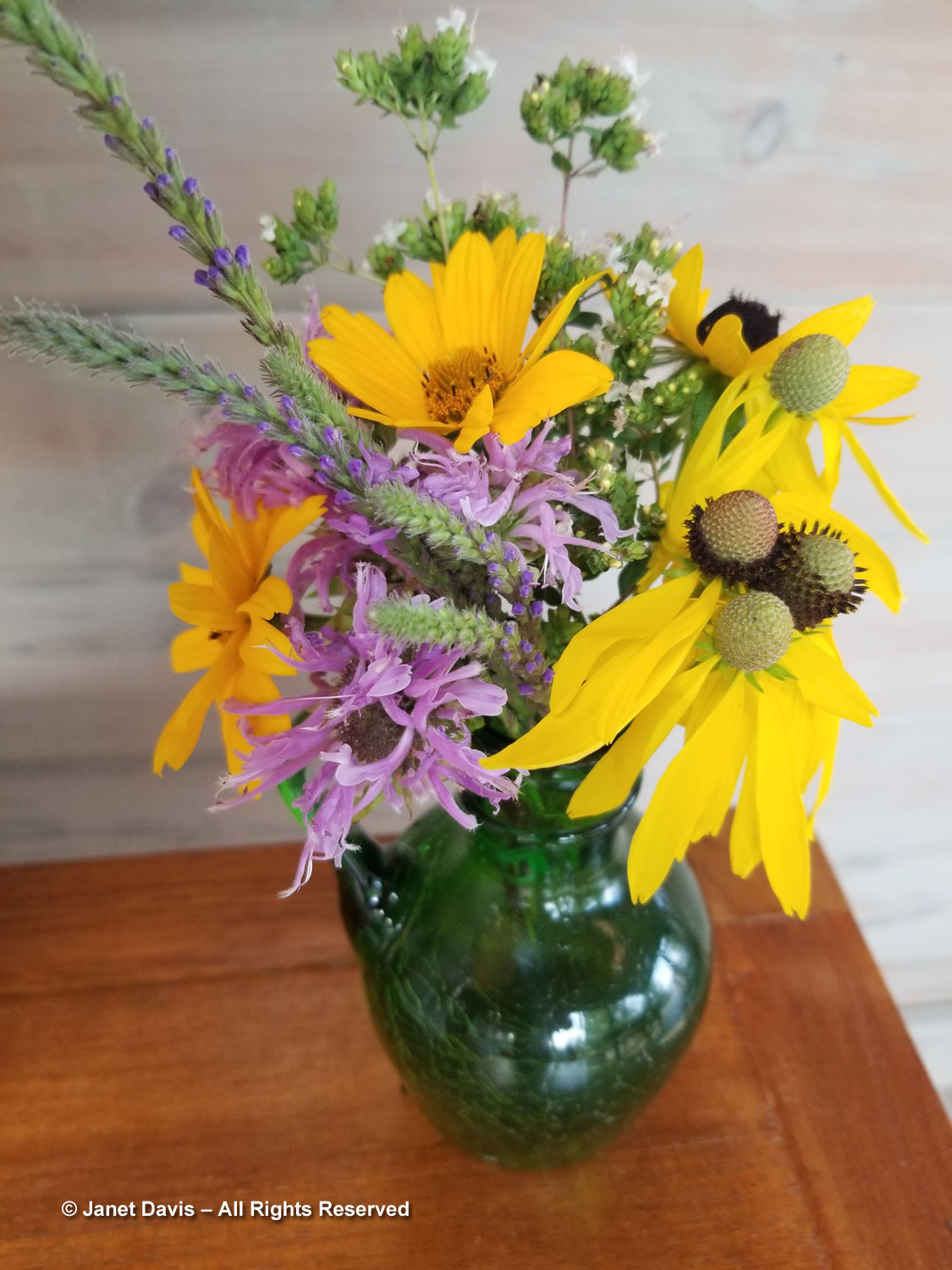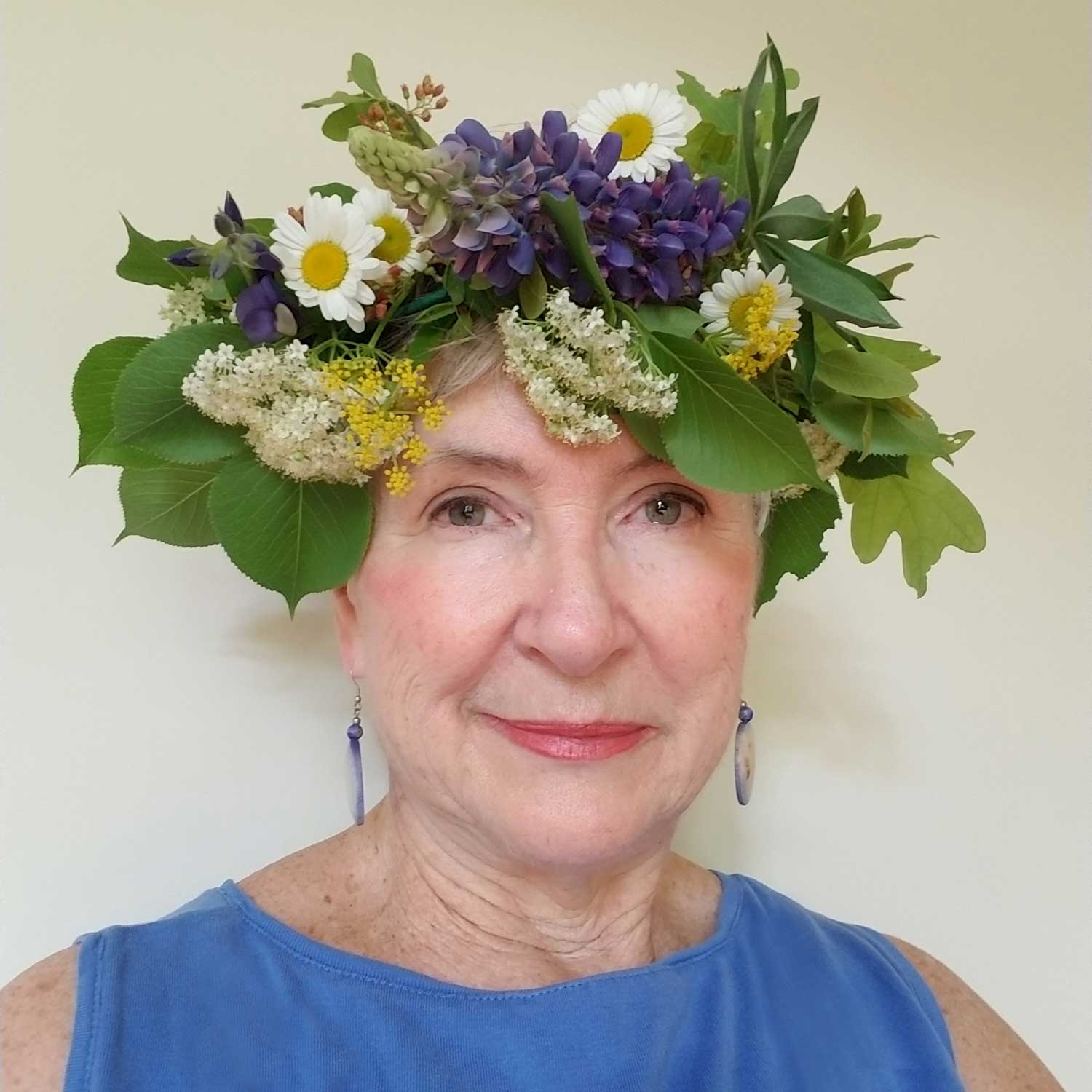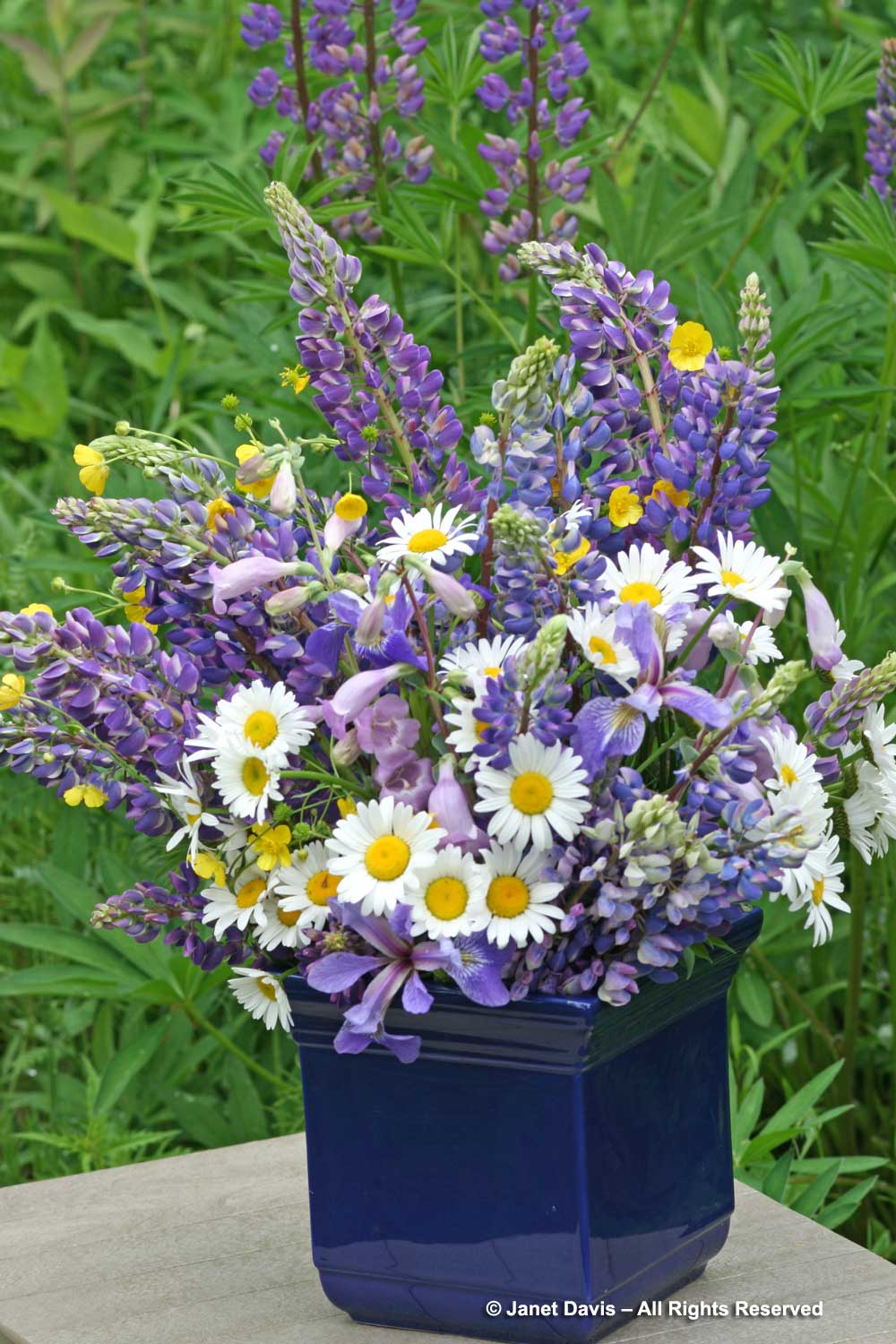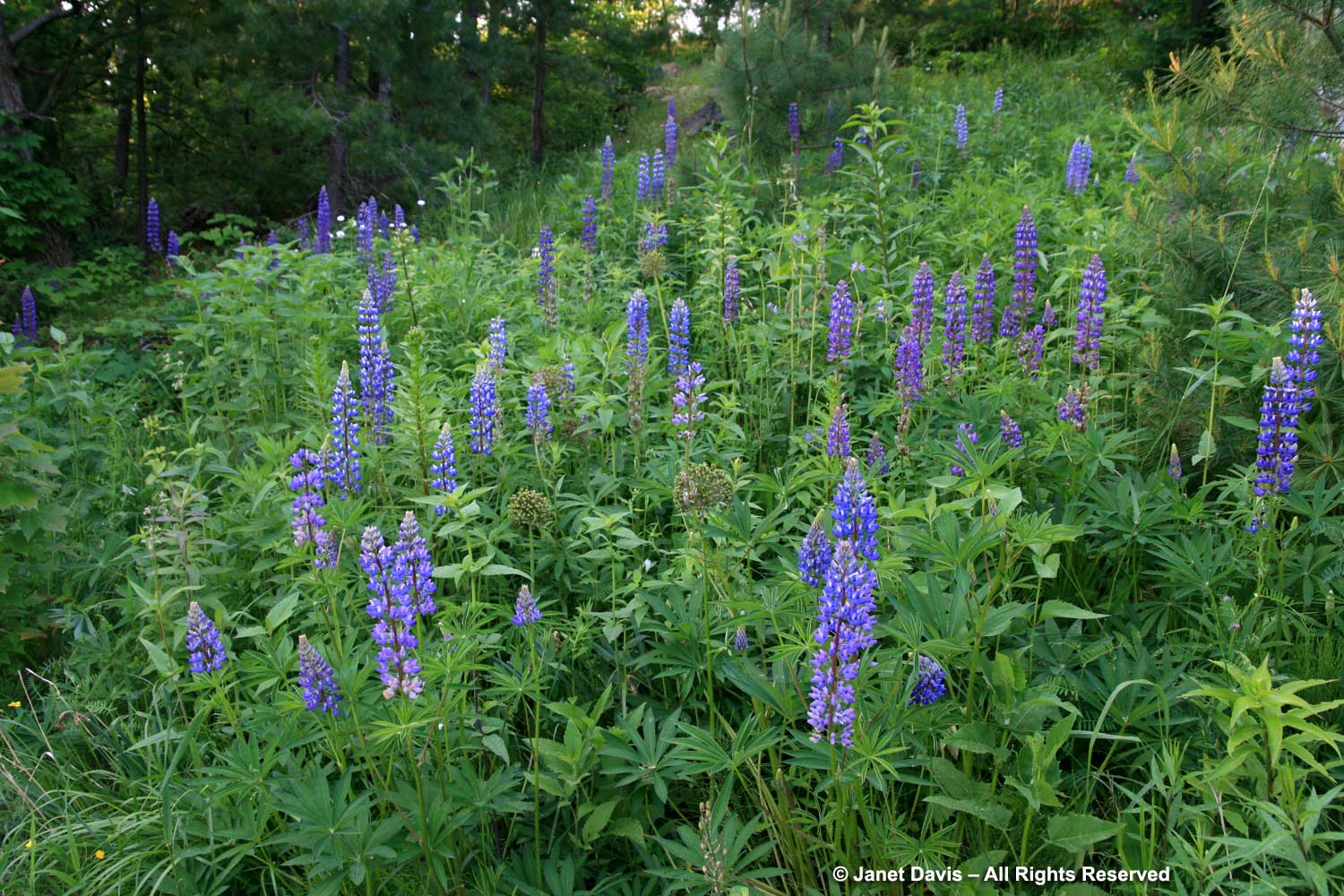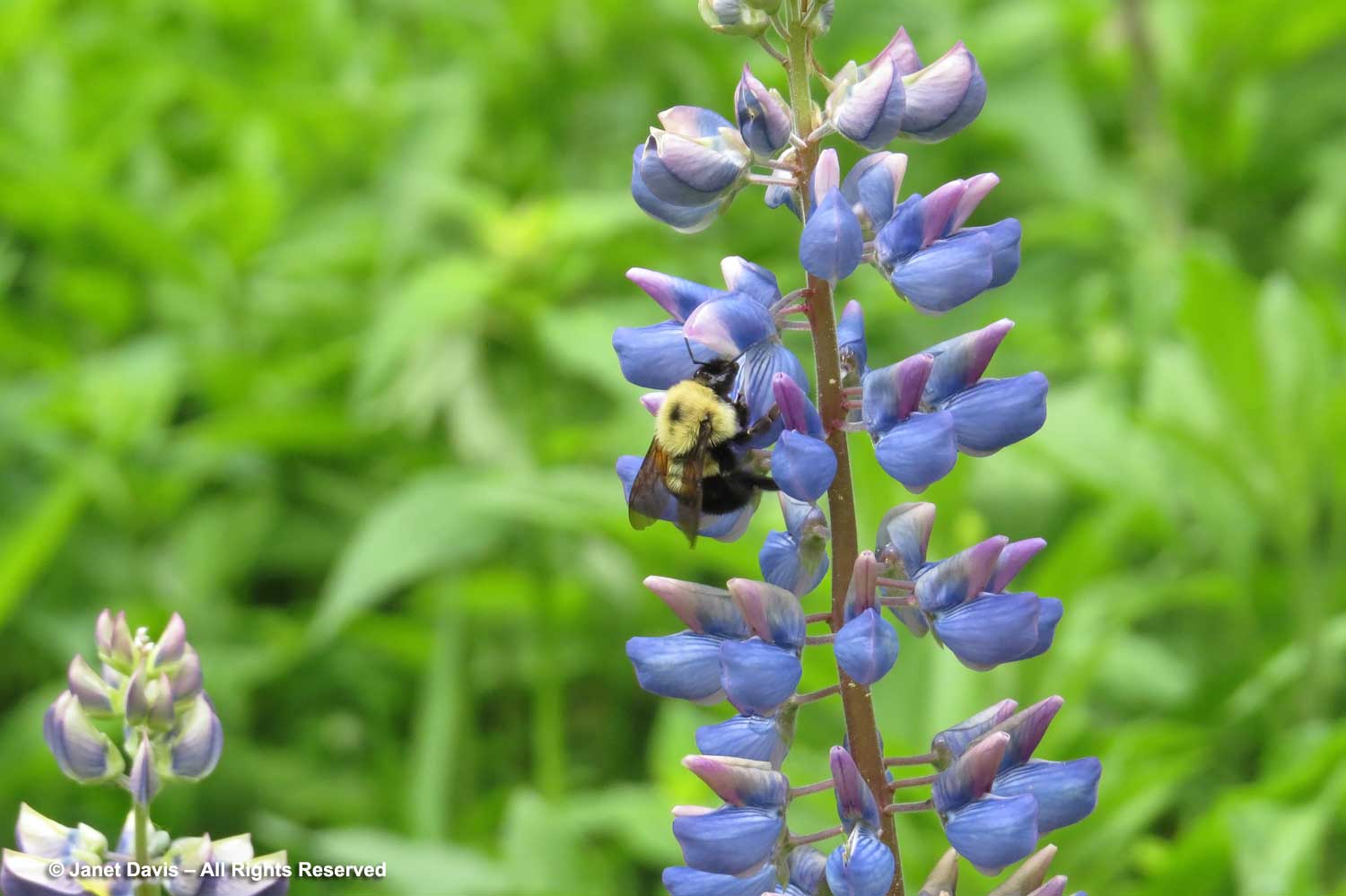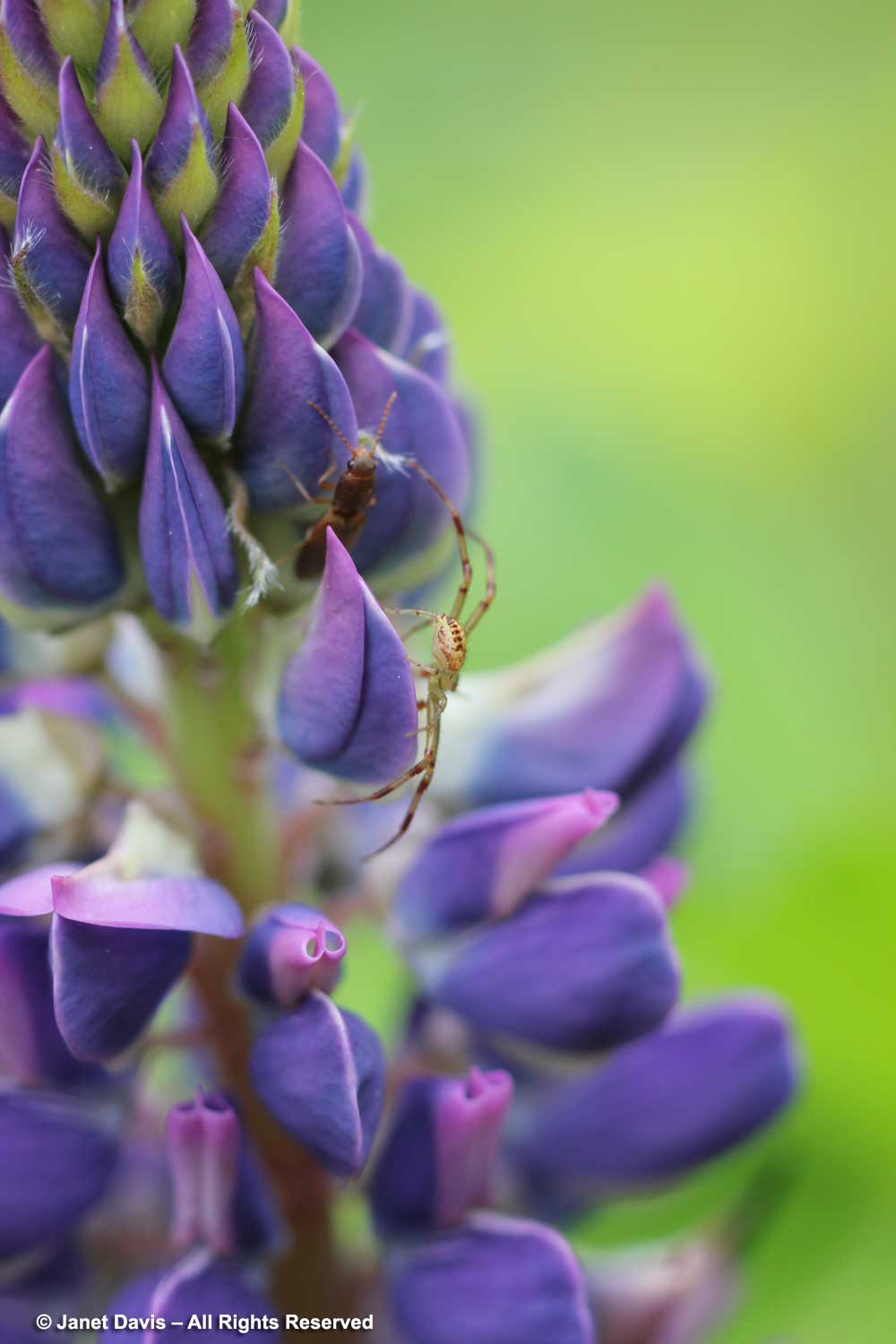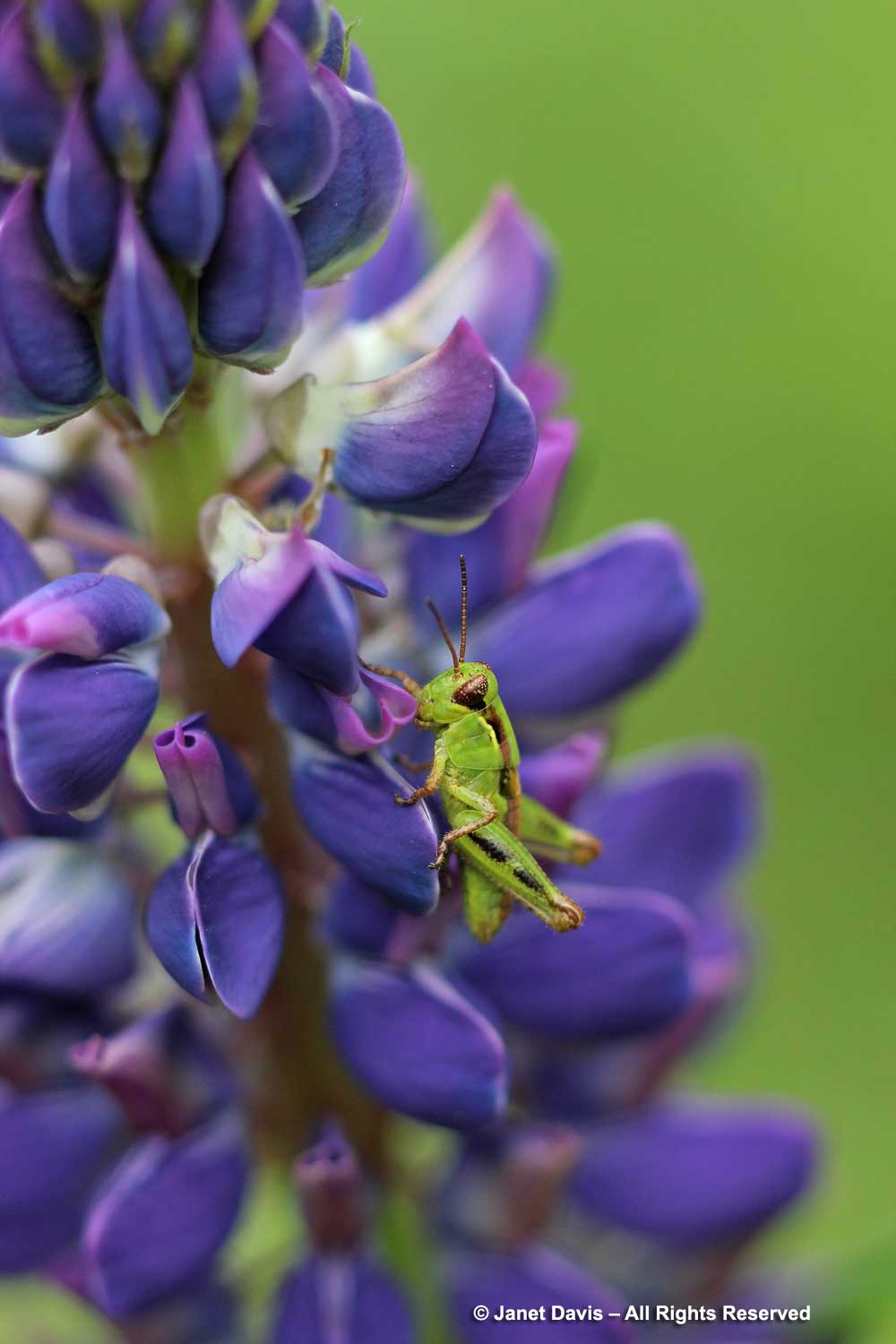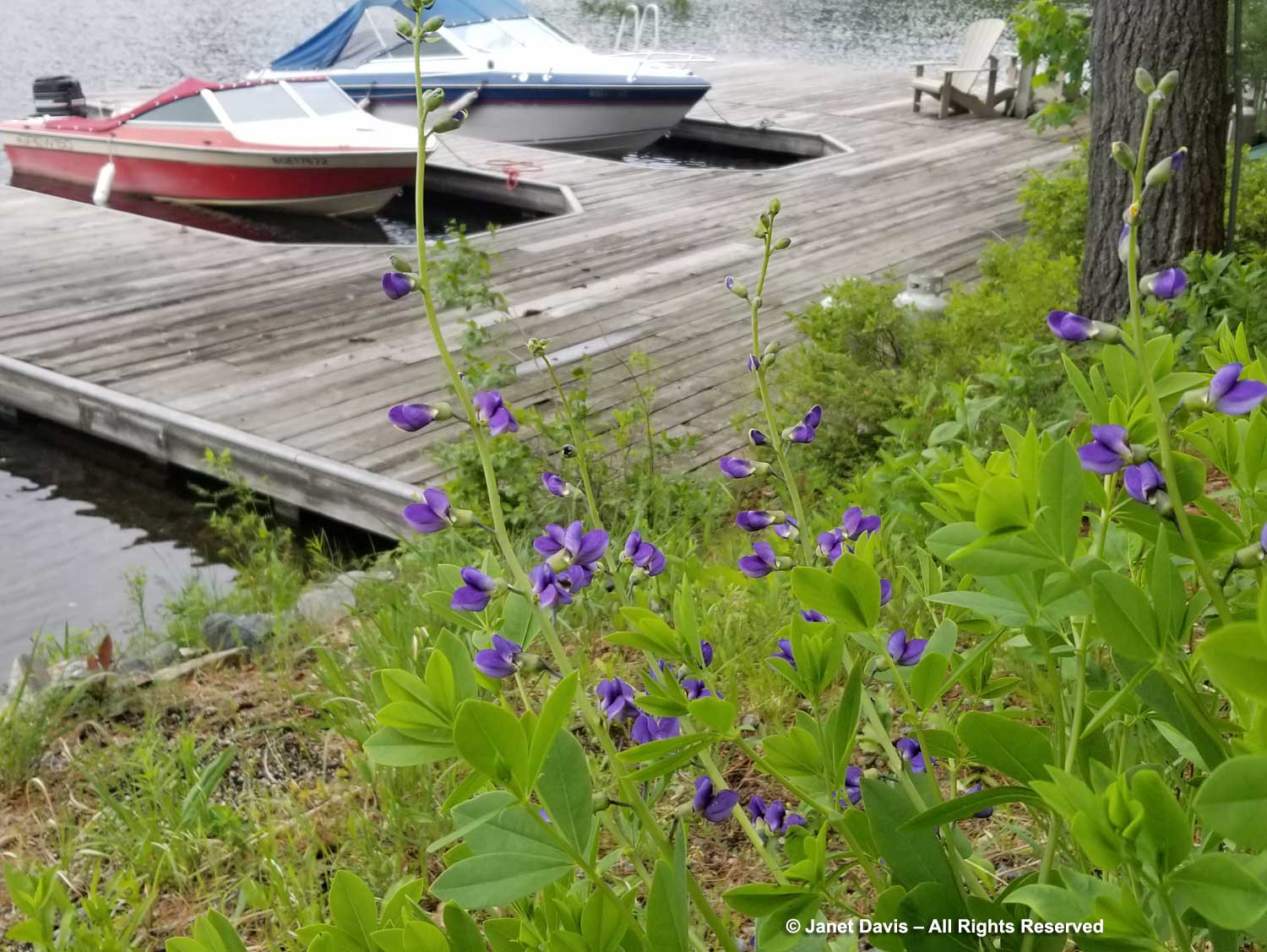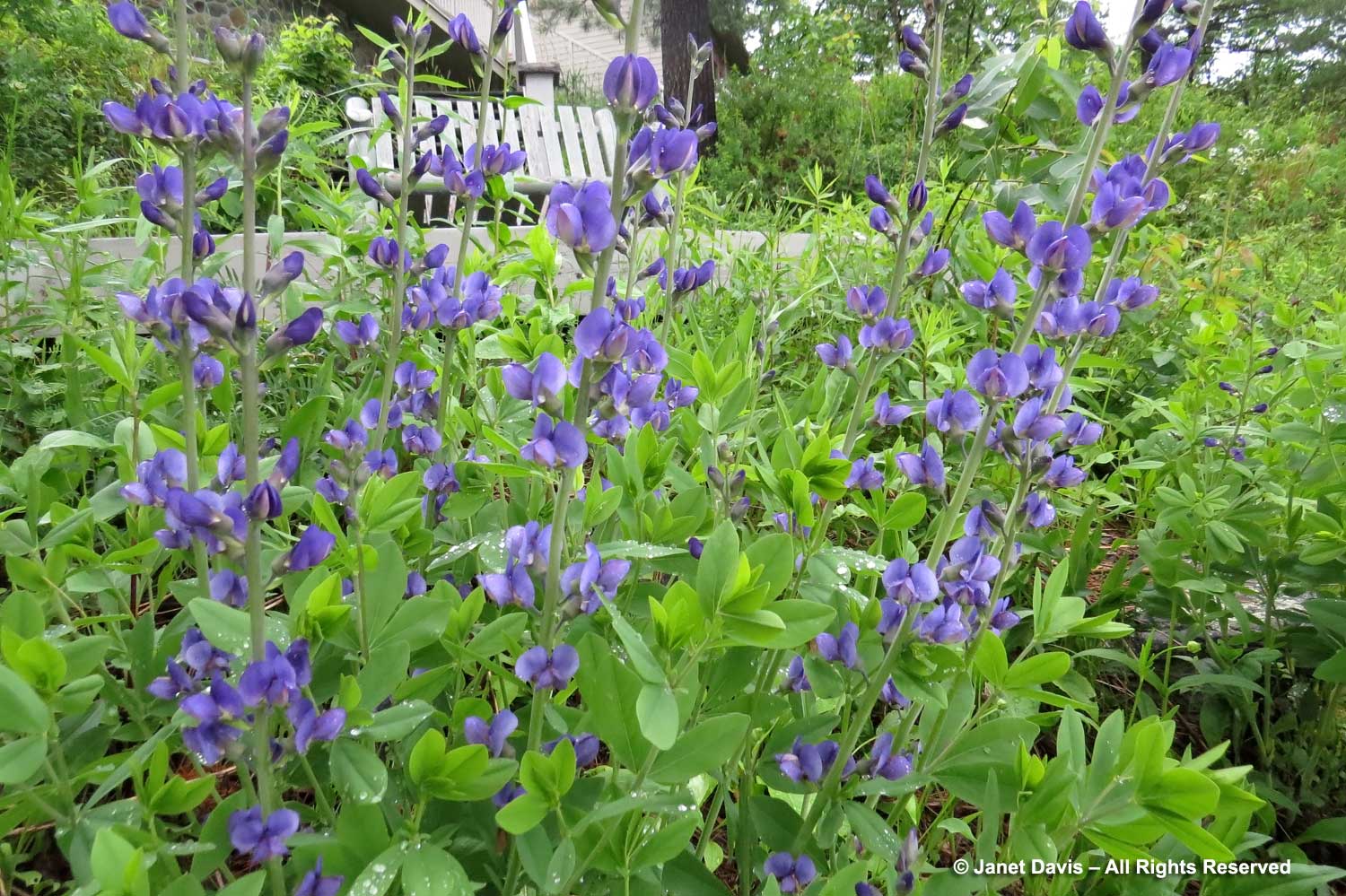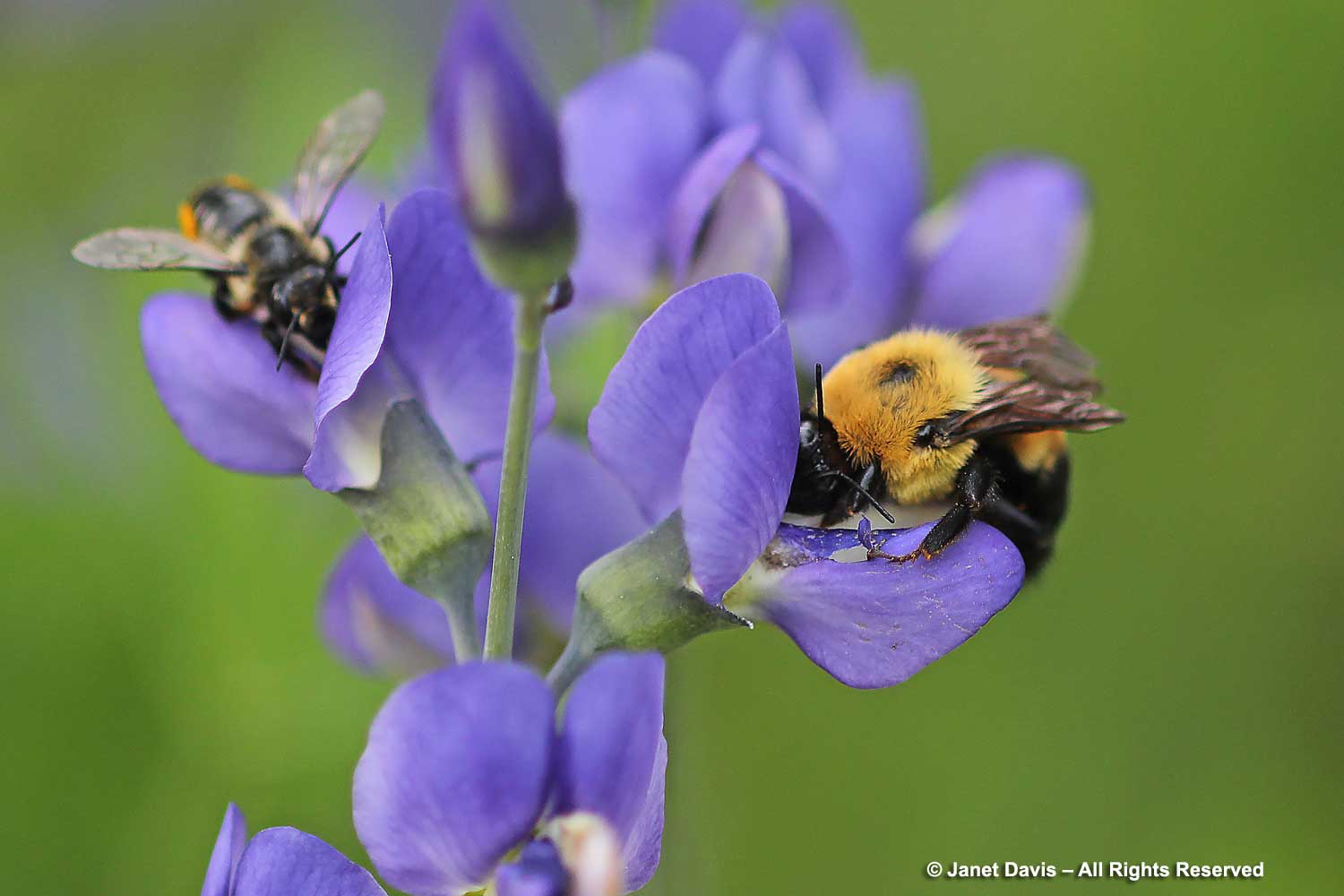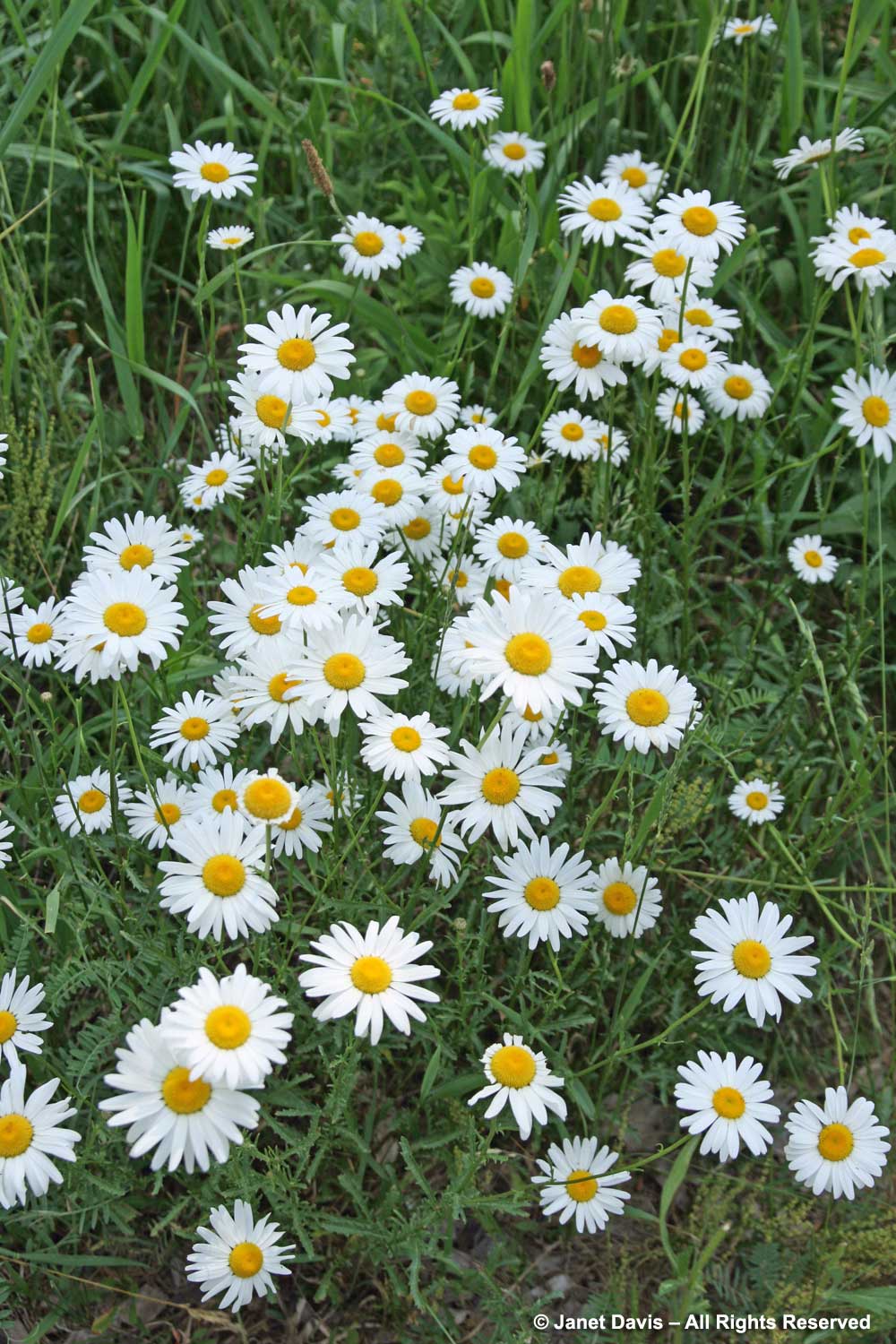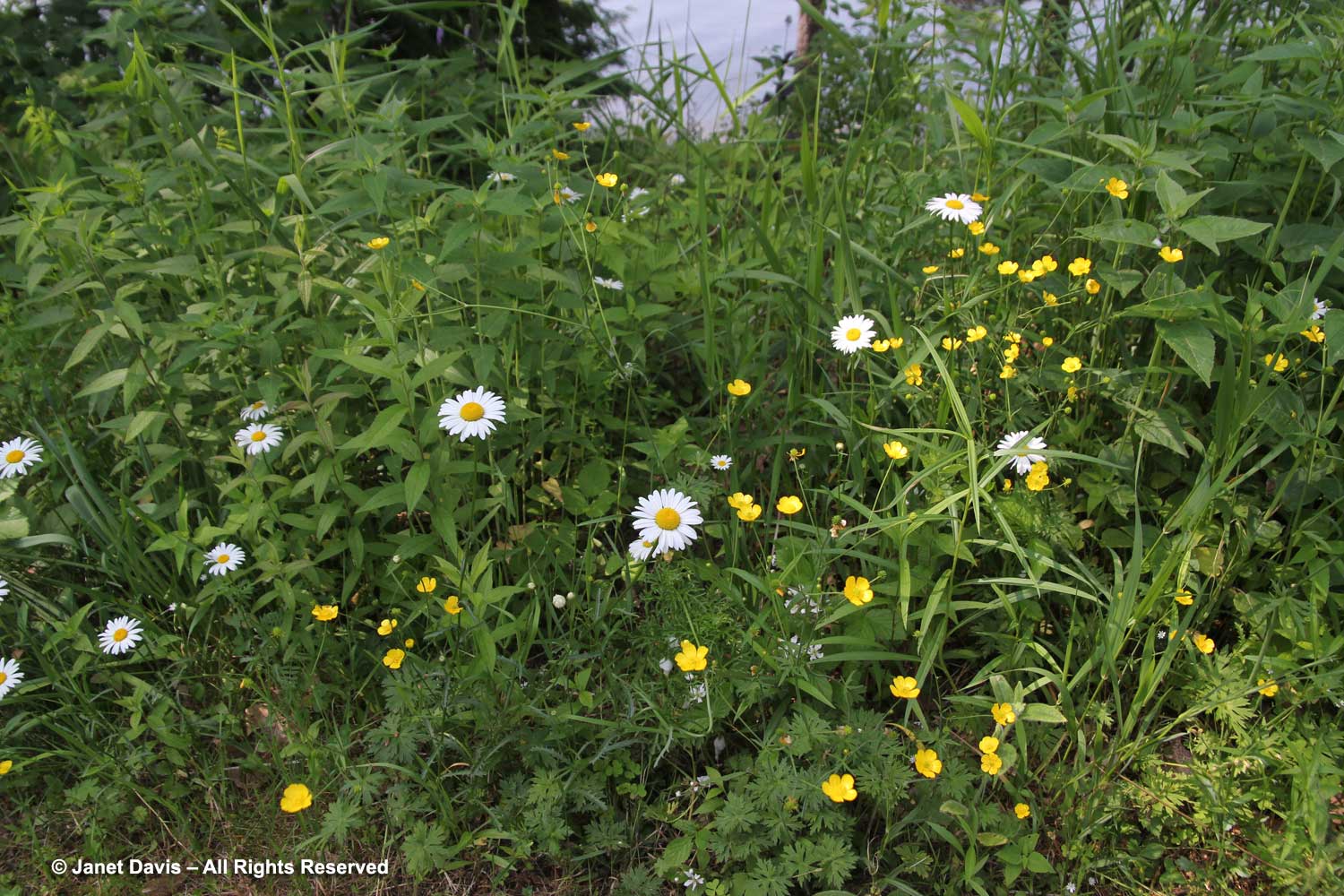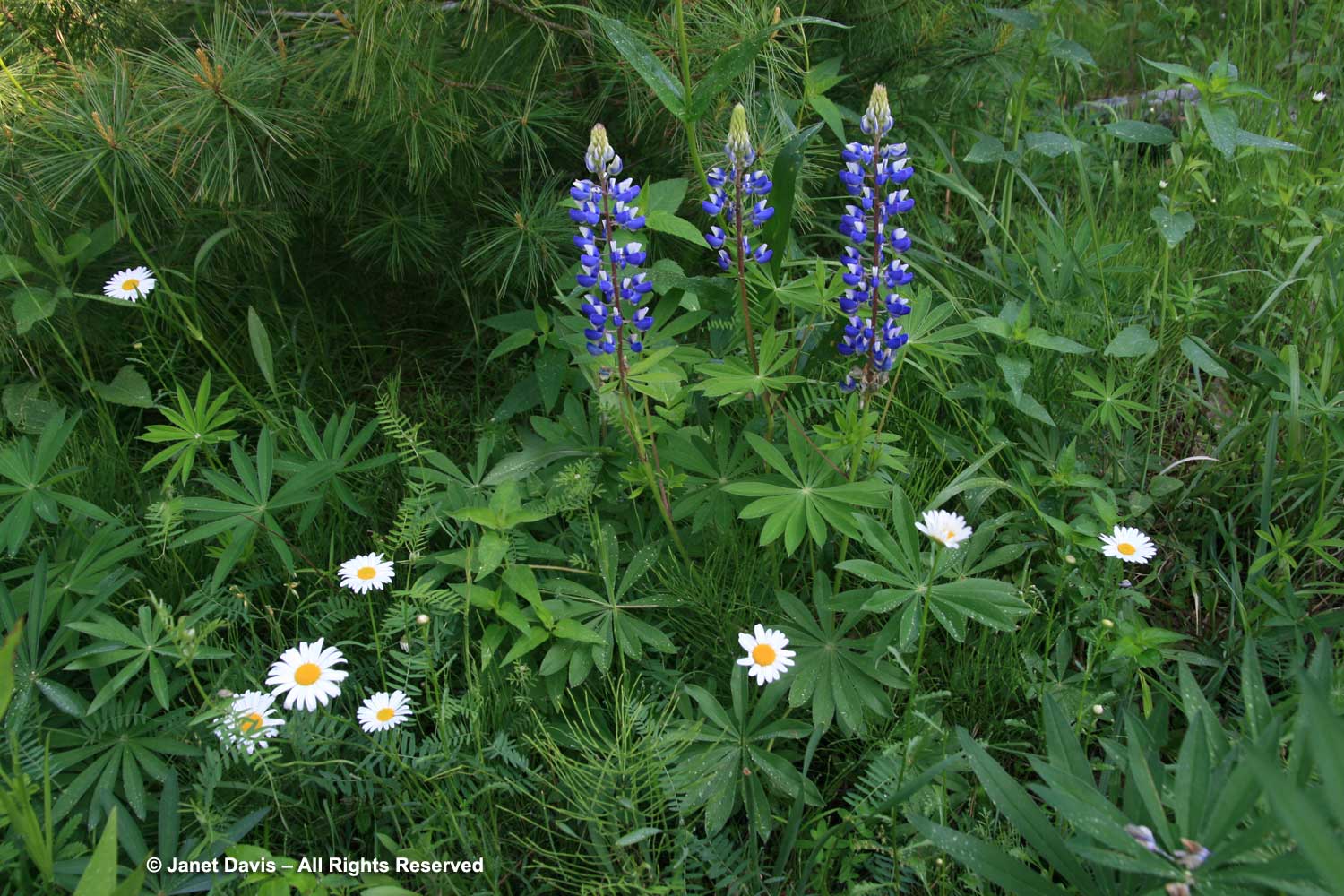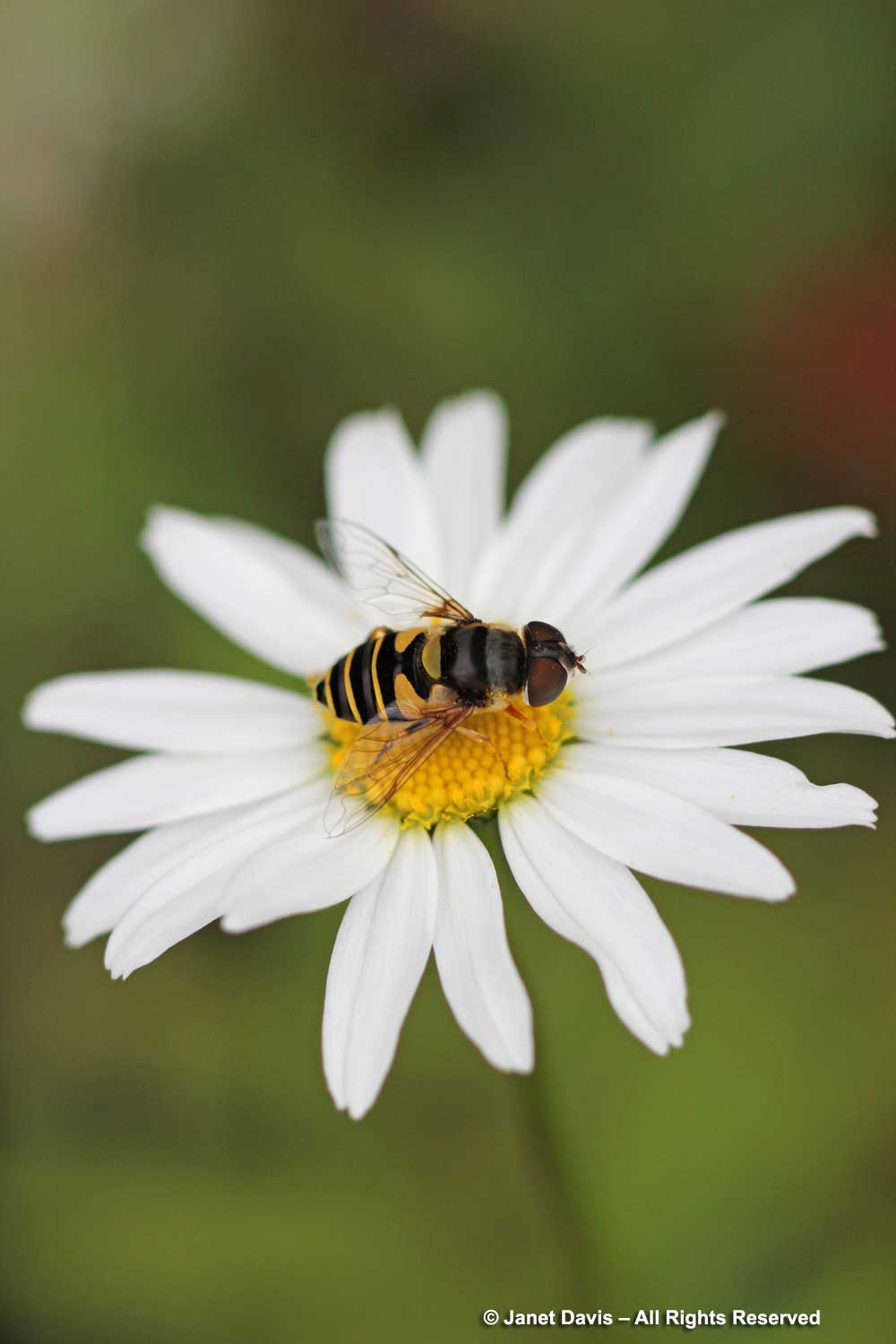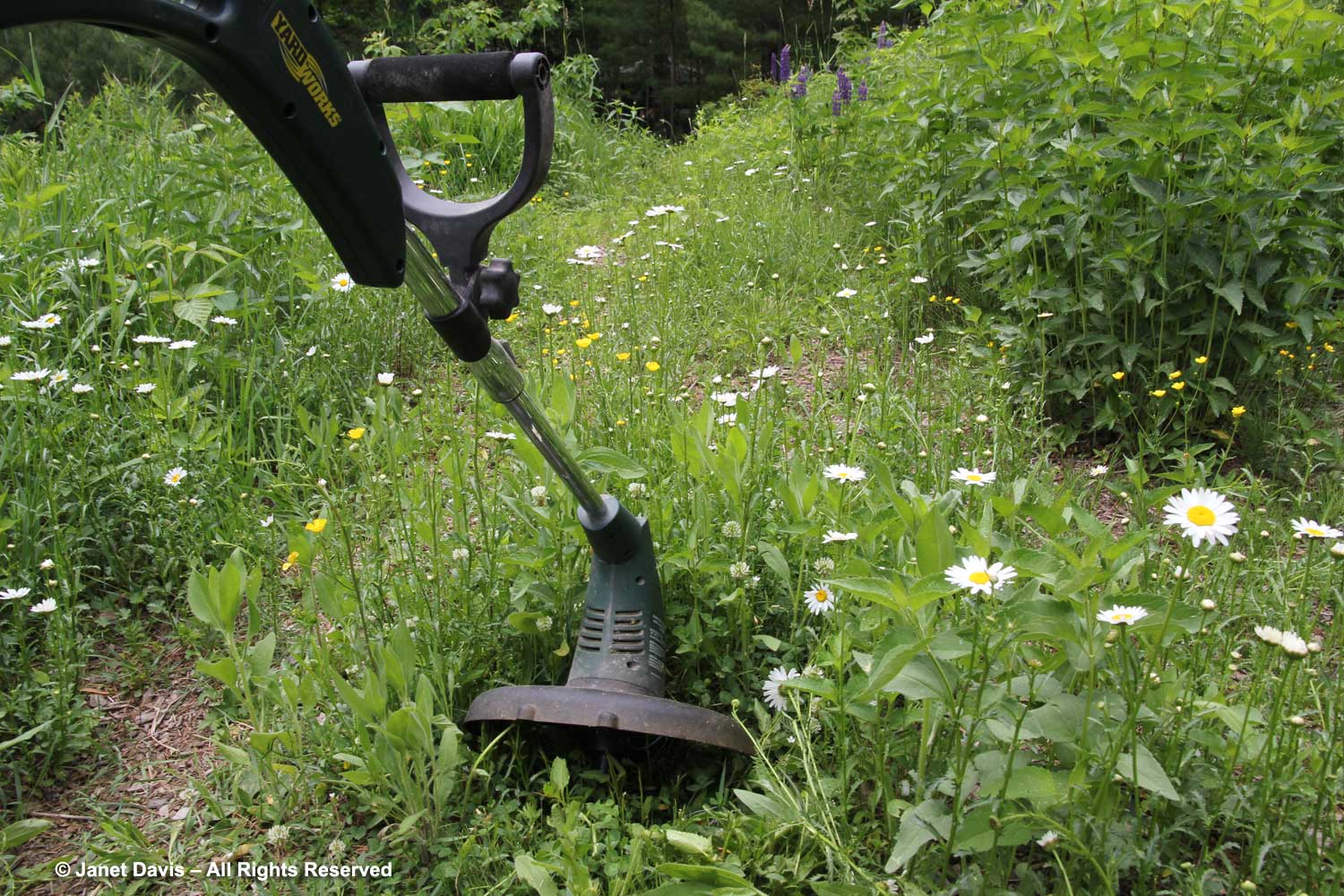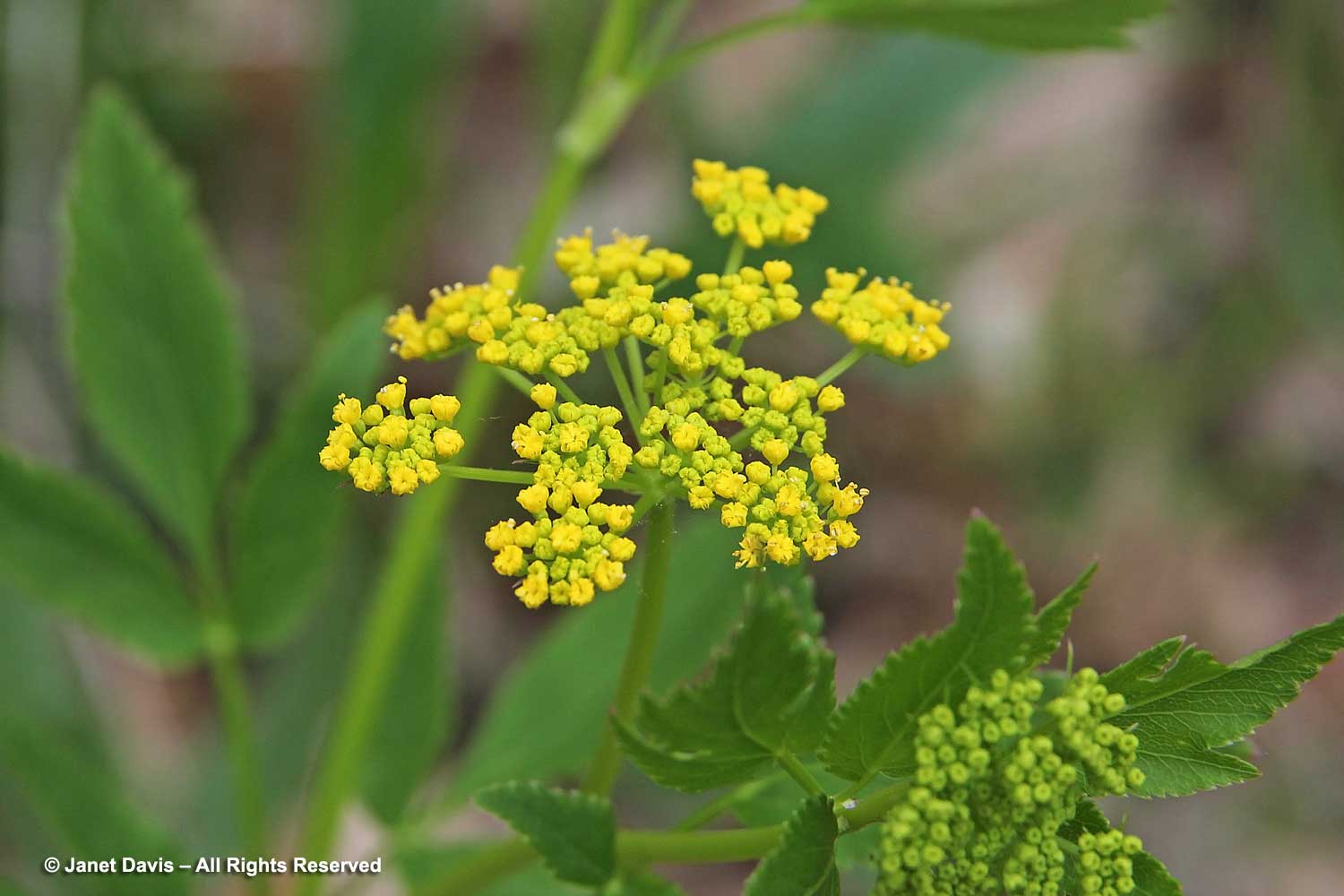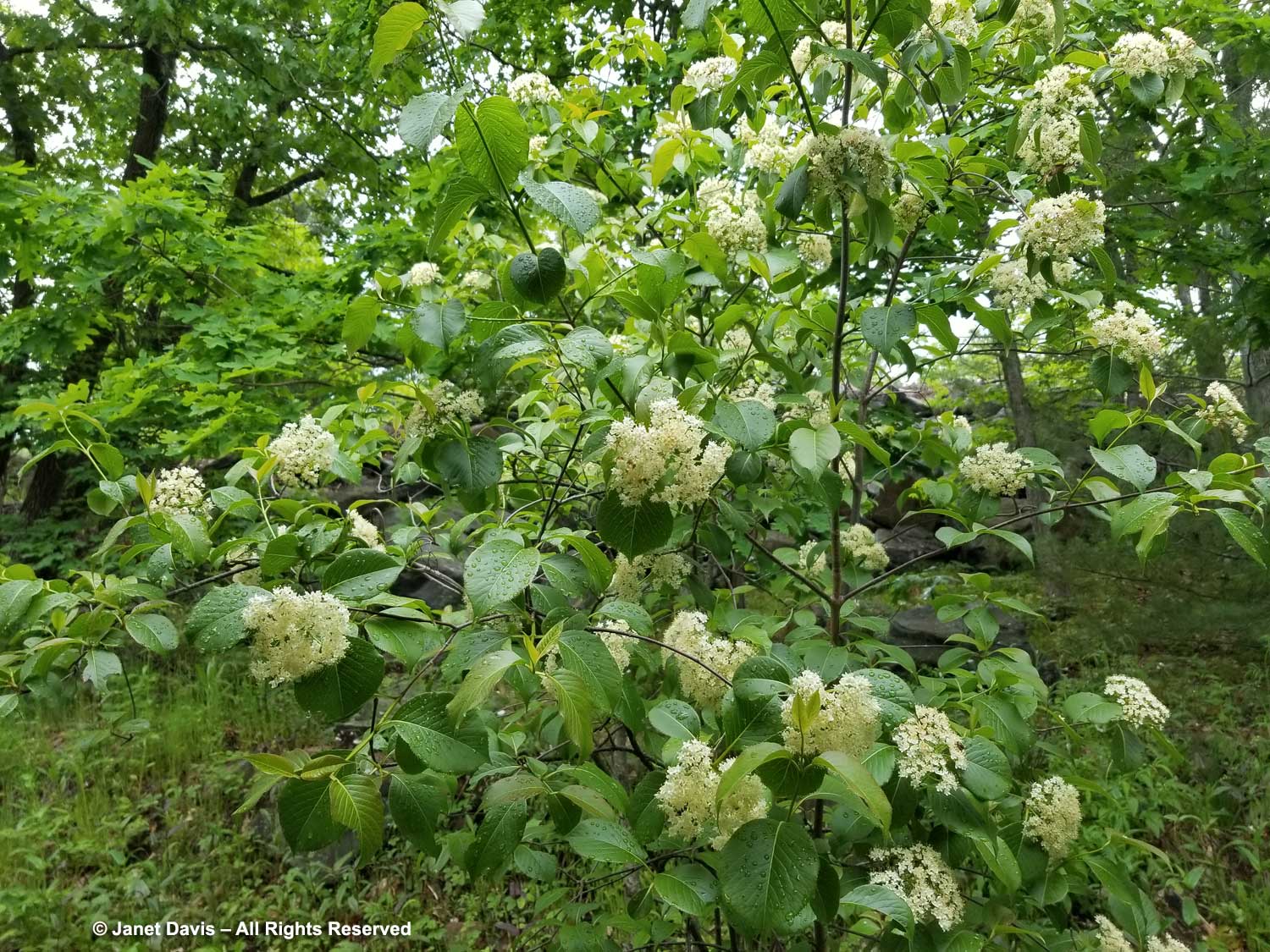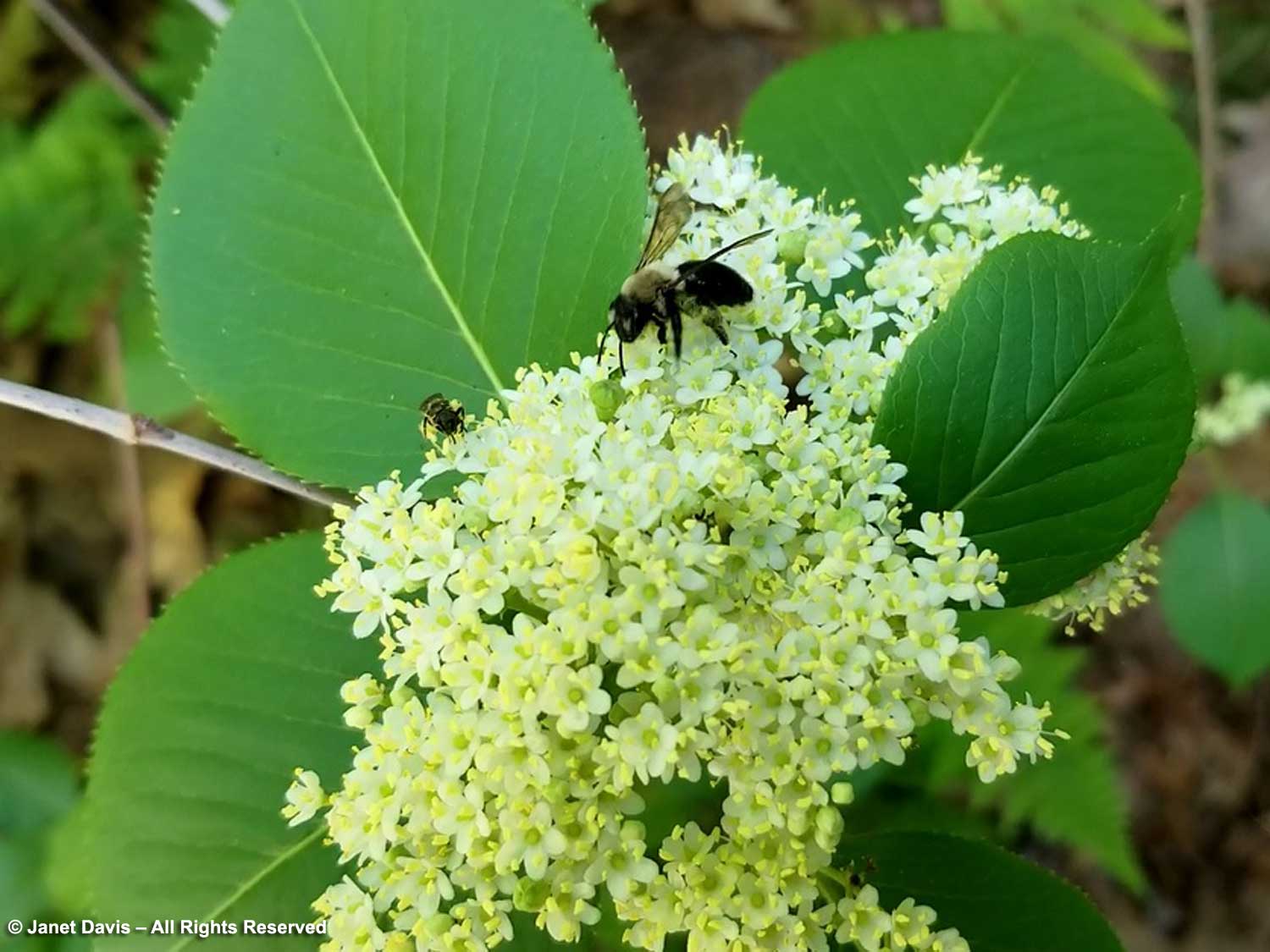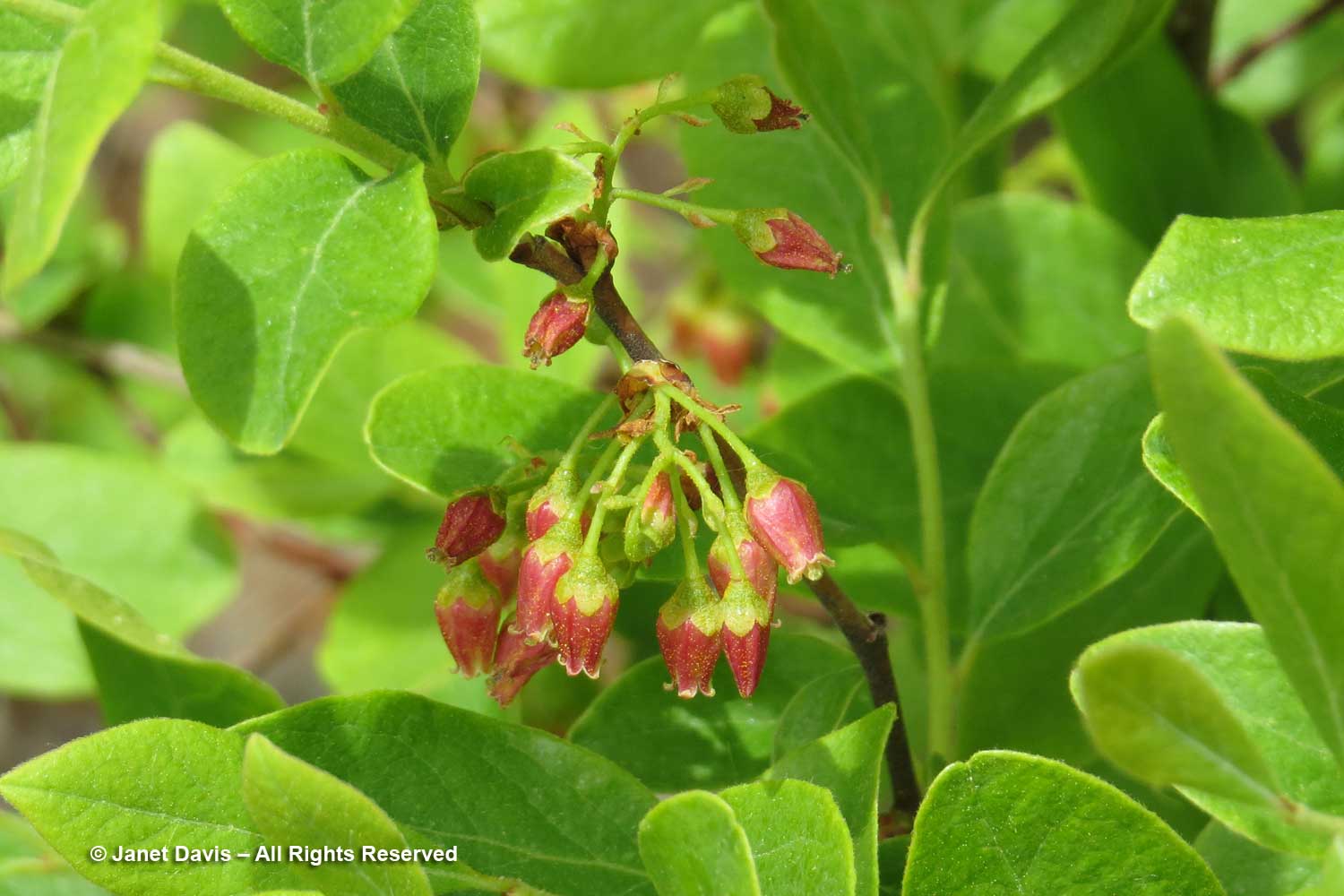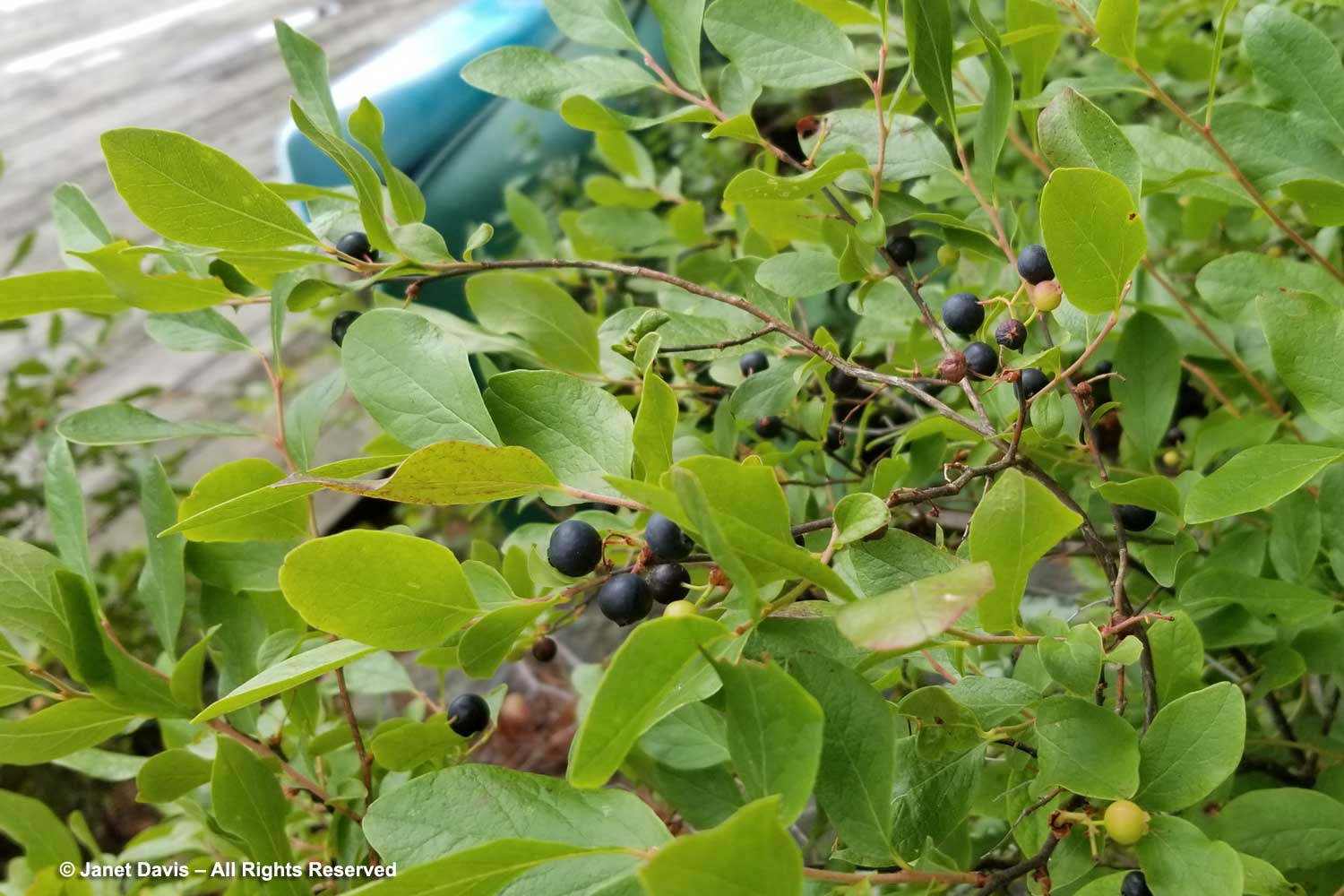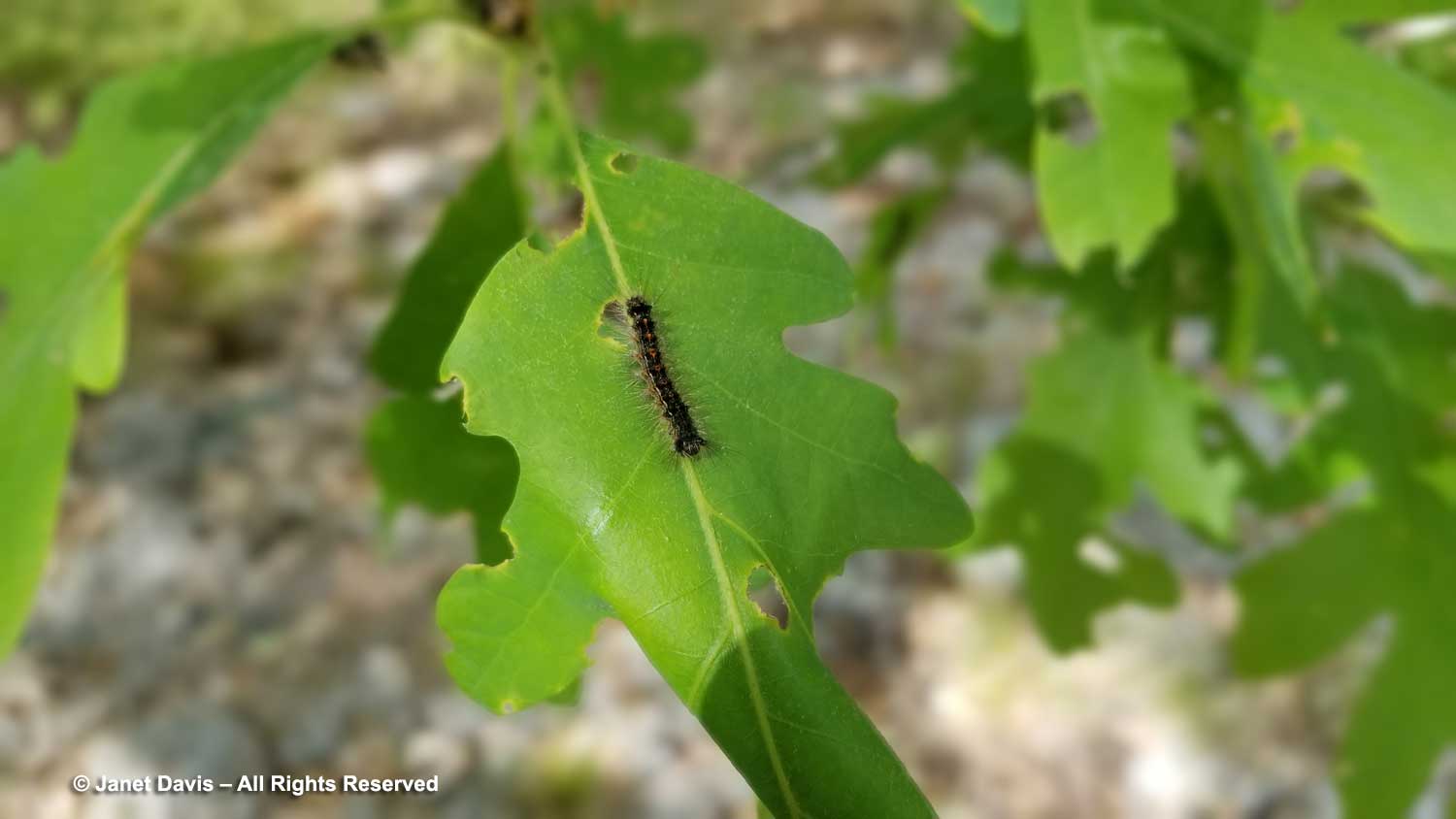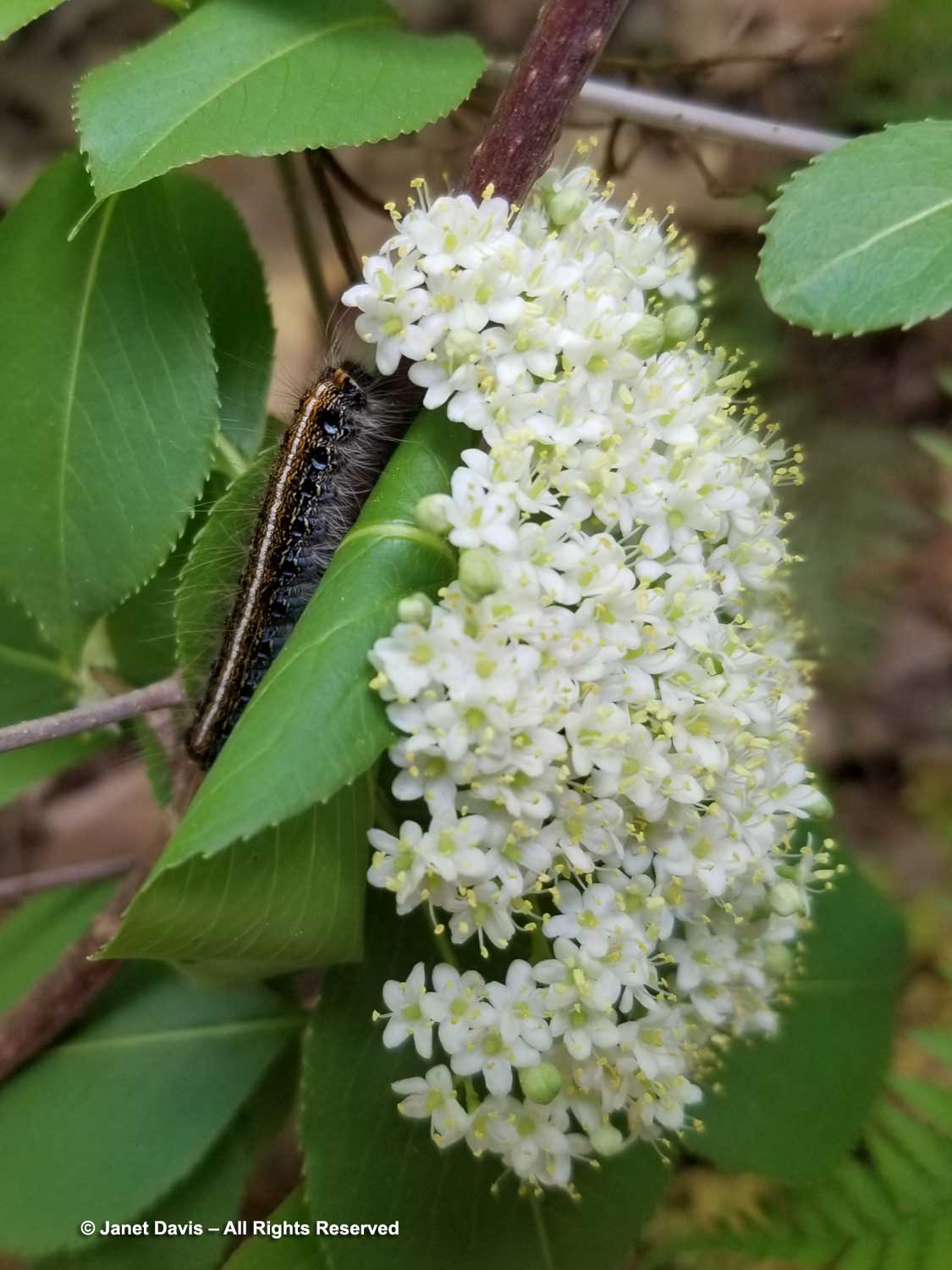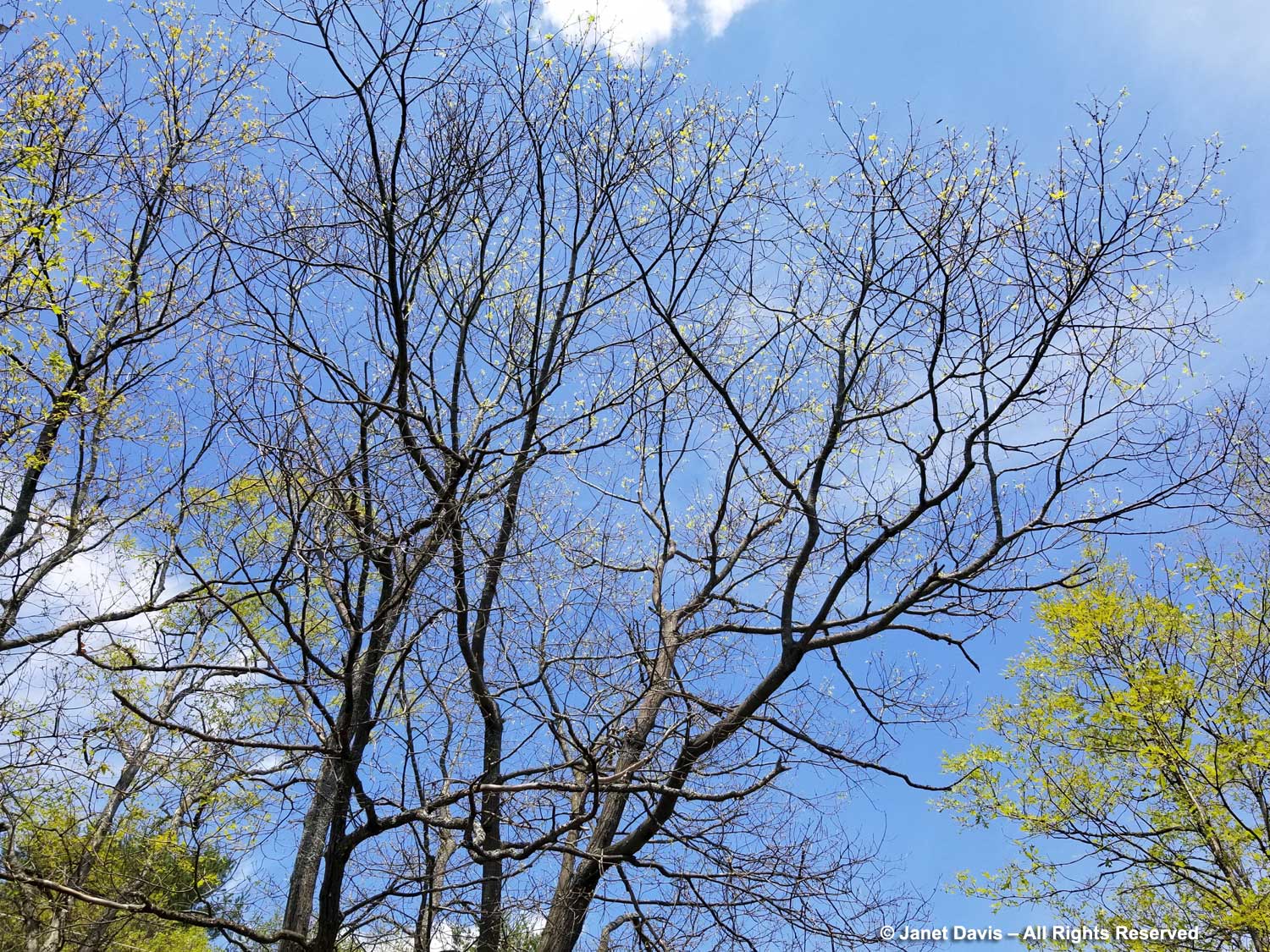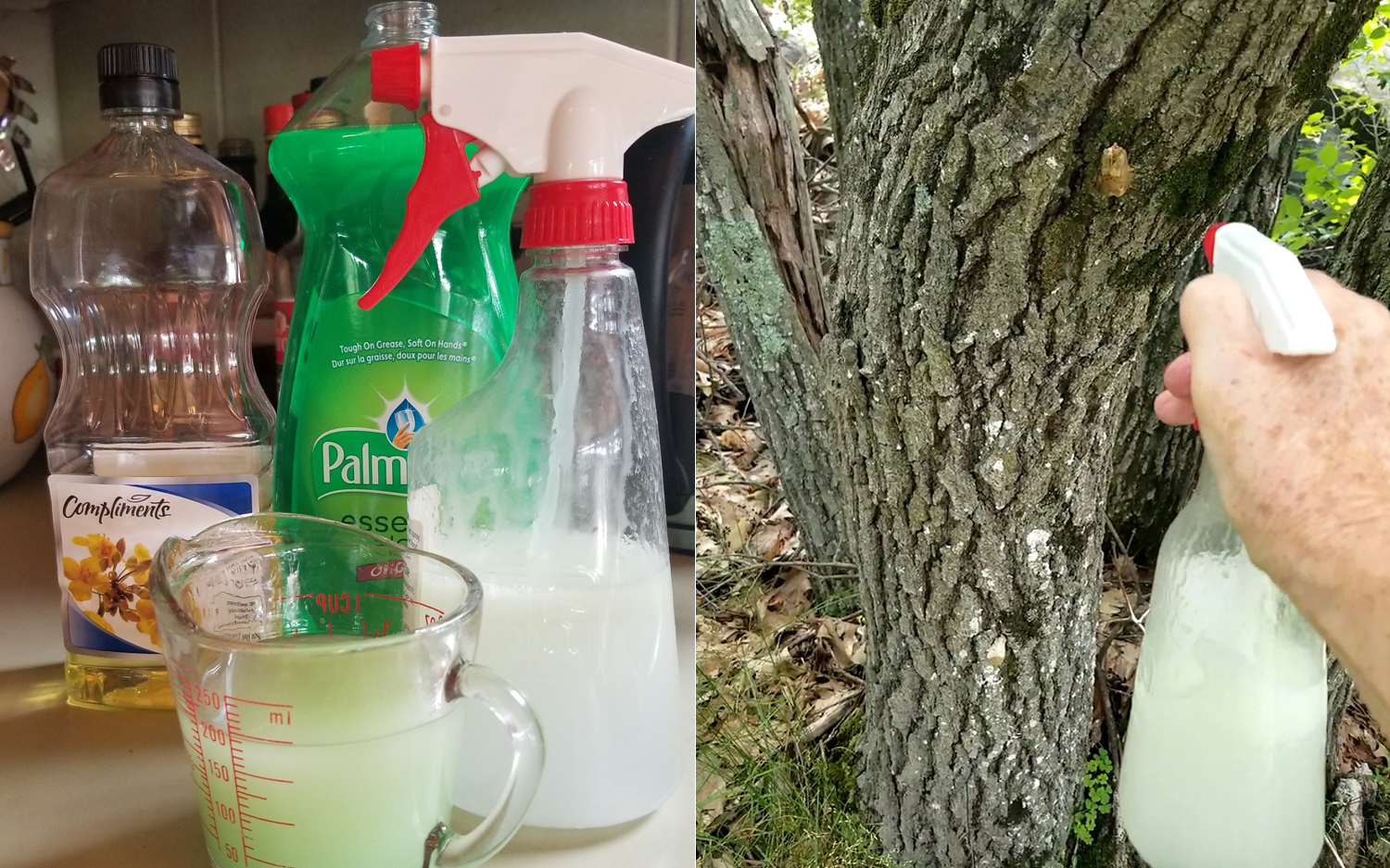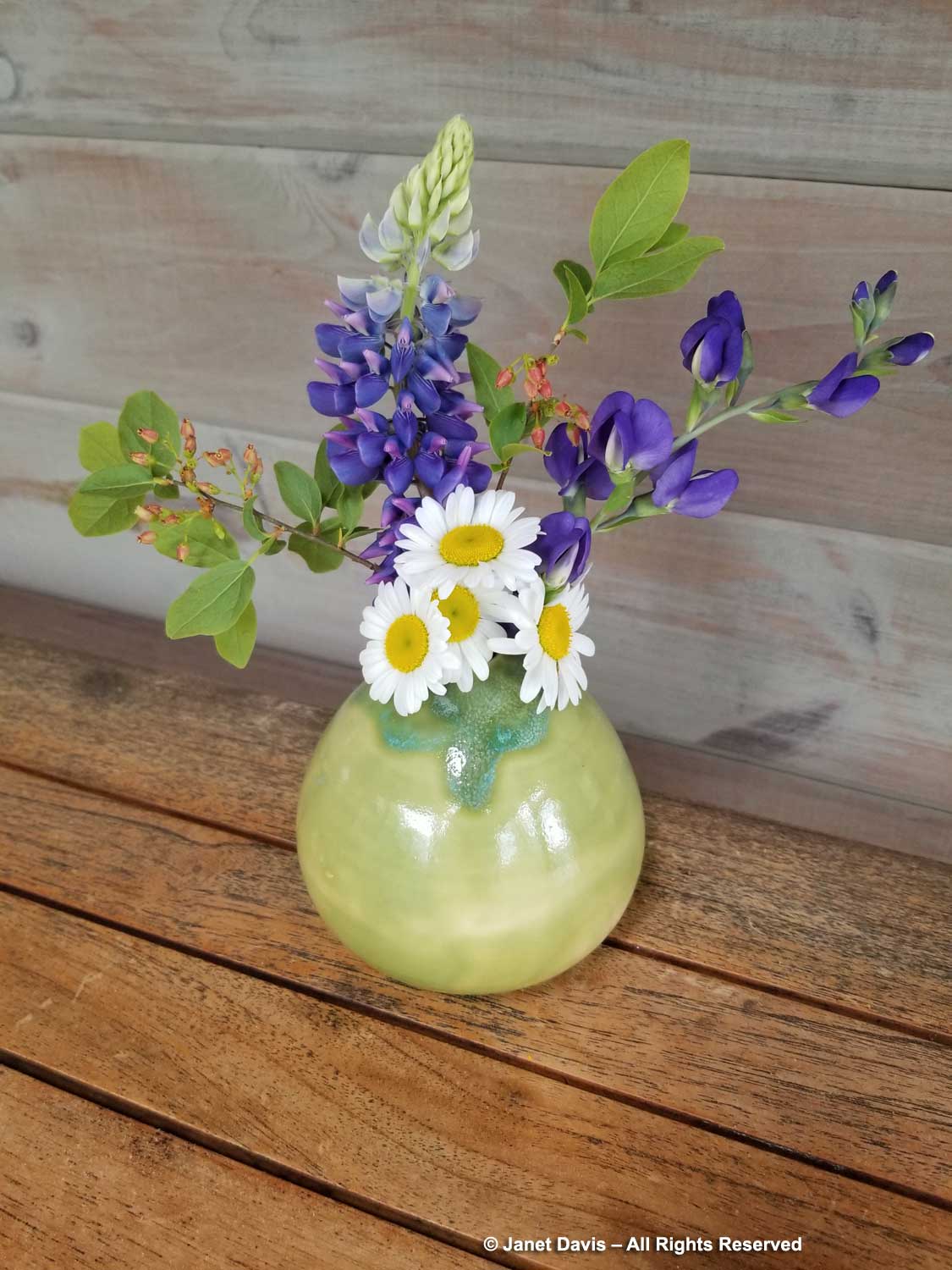Having visited and often written about Dutch designer Piet Oudolf’s garden on the High Line in many seasons – May, June, mid-summer and autumn; having blogged about his fabulous Lurie Garden in Chicago; but mostly having photographed and written about the seasons passing in the Oudolf-designed entry border at Toronto Botanical Garden, a few miles from my home, I was beyond excited to finally visit Oudolf Field at Hauser & Wirth Gallery at Dunslade Farm in Somerset, near Bruton. First we walked through the gallery, one of 21 galleries worldwide founded originally in Zurich in 1992 by Iwan and Manuela Wirth along with Manuela’s mother, art patron and collector Ursula Hauser. The Somerset gallery resulted from the renovation of a collection of old farm buildings and is located near the Wirths’ home. Like all their galleries, it features high-profile modern artists such as Americans Richard Jackson, below…
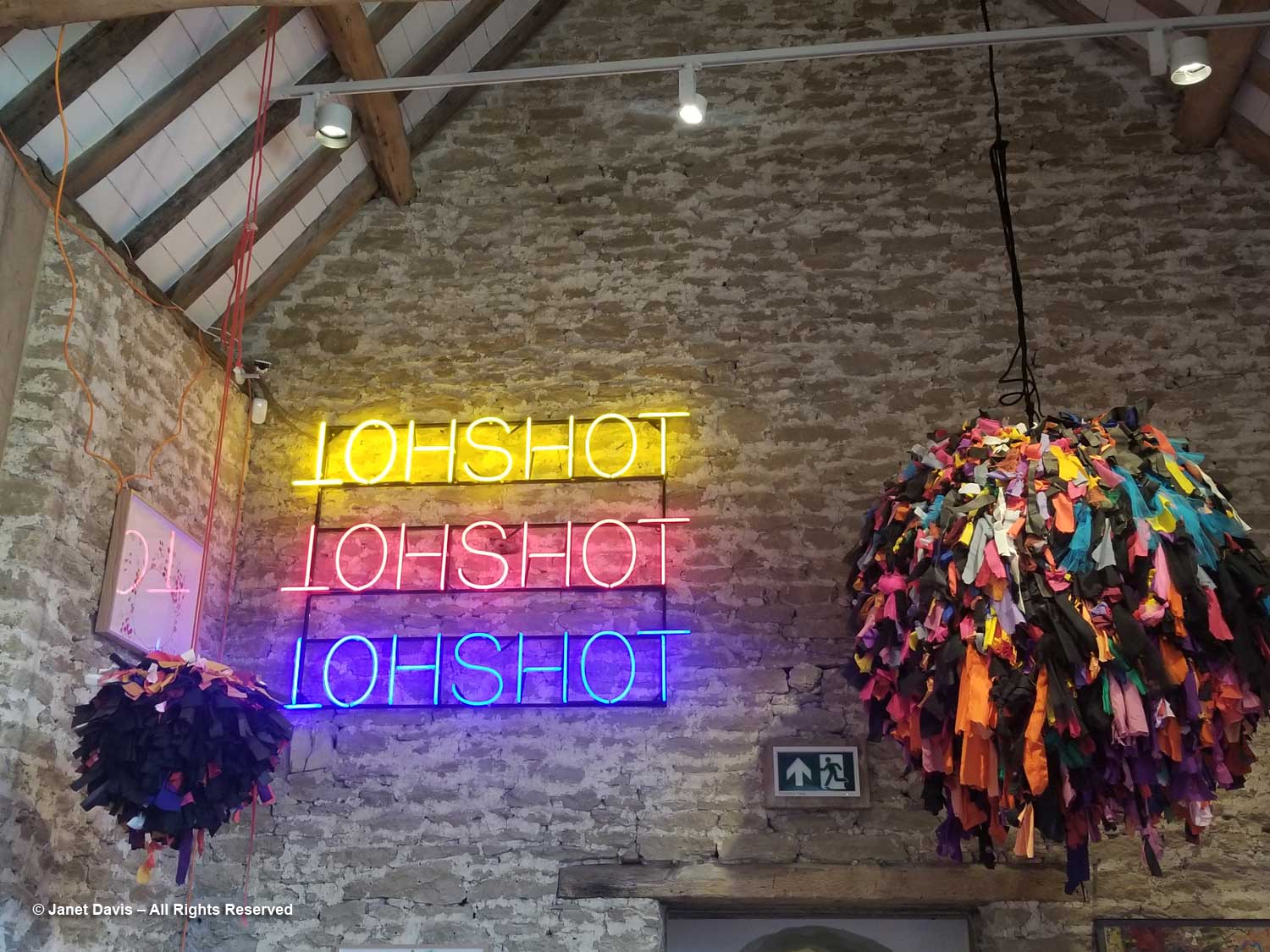
… and Paul McCarthy, whose silicone White Snow Dwarves, below, from the Ursula Hauser collection was displayed near the exit to the garden.
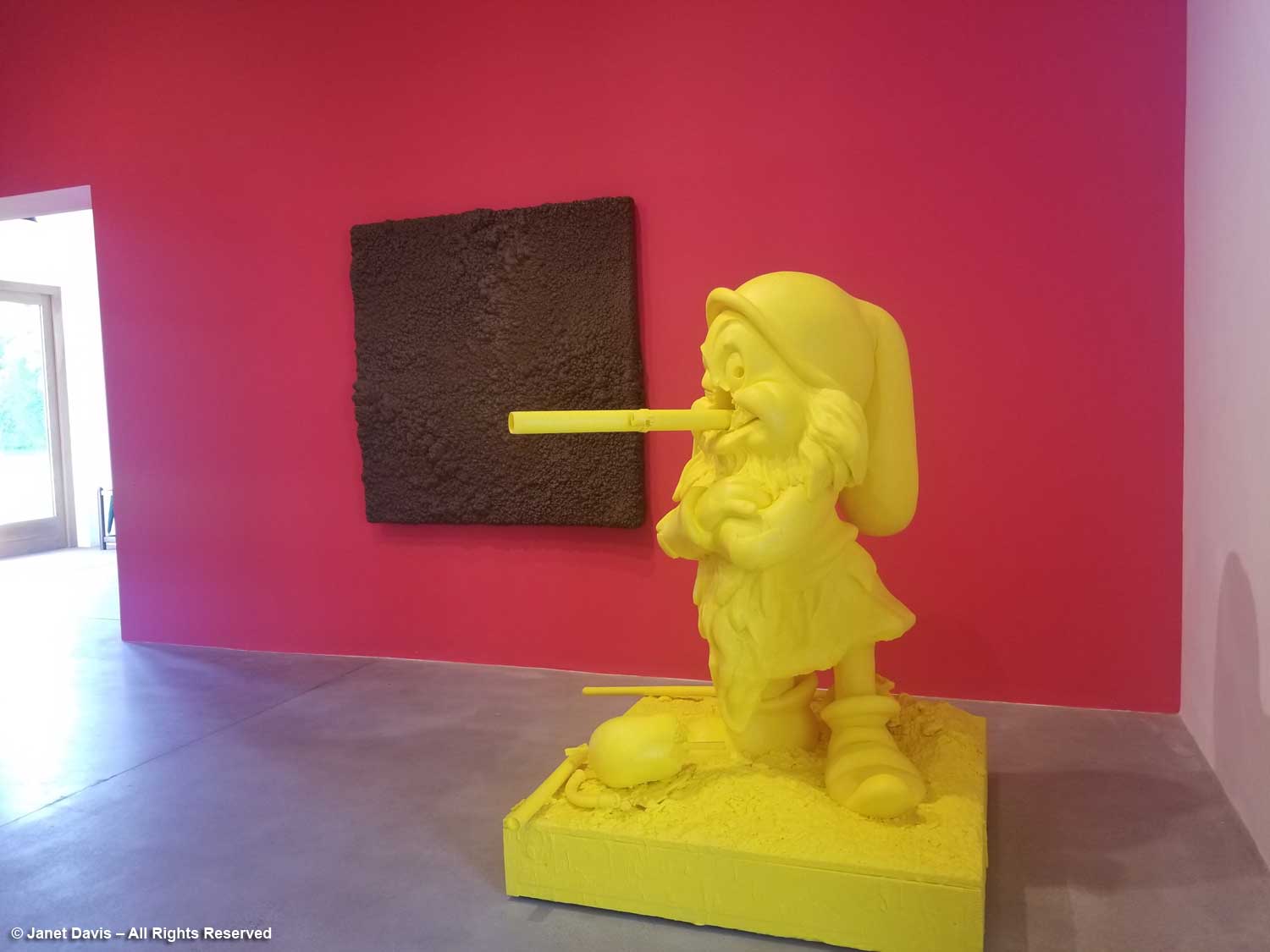
Leaving the gallery which was designed by Argentine-born architect Luis Laplace, visitors pass through a cloister garden designed by Piet Oudolf and featuring the sculpture Lemur Heads by Franz West. Unlike the meadow beyond, this space contains woodlanders and shade-tolerant species.
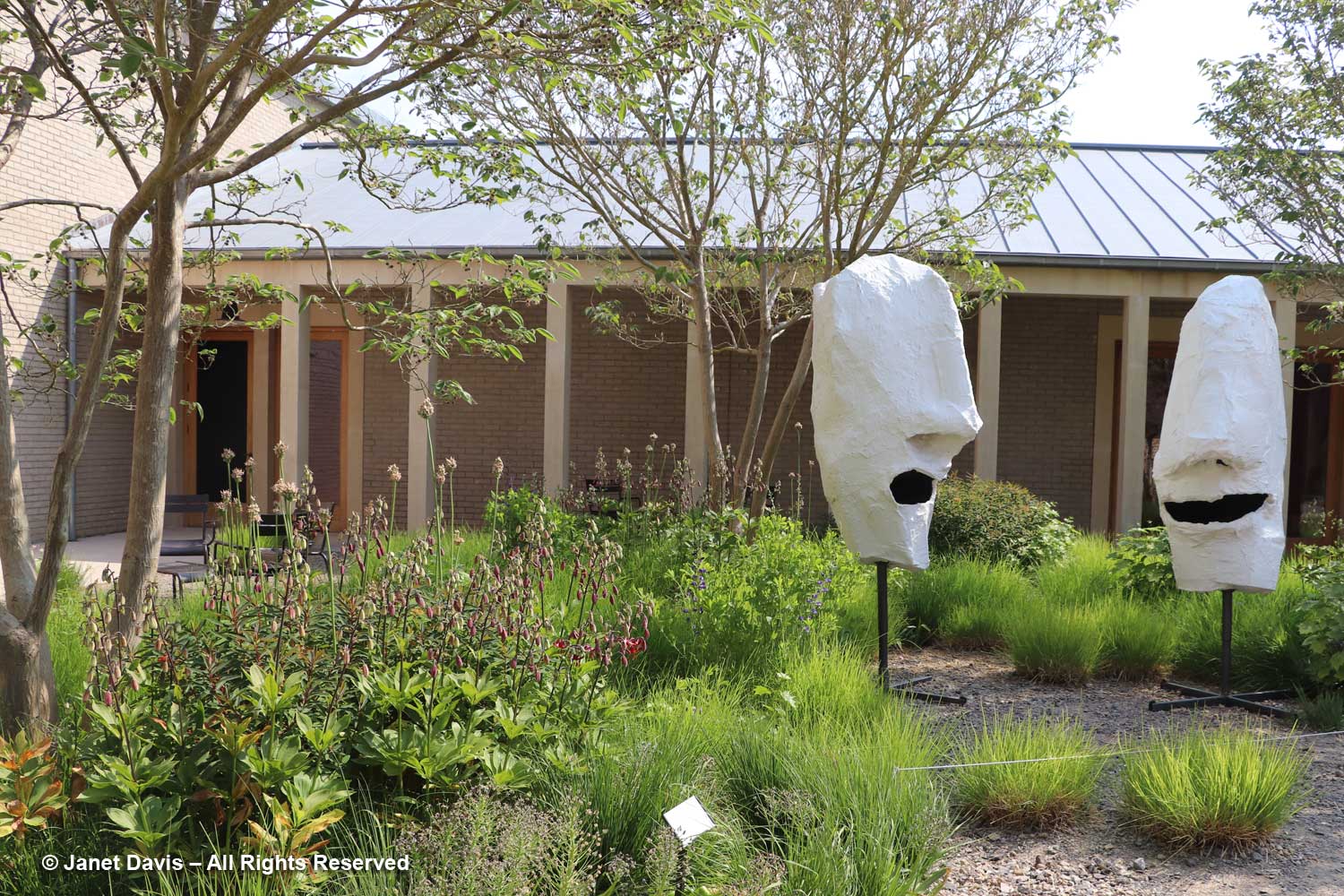
The small trees in this garden are paper mulberry (Broussonetia papyrifera) with their fuzzy, globular female flowers.
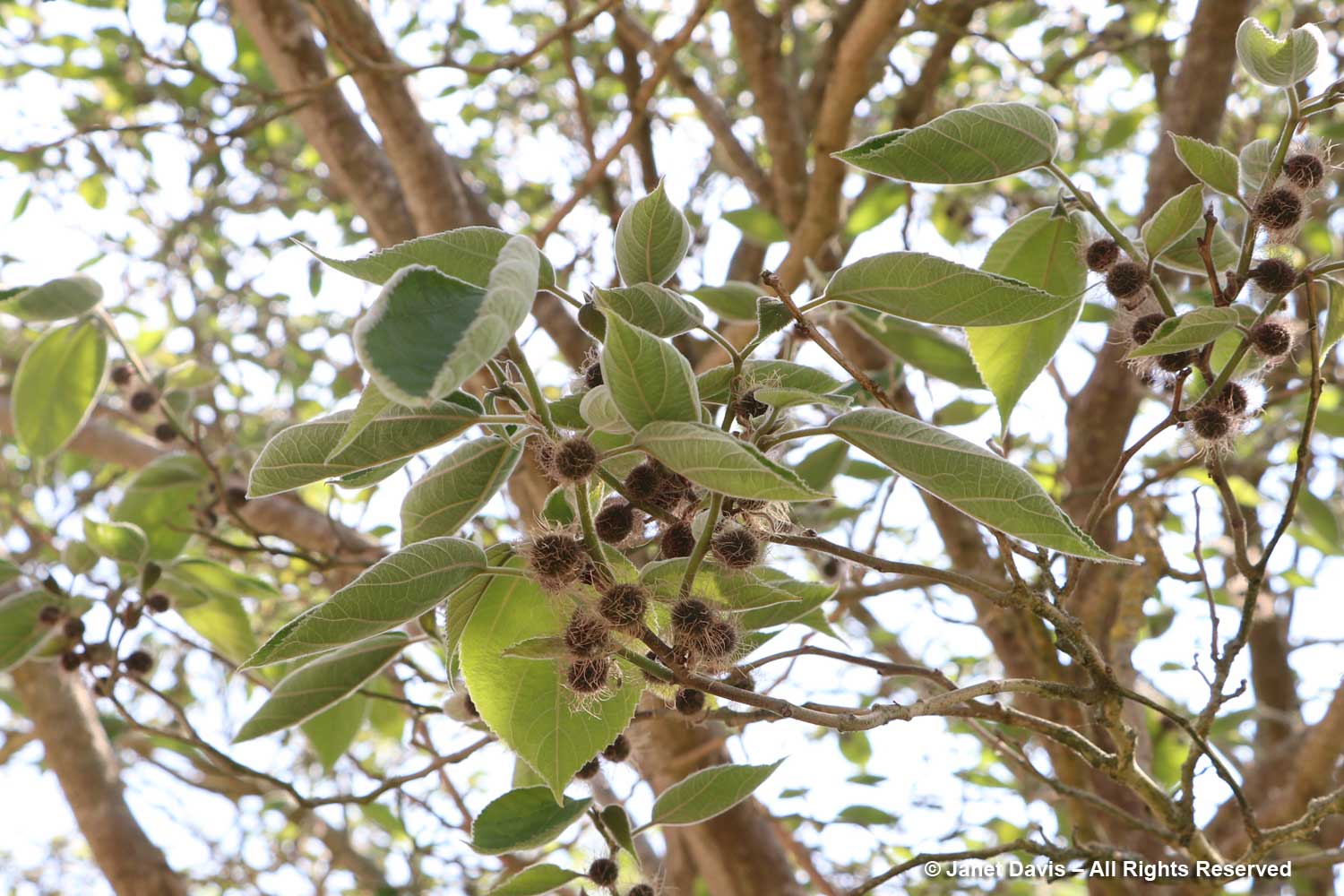
Martagon lilies were just beginning to show colour.
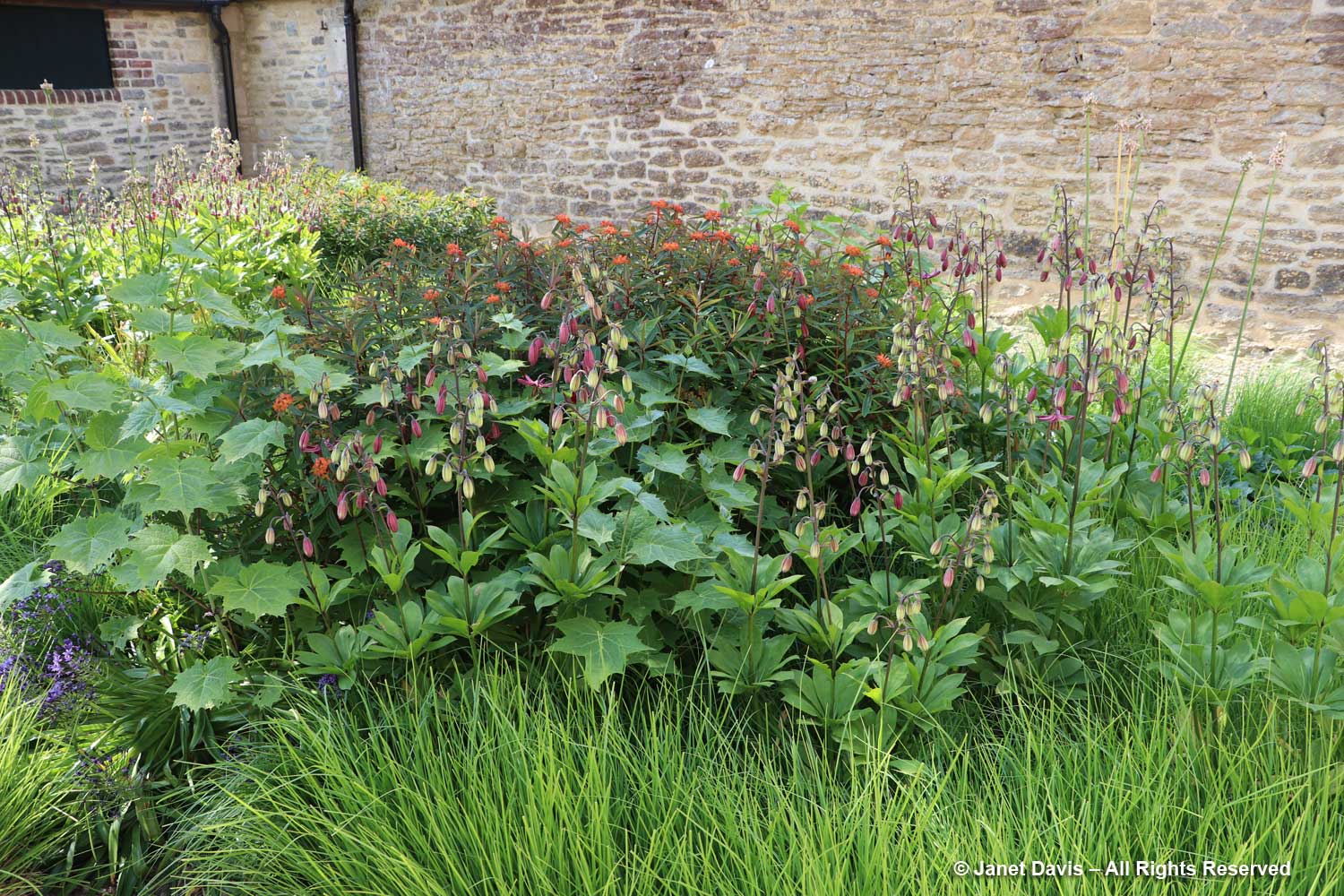
We began with a talk from head gardener Mark Dumbelton, who spoke about the beginnings of the garden and expanded on some of its challenges, mainly around the soil. Indeed, when we visited England was on its way to enduring the hottest June on record since 1884, according to the Royal Meteorological Society, and watering was being done by hand. Behind Mark, I noticed the white inflorescences of….
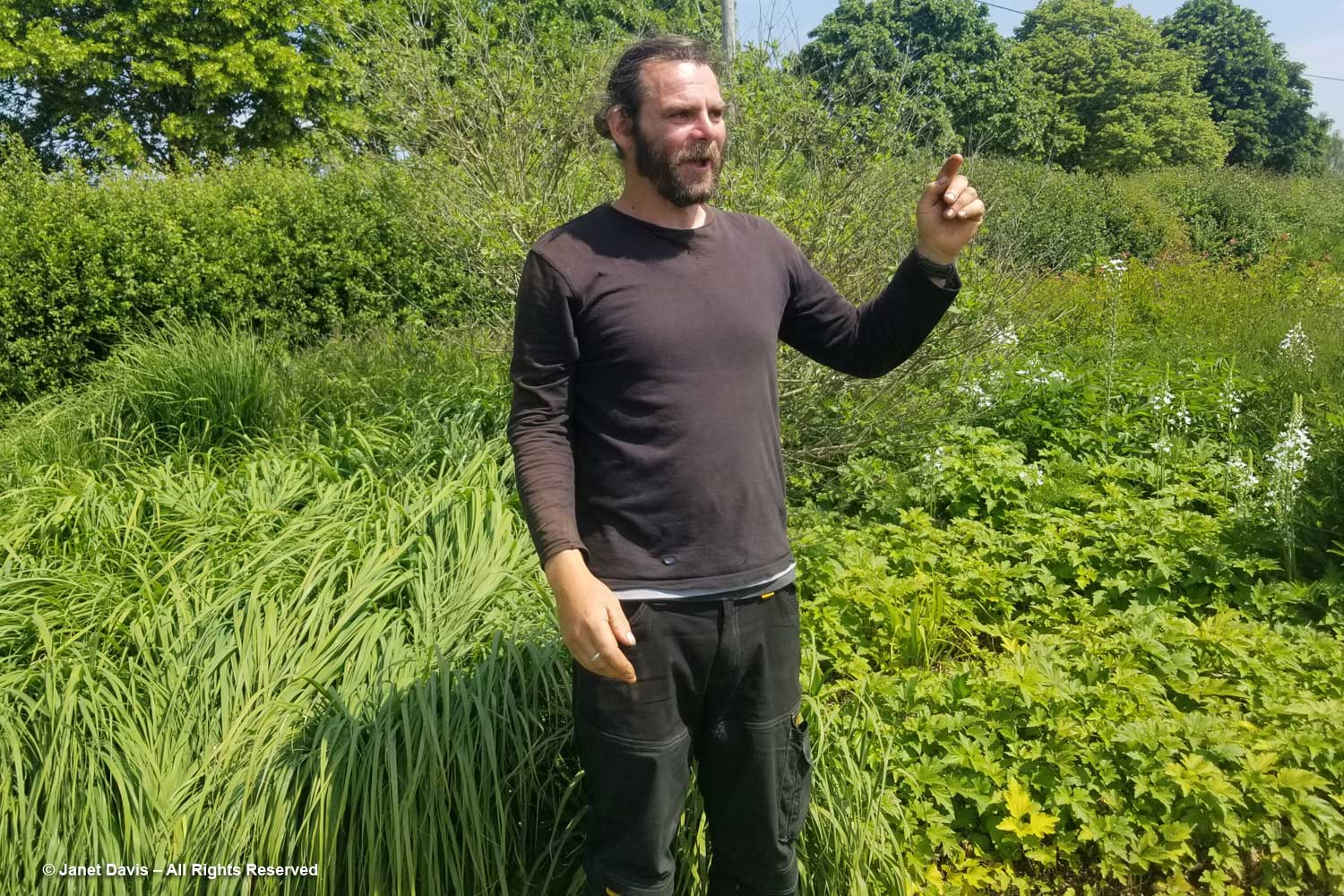
Ornithogalum ponticum ‘Sochi’, a Russian native bulb that contrasts well with emerging grasses and makes a good cut flower.
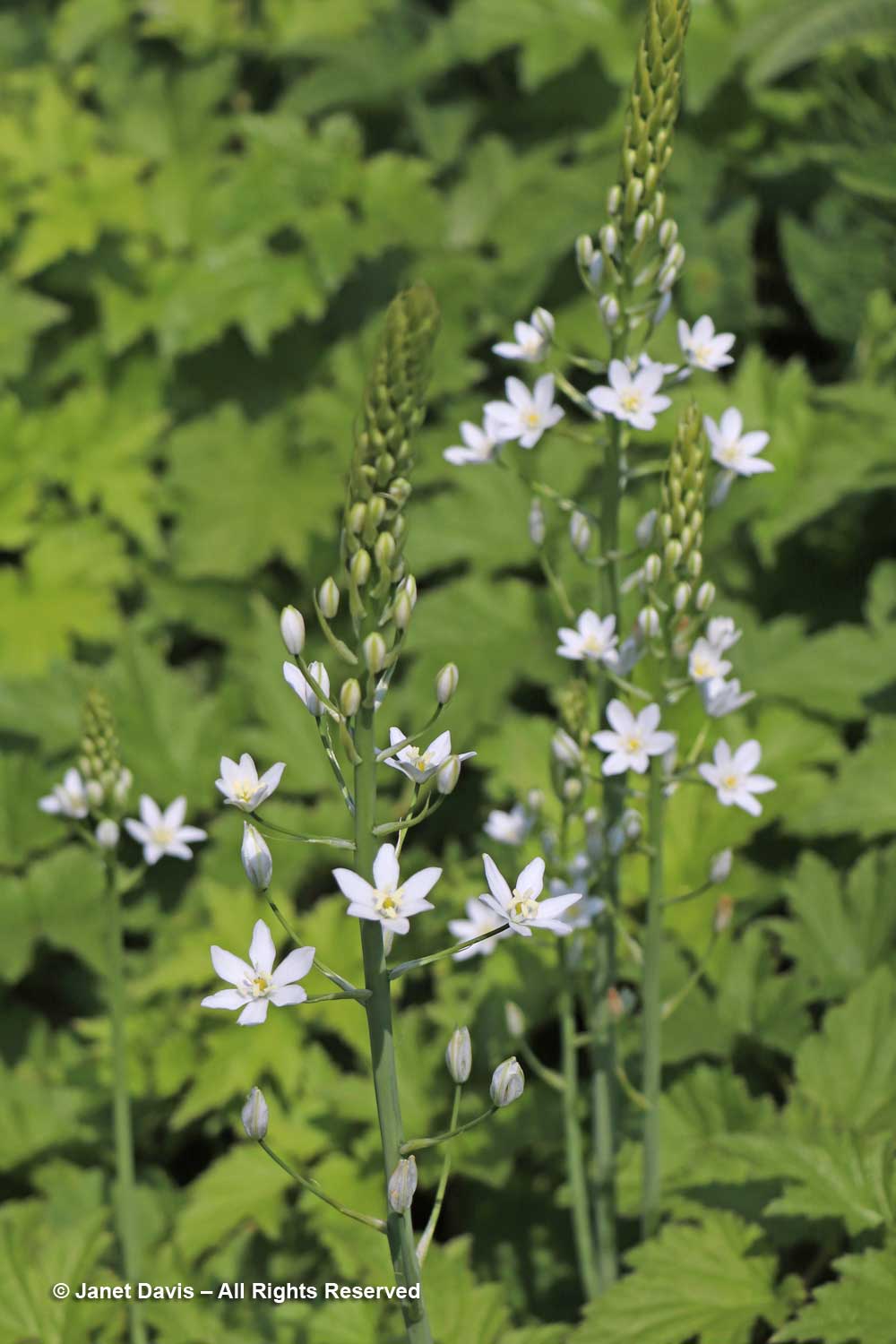
Near the gallery is a naturalistic pond surrounded by pink flowering rush (Butomnus umbellatus).
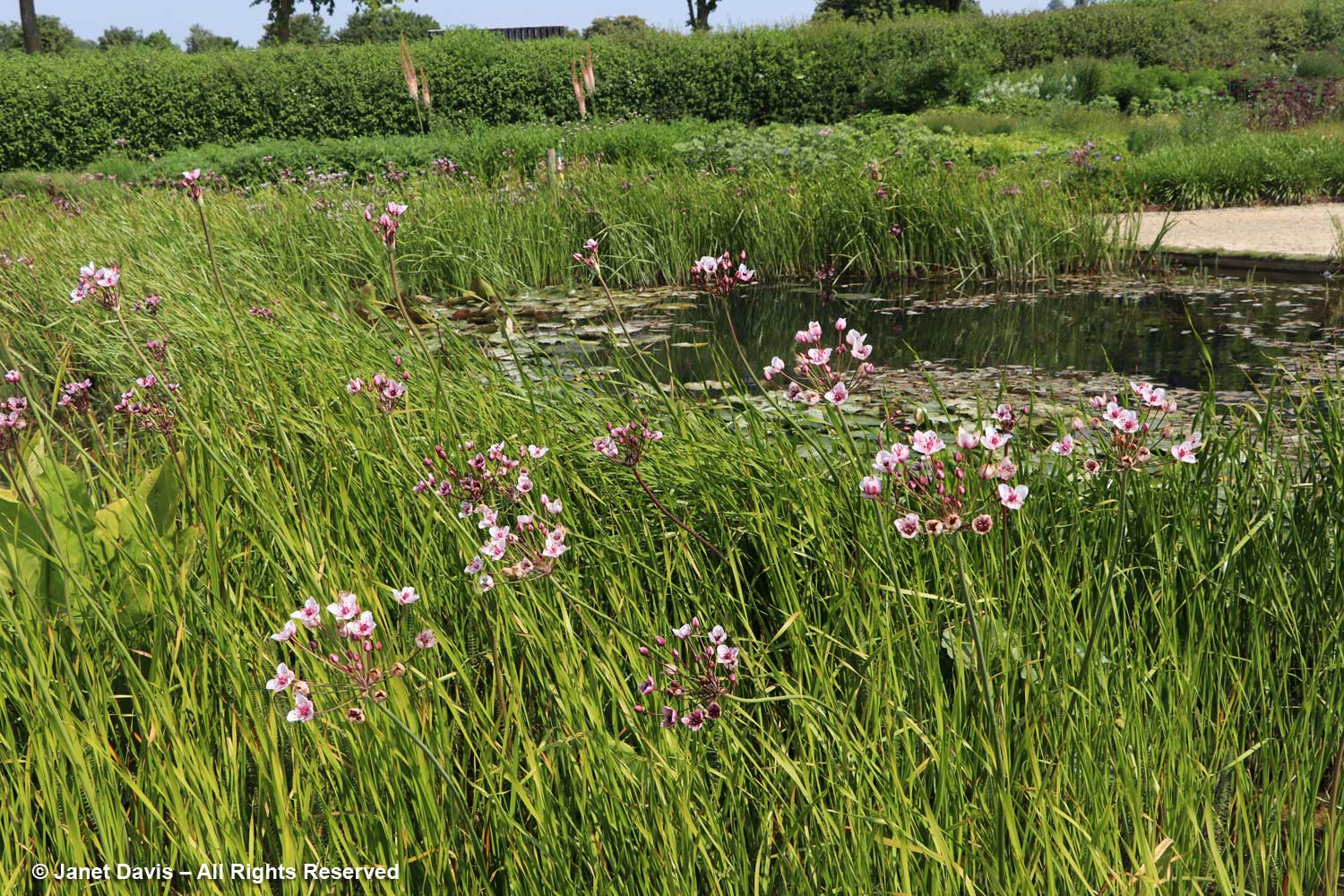
You can see the pond at the left, below, on Piet’s colourful 2012 plan for the wildflower meadow in the Hauser & Wirth catalogue. Spread out over 1.5 acres are seventeen curved, informal planting beds separated by a central gravel path as well as lawn paths between the beds and surrounded by an existing hedge, beyond which Piet planted trees.
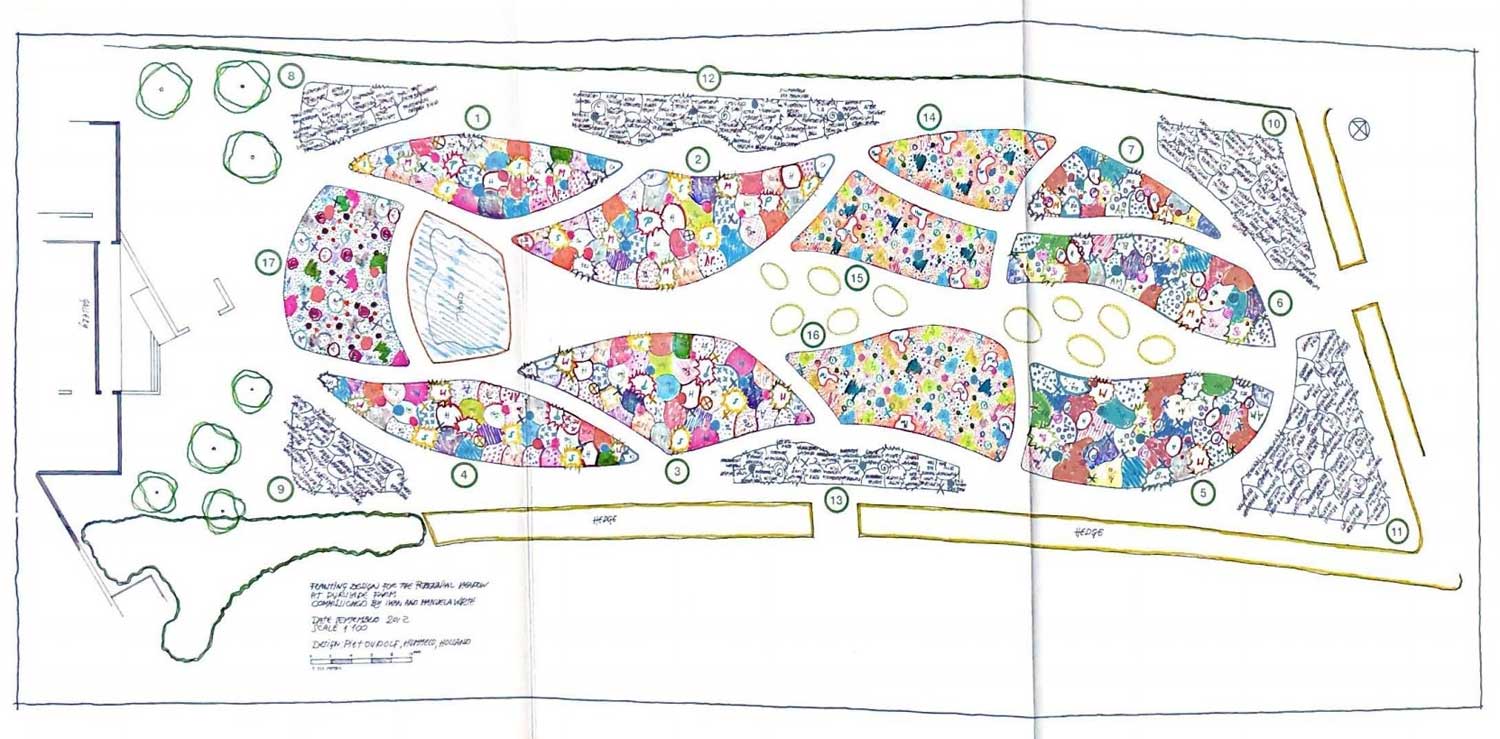
He explained his rationale for Oudolf Field in the video below.
With Mark’s talk finished, we were set loose in the meadow. I viewed it through spires of peach foxtail lily (Eremurus), a lovely perennial for early summer whose….
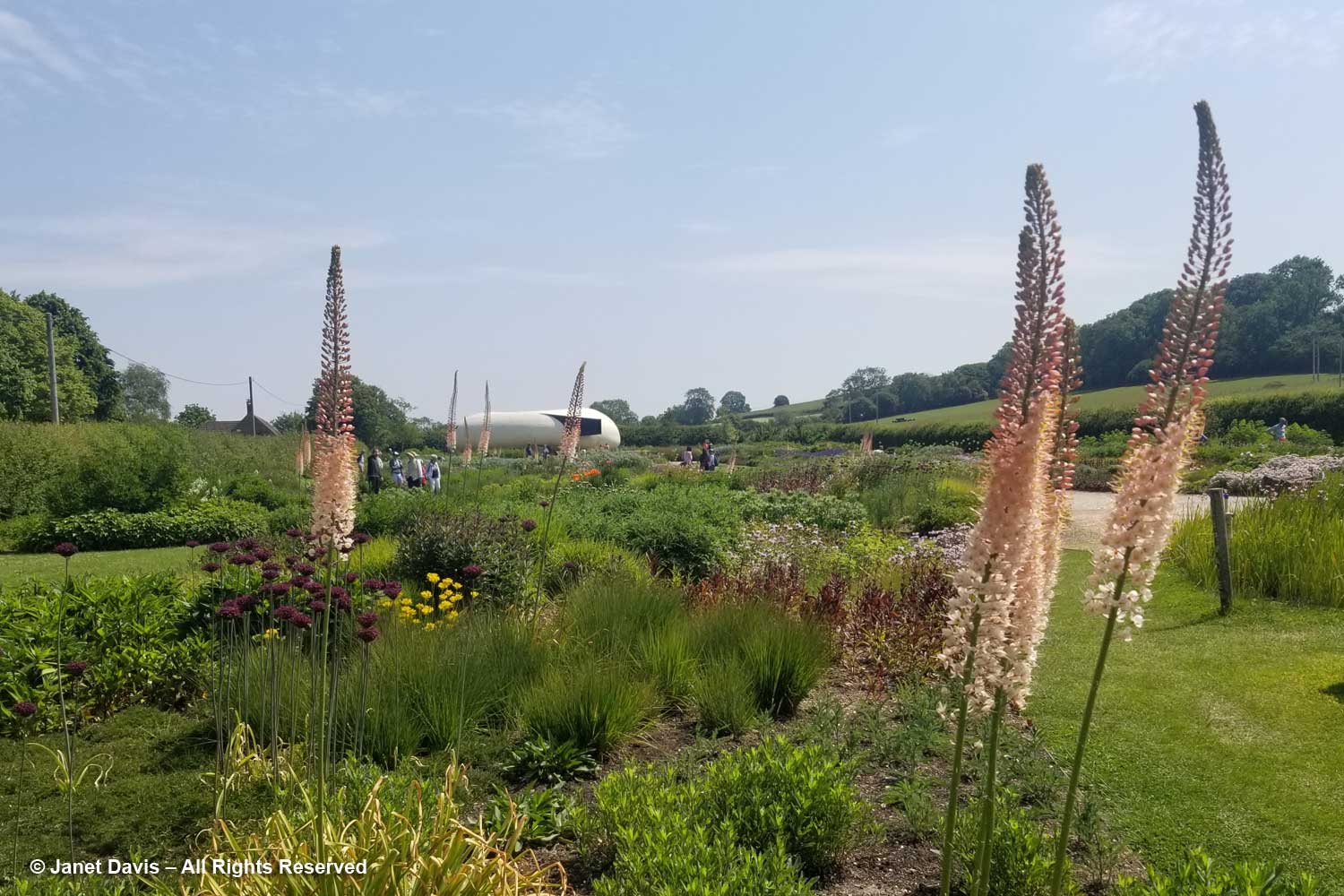
….. tall inflorescences never fail to attract the attention of visitors – and bees! This one looks like the Dutch cultivar Eremurus x isabellinus ‘Romance’.
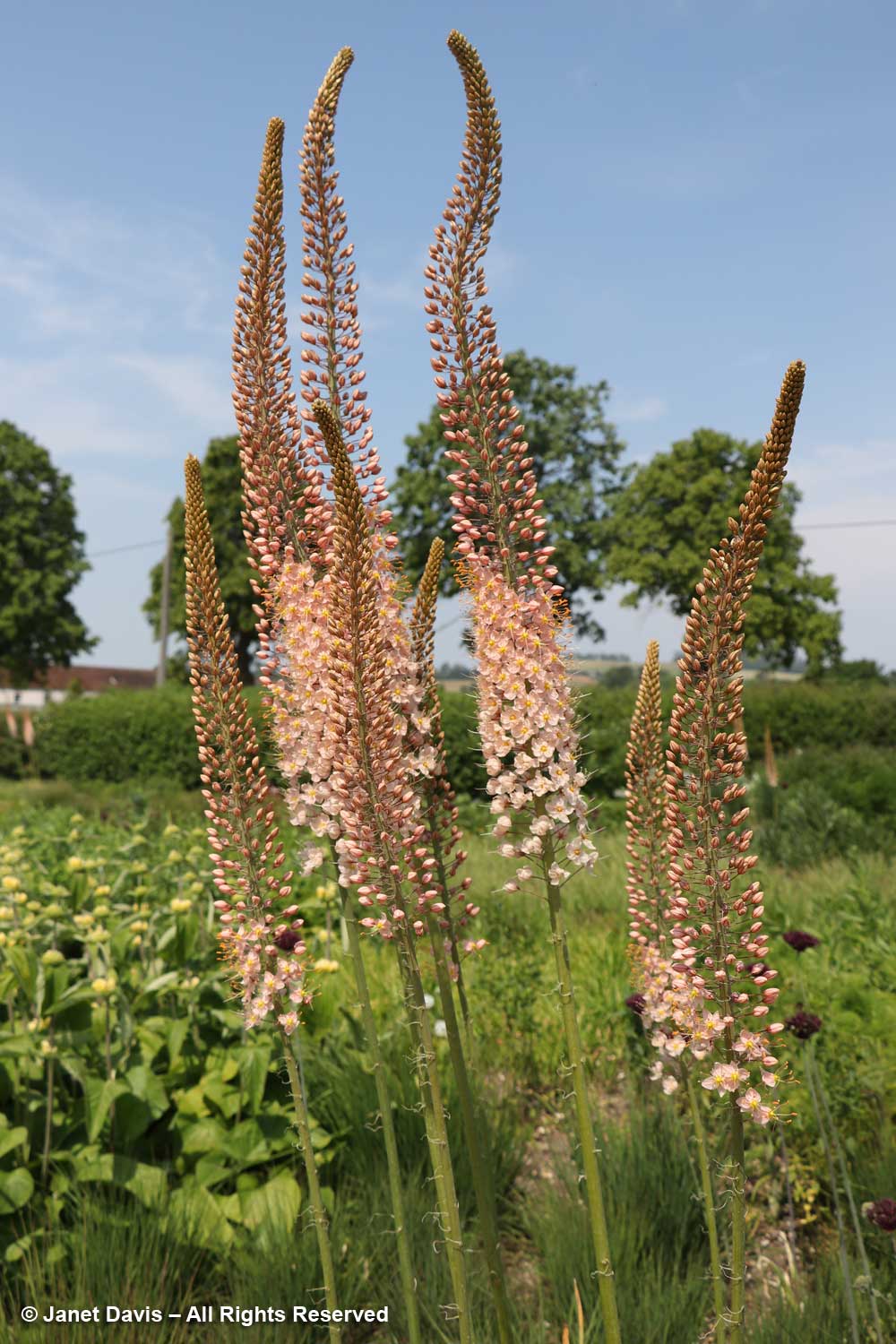
I was intrigued by the ten turf circles in the central path through the meadow. The path lets visitors stroll from one end to the other, but the playful circles relieve the tedium of this long expanse of purposeful gravel.
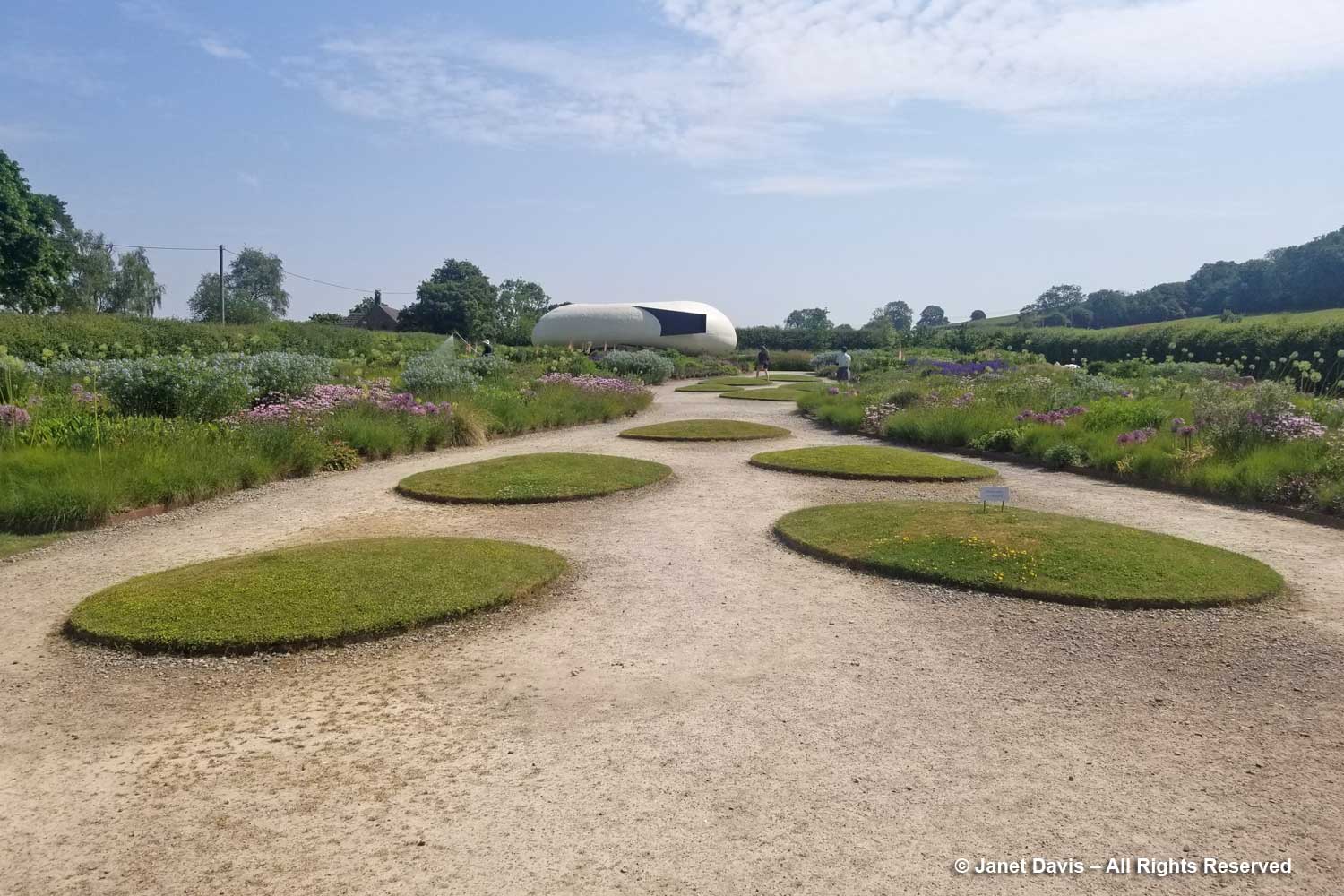
They are so unlike Piet’s characteristic naturalistic style, but in fact they point to his pragmatic design knowledge and site adaptability. (Yes, he designs woodlands and knows shrubs and trees as well as his favourite perennials!)
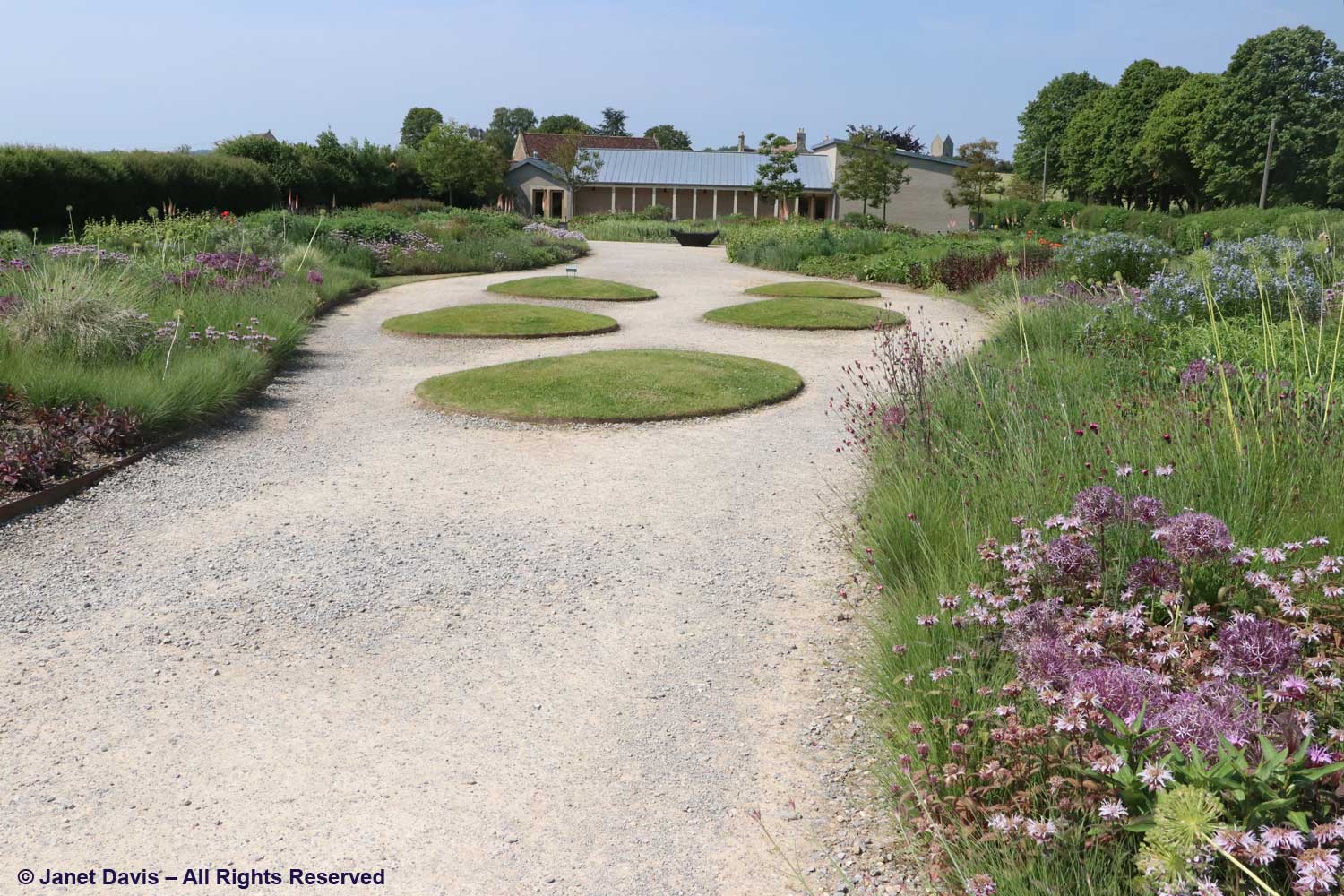
I was reminded in studying these circles of my own visit to Piet and Anja’s garden in Hummelo, Netherlands in 1999 which was designed in part to reflect one of his early Dutch influences, the great designer Mien Ruys (1904-99), the so-called “mother of modernist gardens”. Both his famous hedges and circle gardens, below, were his interpretation of what has been called “contemporary formalism” by his frequent literary collaborator Noel Kingsbury.
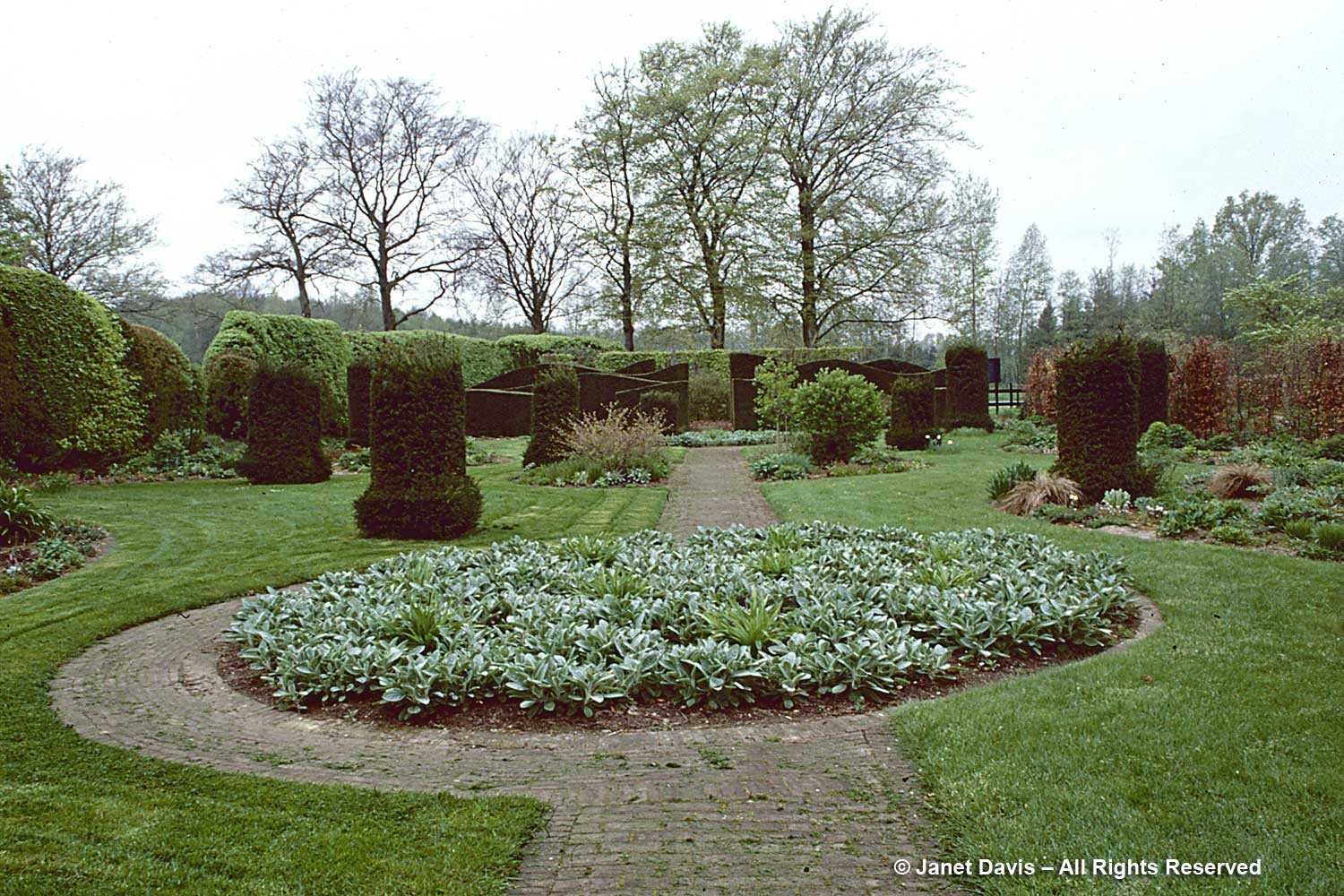
I feel very fortunate to have spoken with Piet then, at the beginning of his international fame. I made a photo of him at their outdoor table with spring-flowering shrubs in flower around us. Anja was in their nursery (gone now) with customers, and their little dog sat in a chair nearby.
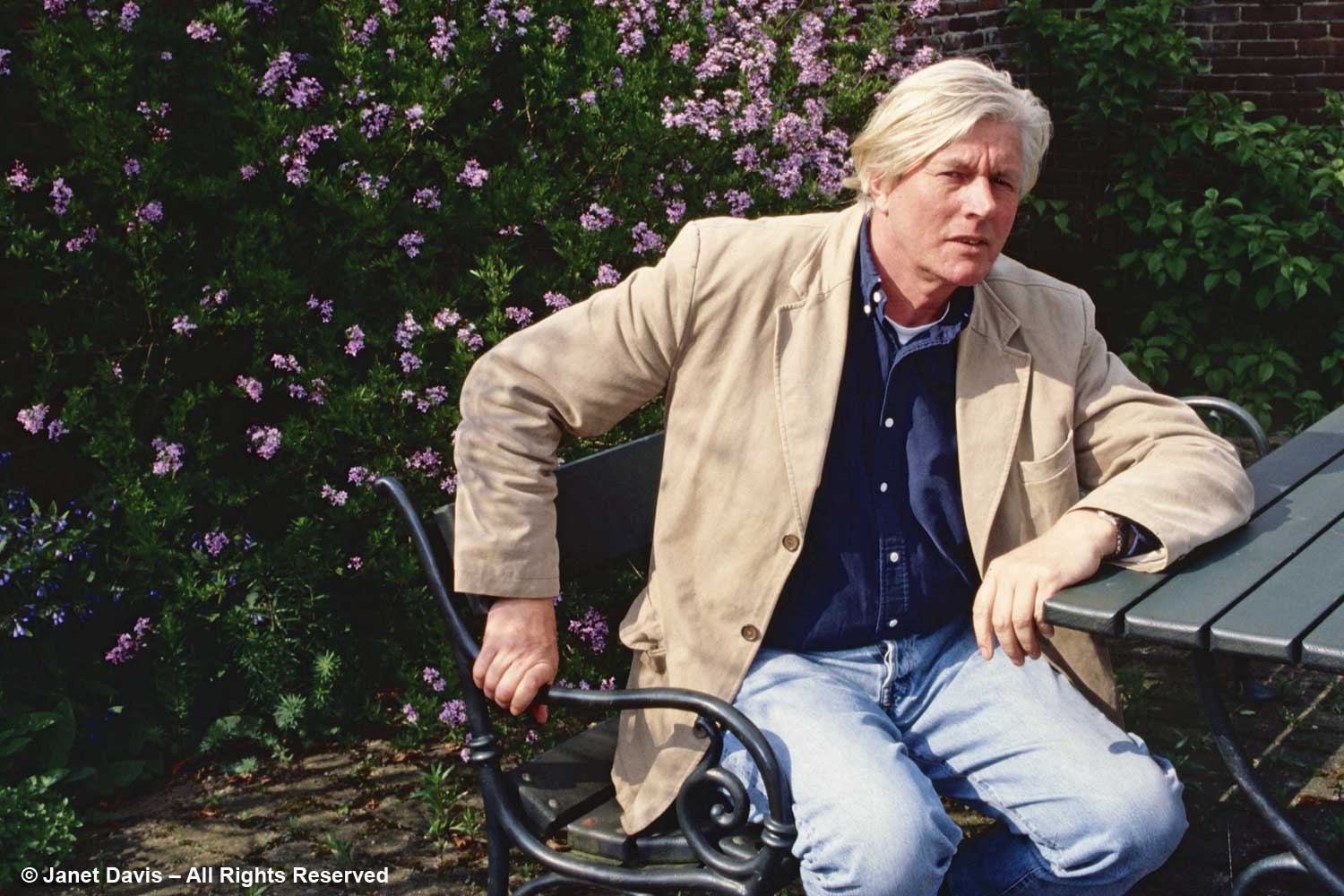
Back to Oudolf Field, the overwhelming mood here on June 9th was of soft pastel mauves and blues amidst the emerging green of the grasses and summer perennials. Eastern beebalm (Monarda bradburiana) native to the American southeast was in full flower in front of the blue blossoms of narrowleaf bluestar (Amsonia hubrichtii), a south-central American native that turns brilliant chartreuse-gold in autumn. Emerging through the grasses were the big starry globes of star-of-Persia allium (A.cristophii).
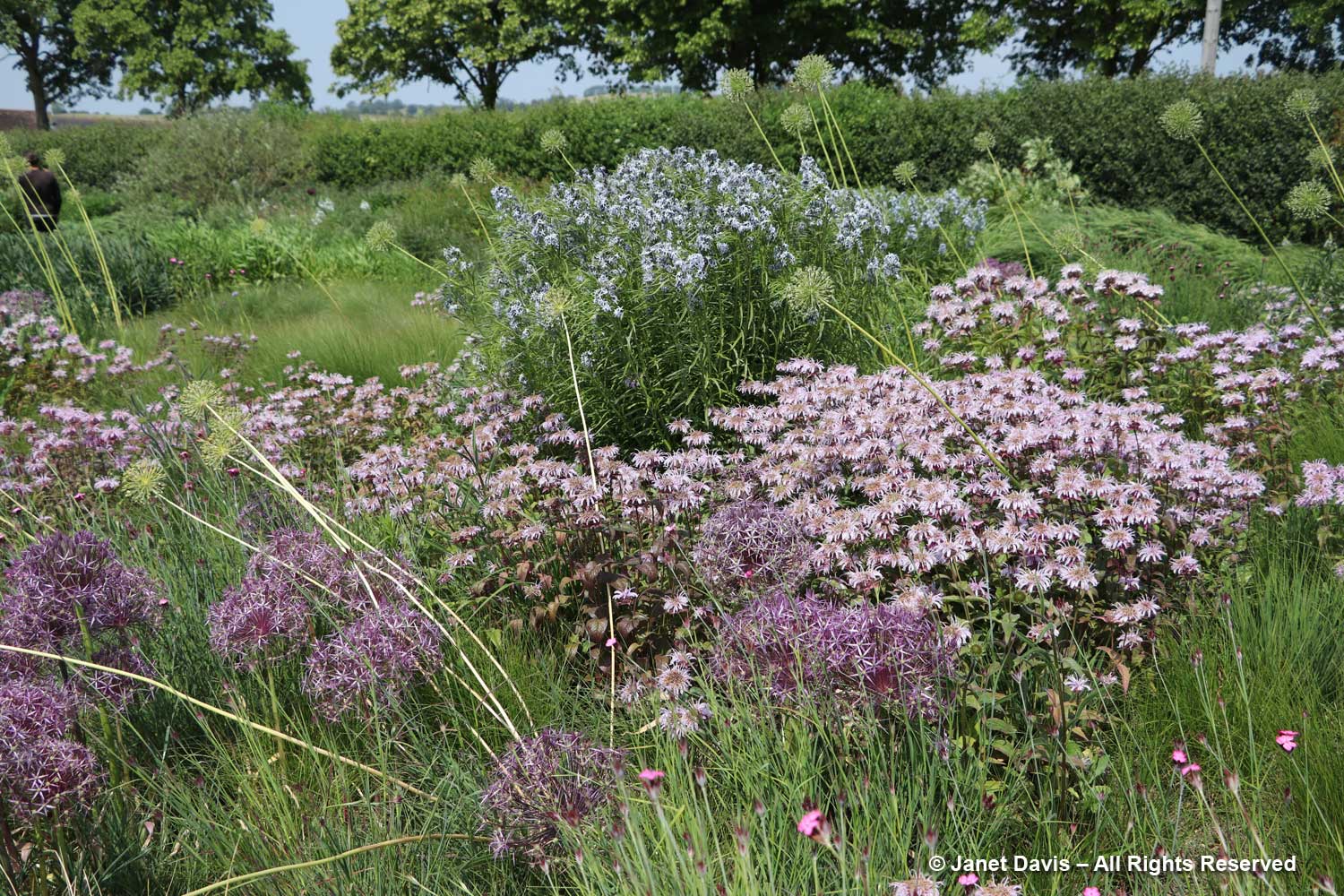
I had never seen Monarda bradburiana before spotting it in Piet’s design at the High Line years ago. Like many of the plants he uses – and sometimes introduces to commerce – it has withstood his field testing at Hummelo. This compact species has the good characteristics of the beebalms, including pollinator appeal, without the negative drawbacks, such as powdery mildew.
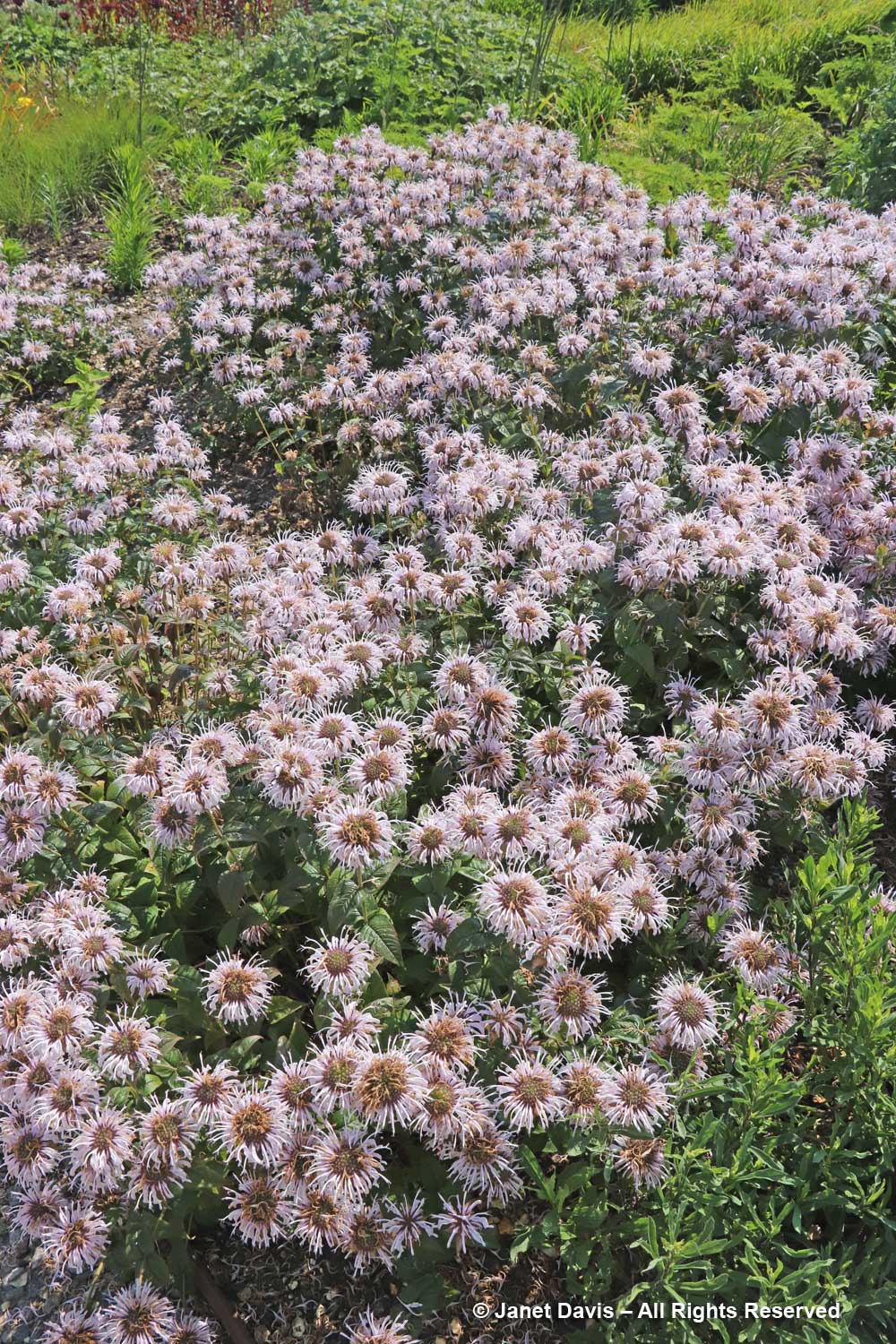
I saw tall Carthusian pinks(Dianthus carthusianorum) in almost every garden I visited in June, including Sissinghurst and Hillside, the garden of Dan Pearson and Huw Morgan.
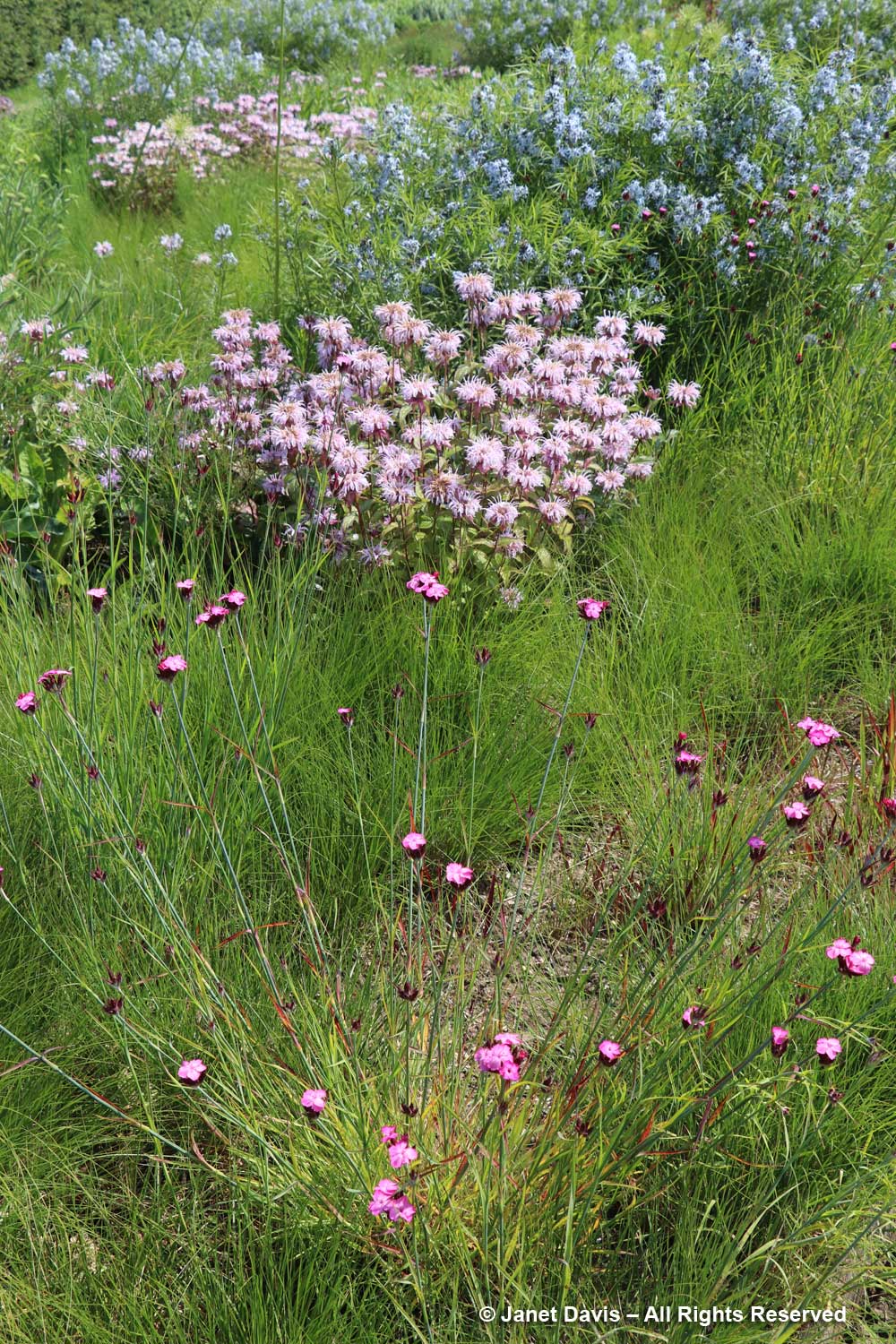
Early June, following the explosion of spring bulbs and before the summer abundance of flowering perennials is sometimes considered an “in-between” time in the garden. That quiet interlude is helped immensely by the many ornamental onions, and Piet uses them to great advantage in all his gardens, both for their flowers and later seedheads. Below, again, you see Allium cristophii along with the Corten steel edging used to delineate the beds.
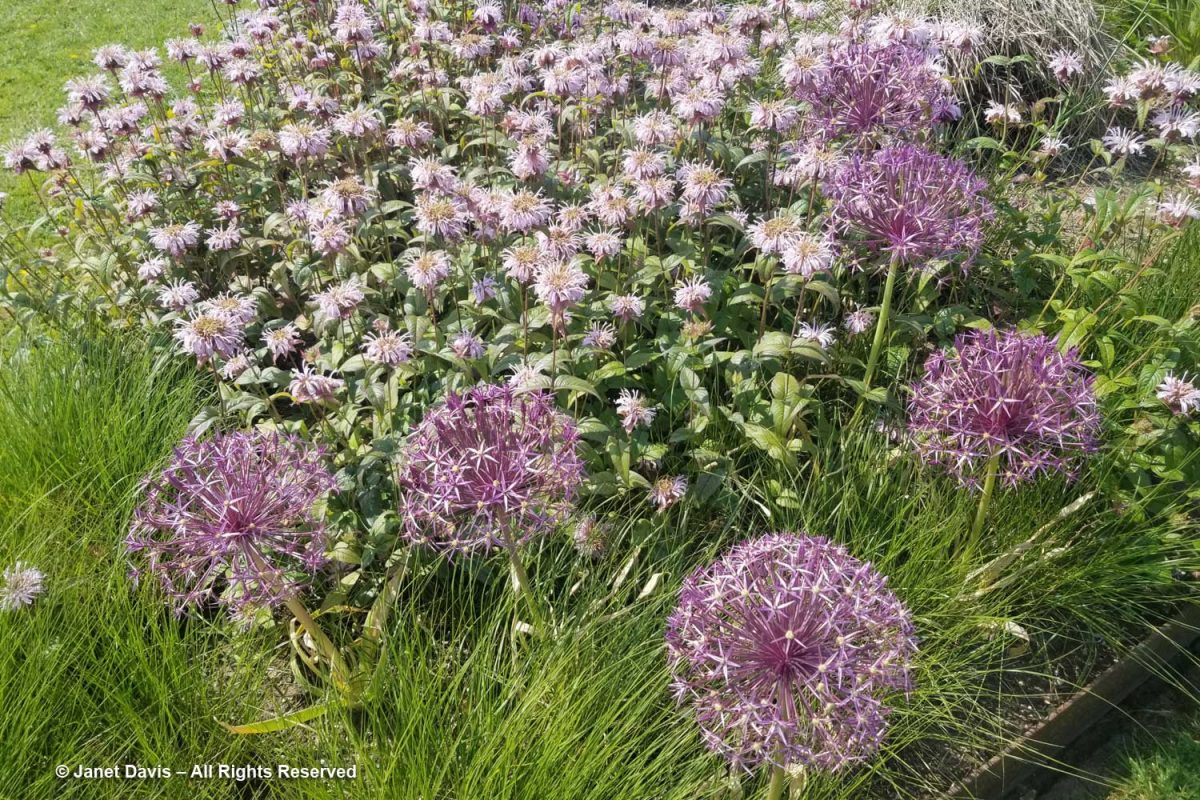
After seeing Allium atropurpureum, below, amidst grasses, I came back to Canada and immediately ordered some for my own June garden.
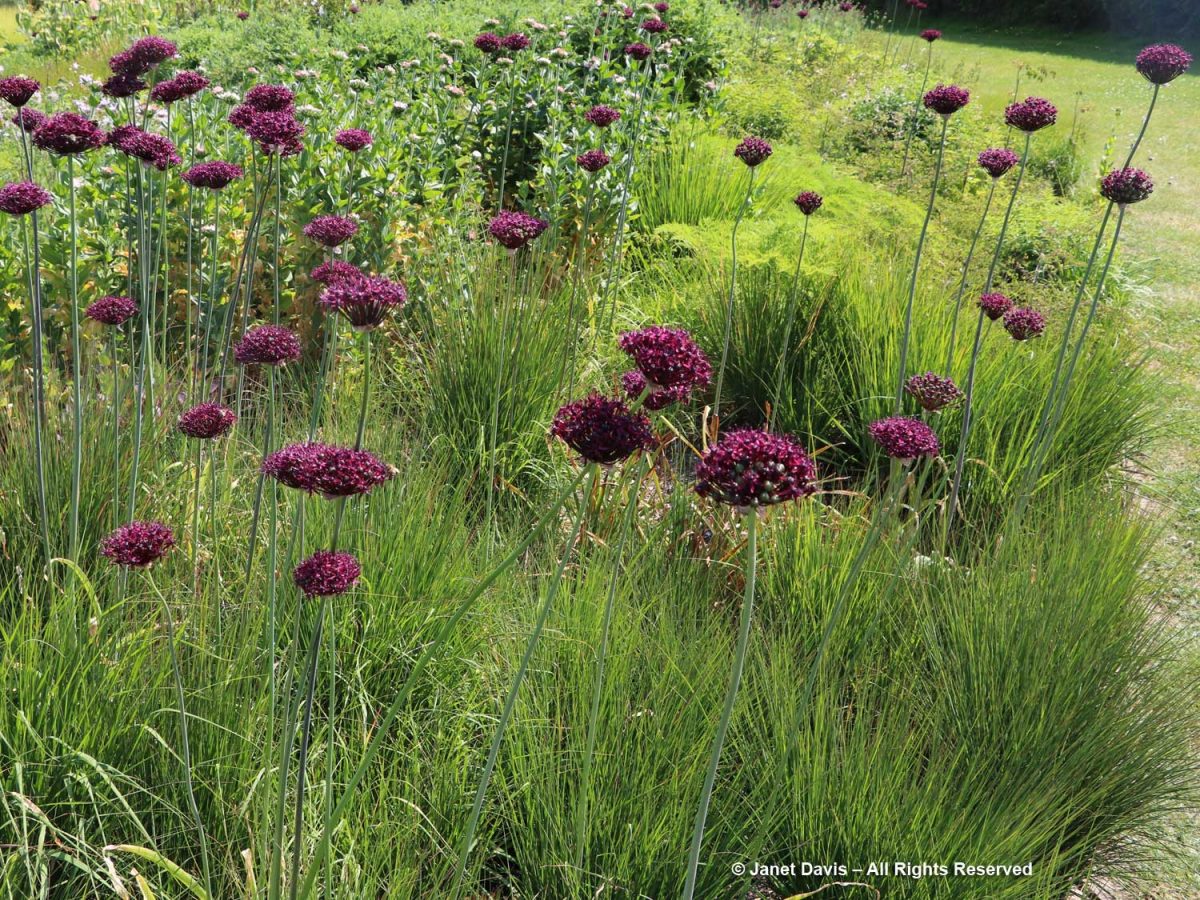
Here is Allium atropurpureum with Amsonia hubrichtii.
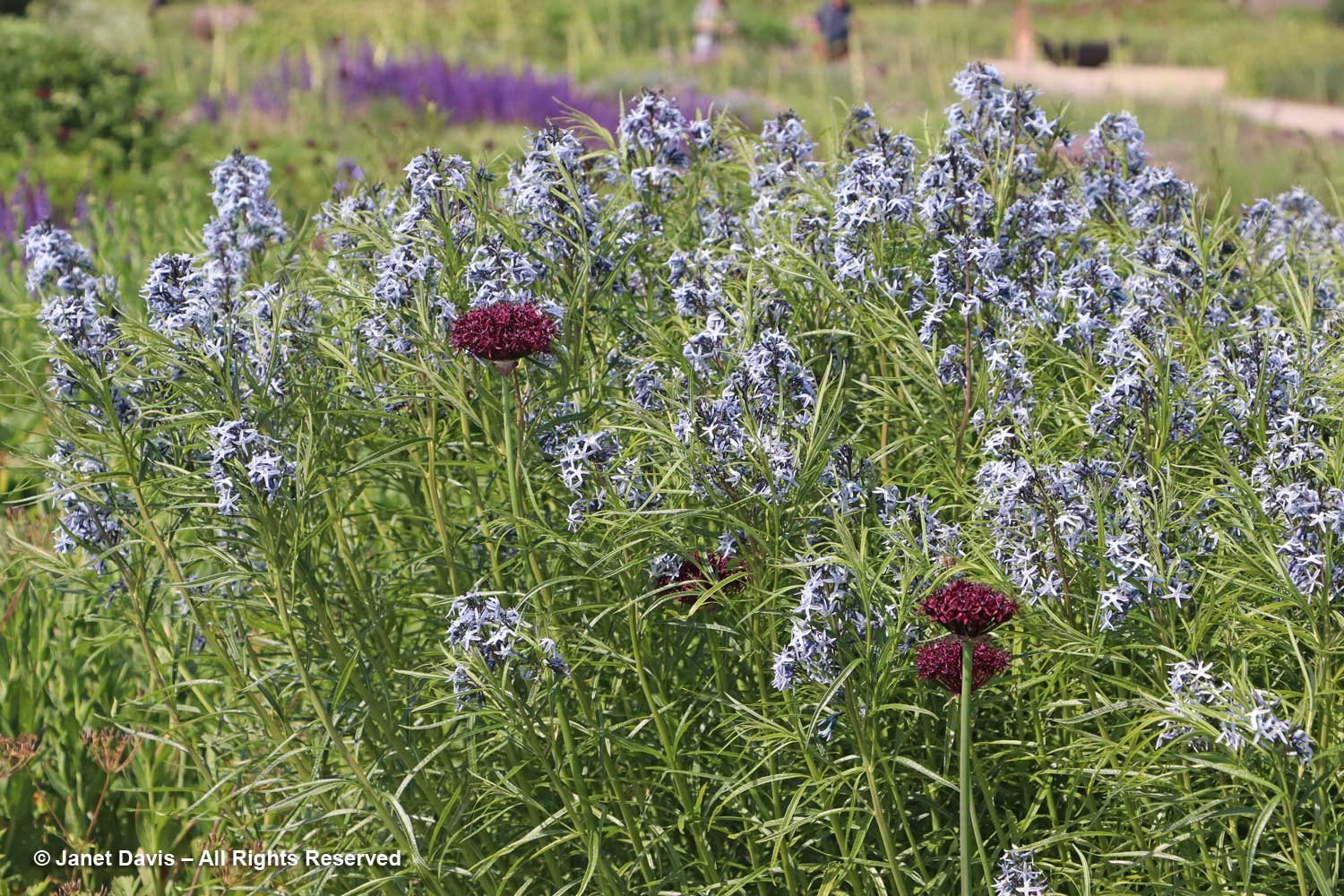
… and with Oenothera lindheimeri, i.e. gaura.
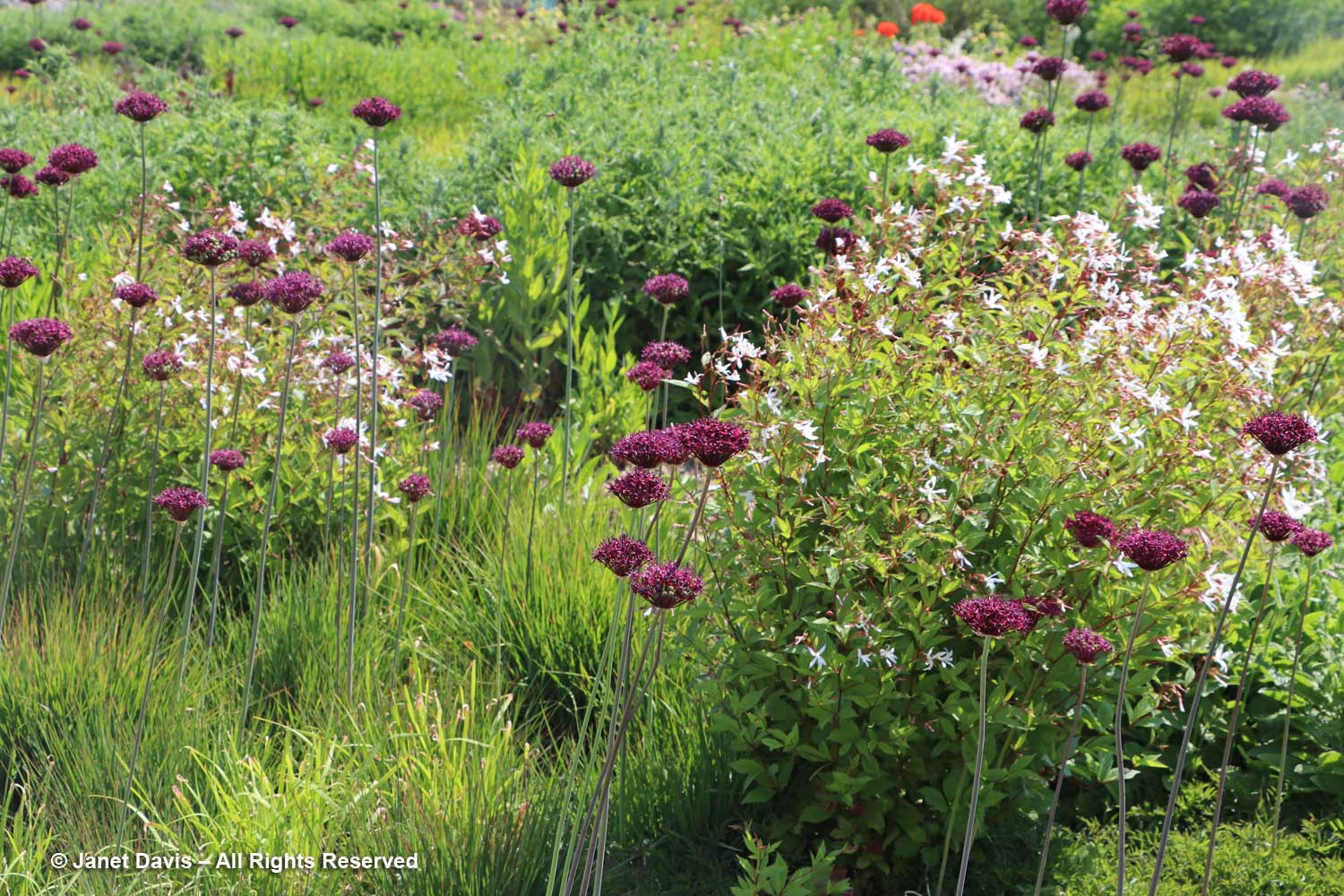
Looking back to the gallery through the gardens, including dark-leaved penstemons.
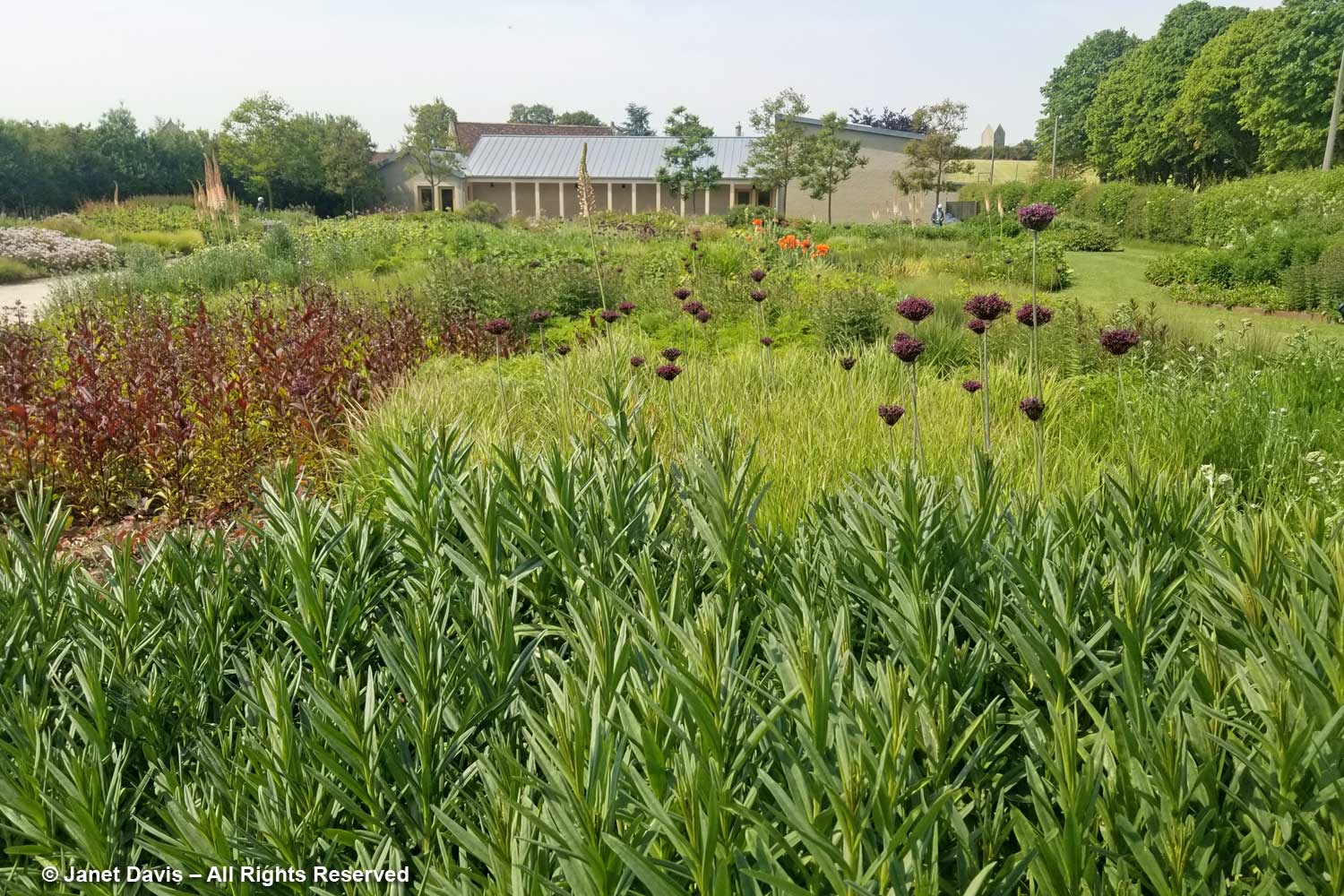
Piet uses various low grasses as matrix plants, including Sporobolus heterolepis, below, and Sesleria autumnalis.
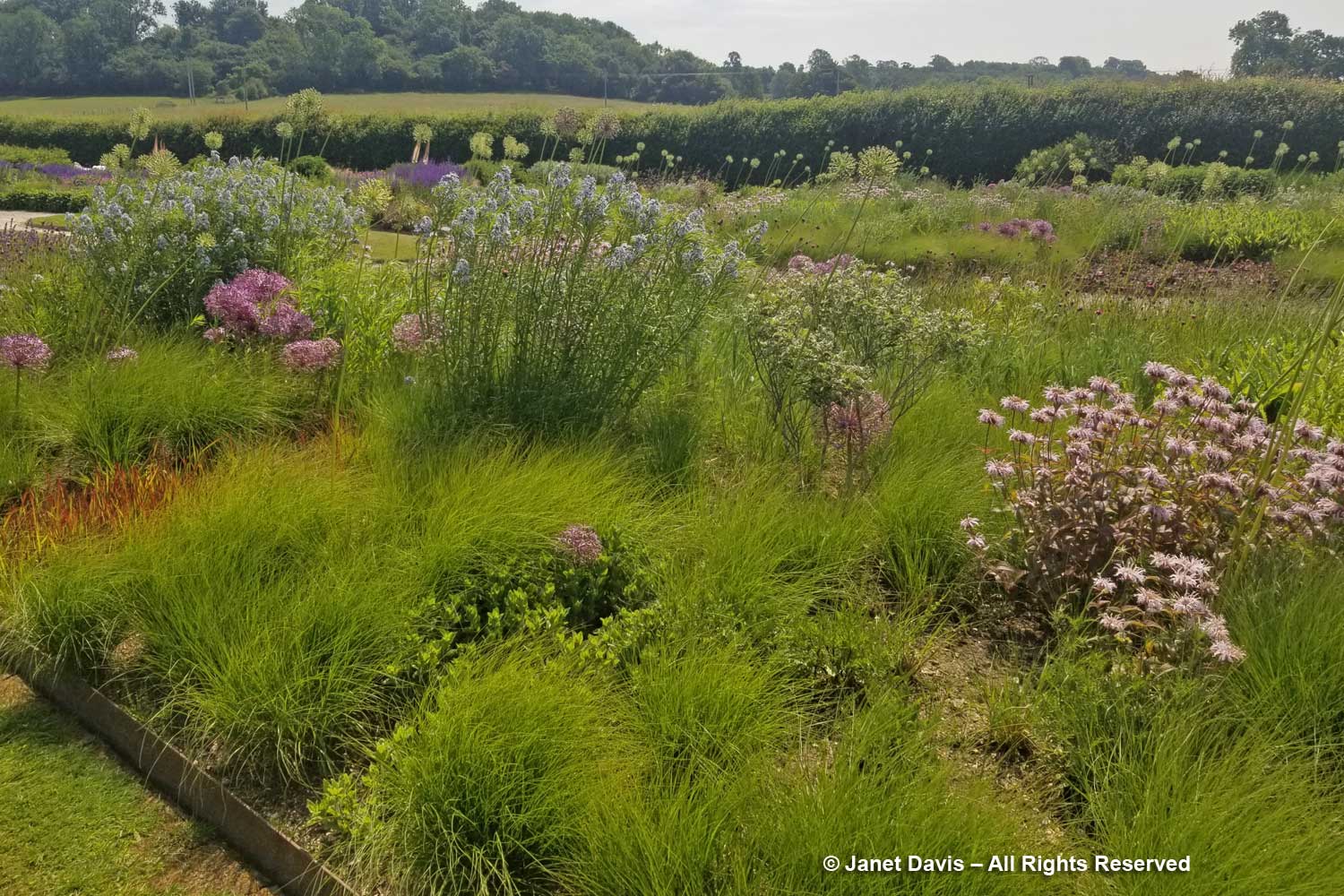
The weather was so warm the day we were there in this record-setting dry June, the assistant gardener was working full-time to water.
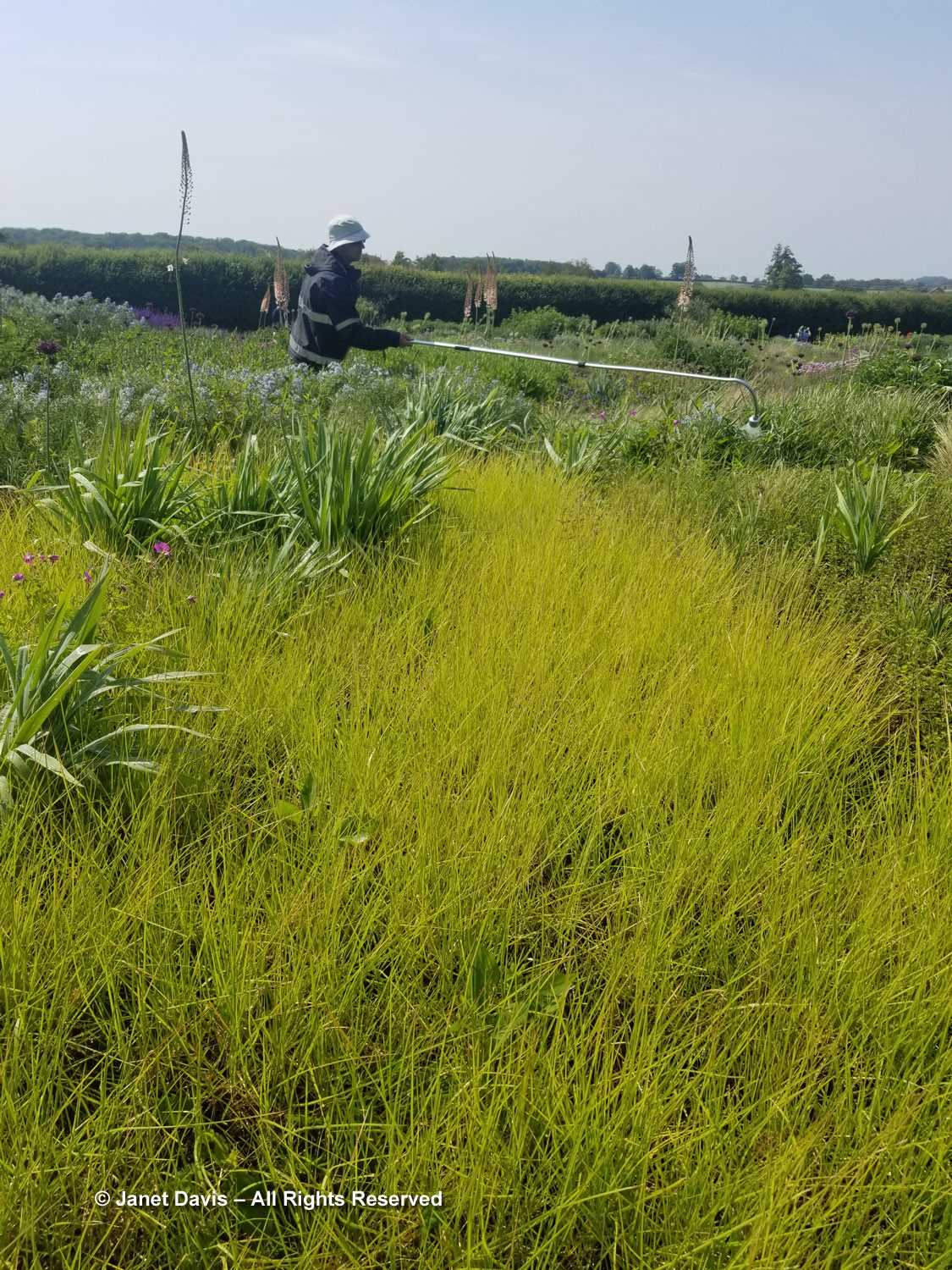
While the garden is situated within pre-existing hedges, Piet planted trees on the boundary to contain it further.
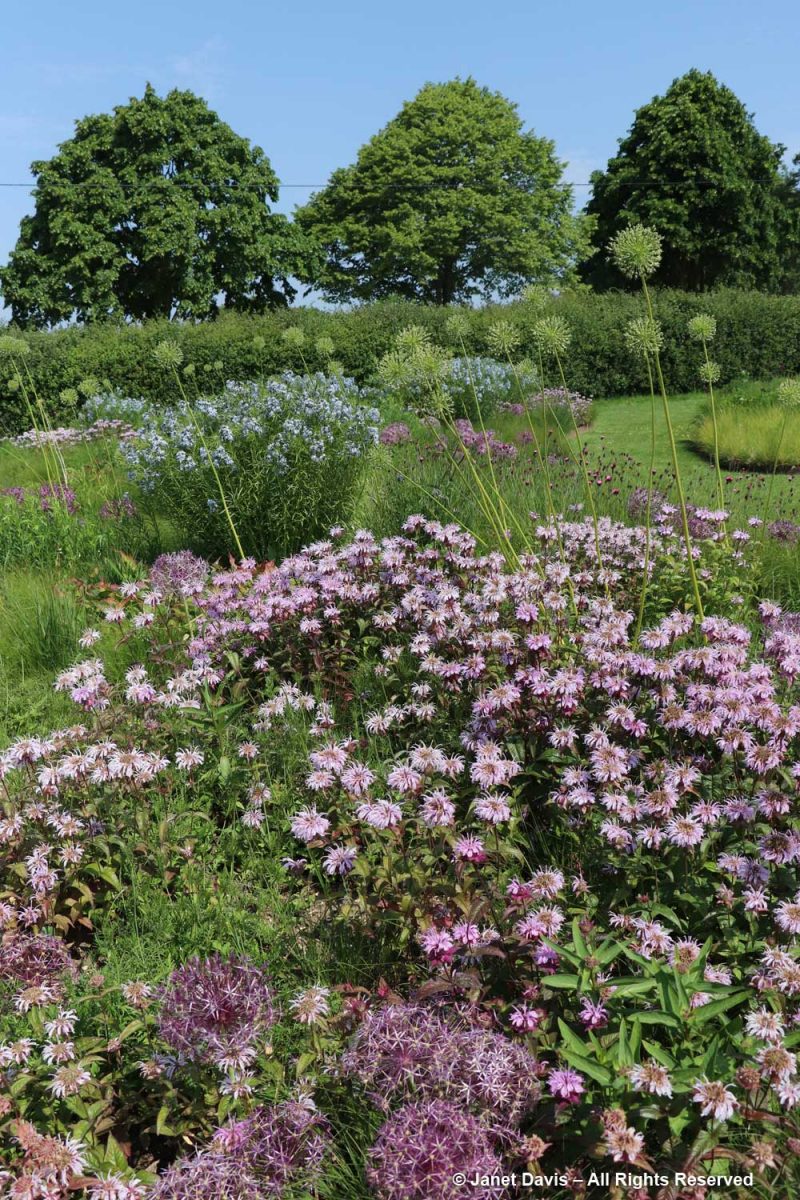
The Pavilion, designed by Chilean architect Smiljan Radić and installed in March 2015, sits at the end of Oudolf Field and is intended to “create a dialogue between the gallery complex and pavilion and their relationship with the garden”. Radić says it is “part of a history of small romantic constructions seen in parks or large gardens, the so-called follies.” Built of white, translucent fibreglass with cedar flooring and set atop large quarry stones, visitors can view the garden from within the shell.
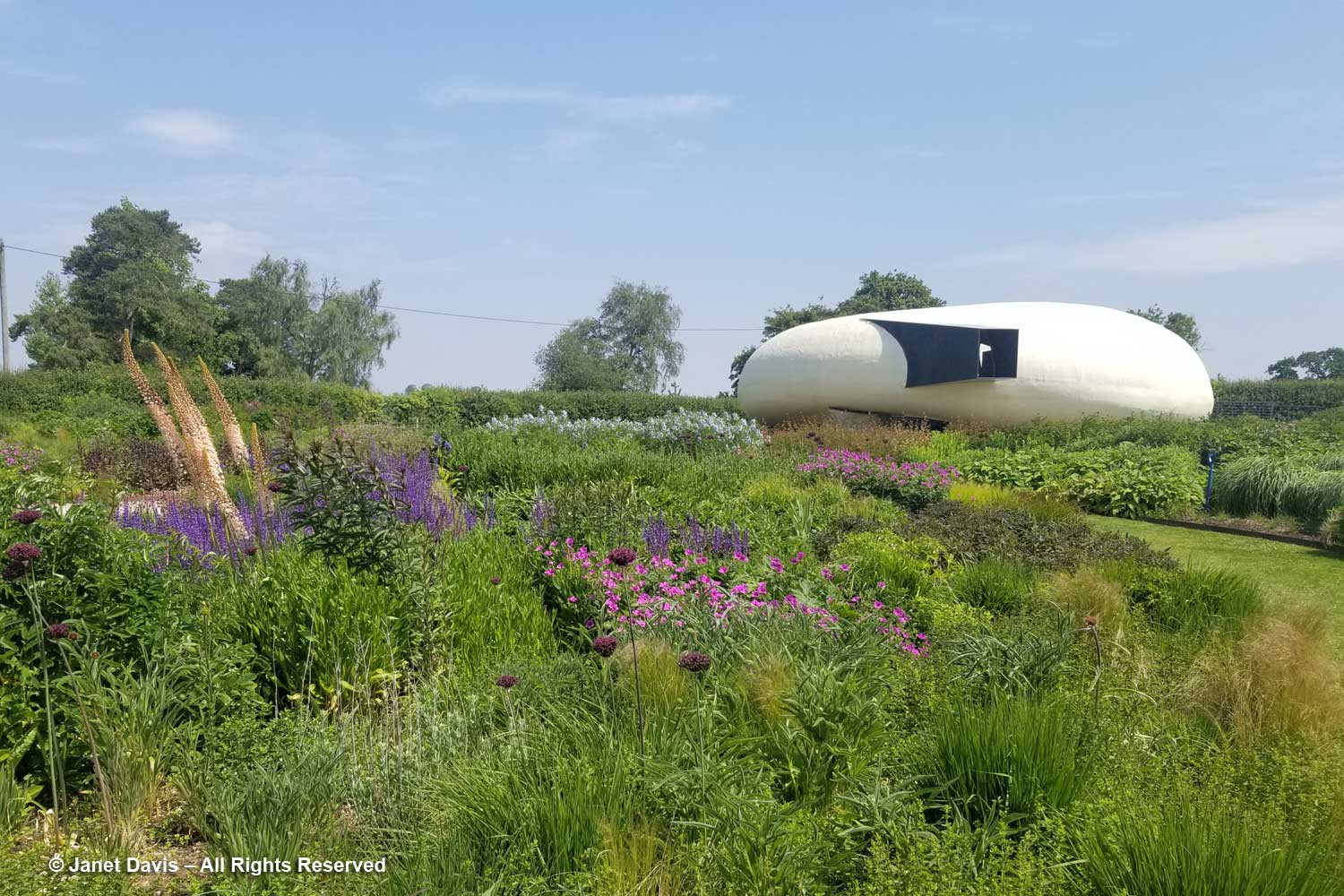
Heading into the gallery for lunch, I passed the attractive bar — a work of art in itself.
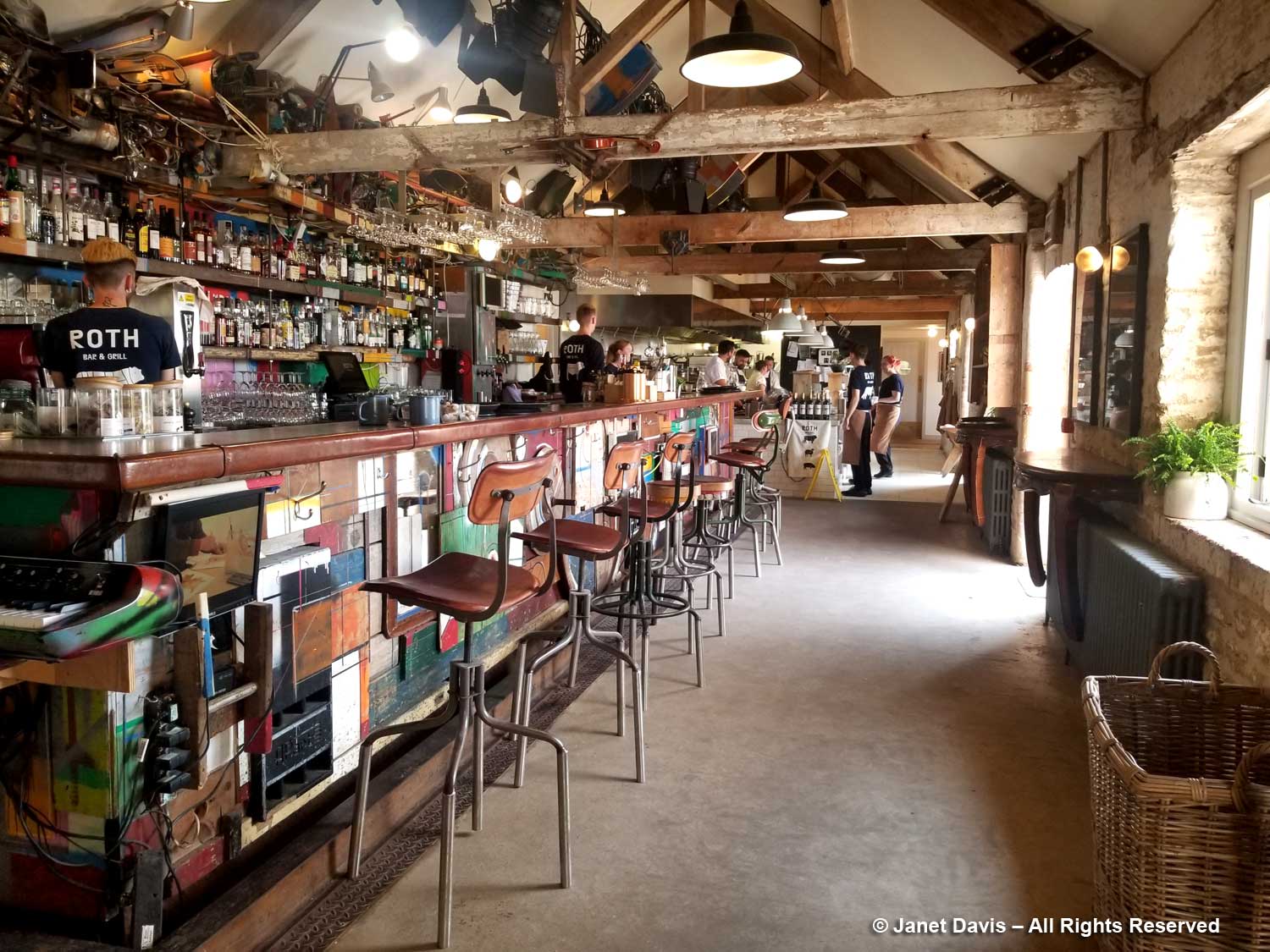
It was a lunch I would have enjoyed much more if I hadn’t been feeling the beginnings of what turned out to be my first case of Covid in more than 3 years– and the unexpected and sudden end later that night of my wonderful English garden tour. But I was so delighted to have experienced yet another masterpiece in the always-varied oeuvre of Piet Oudolf.

